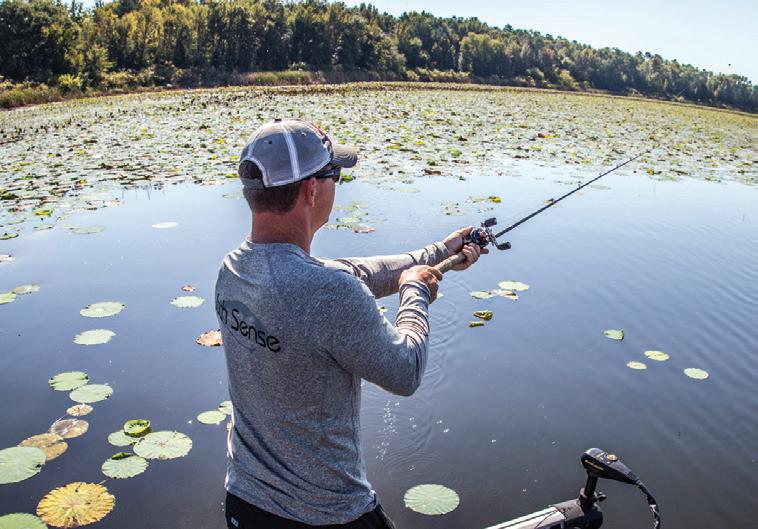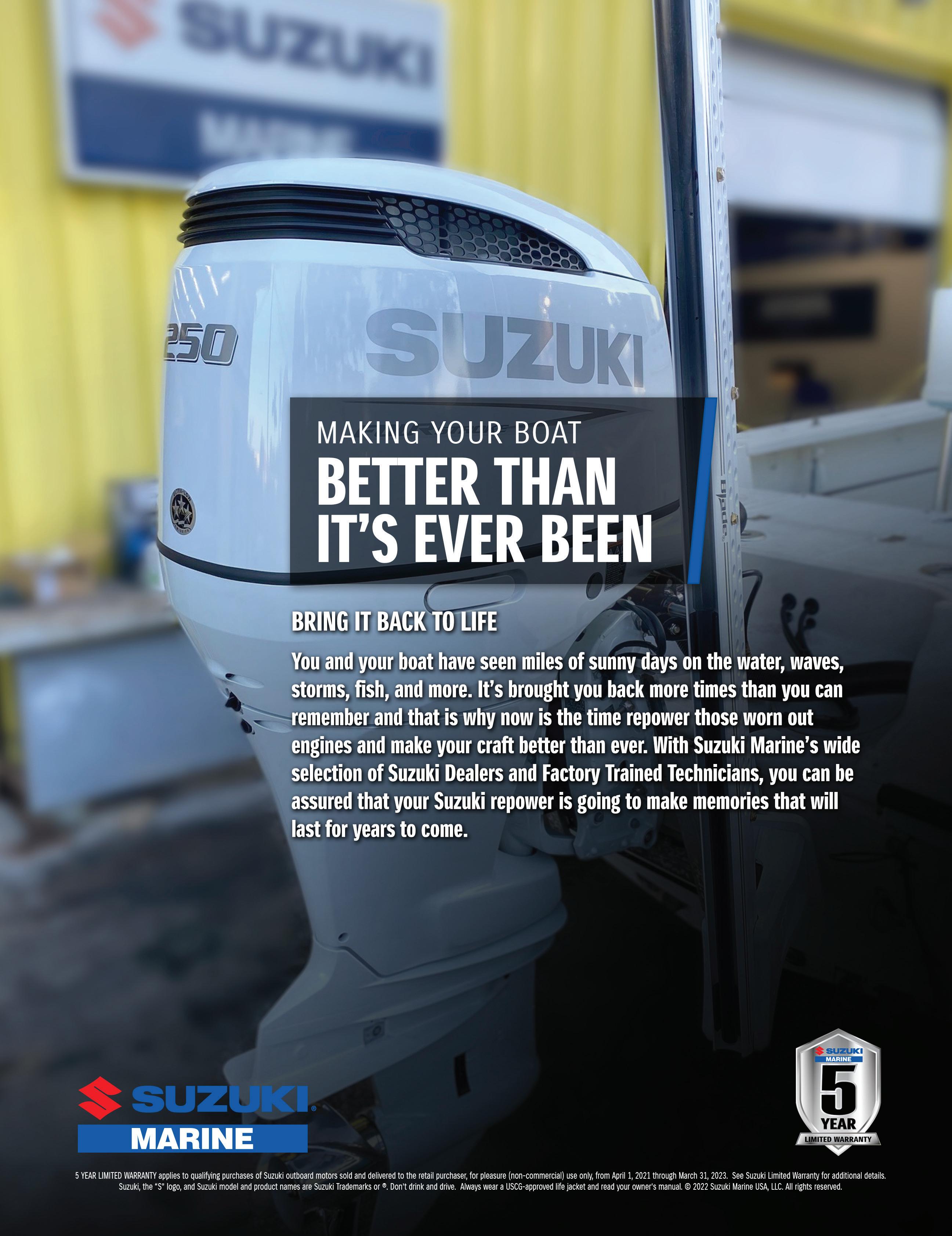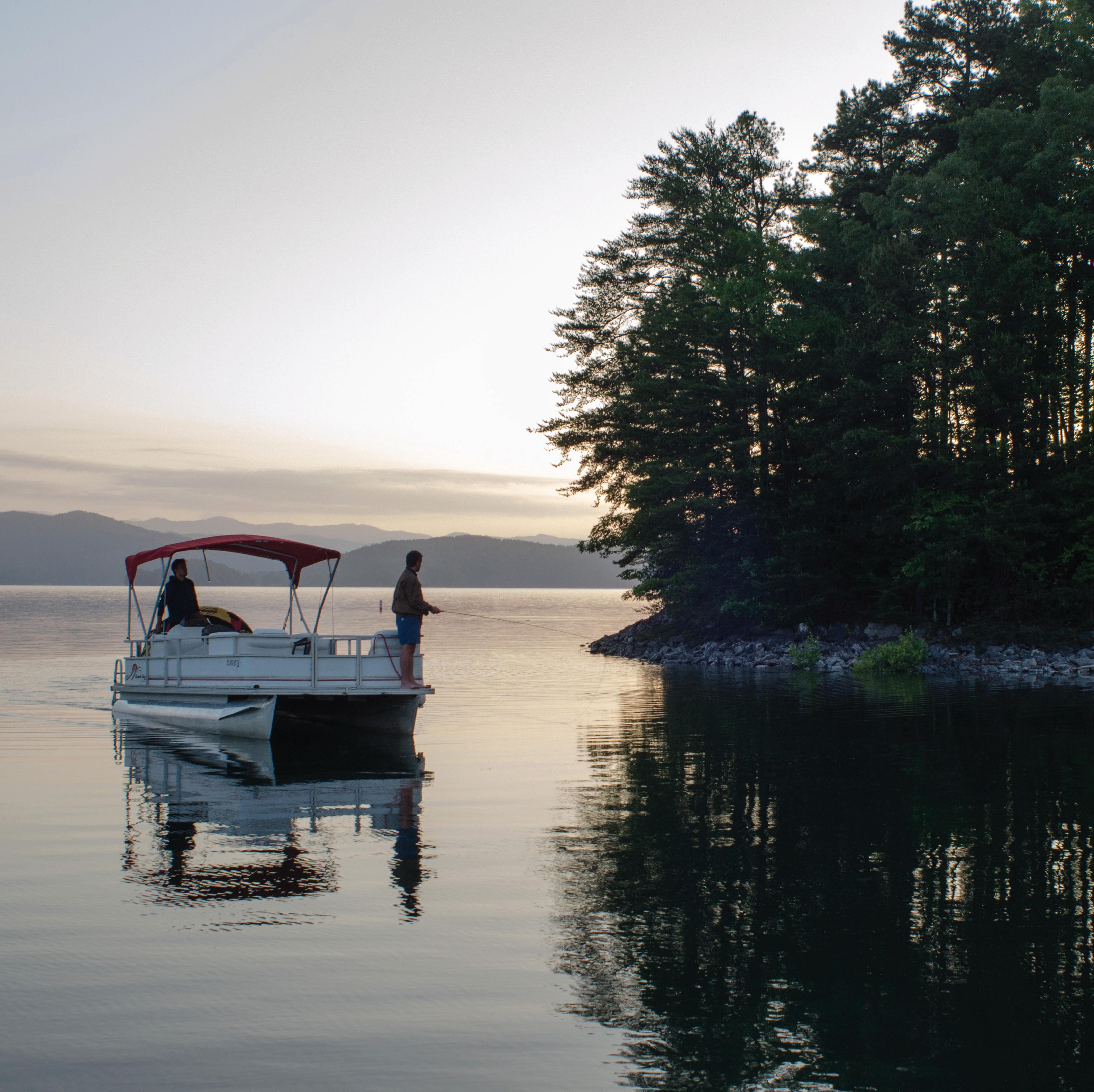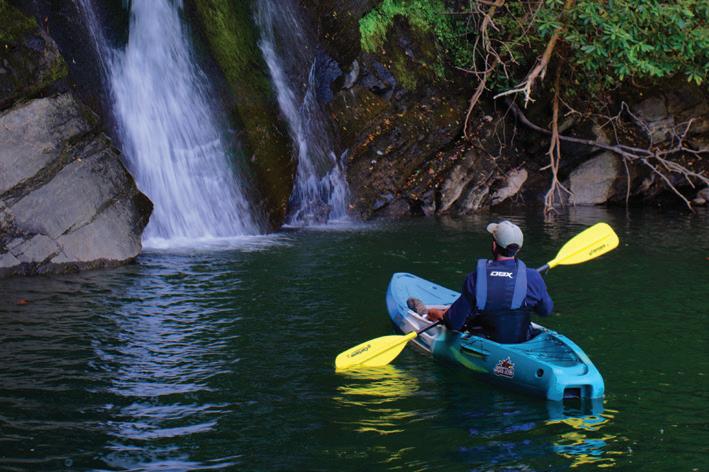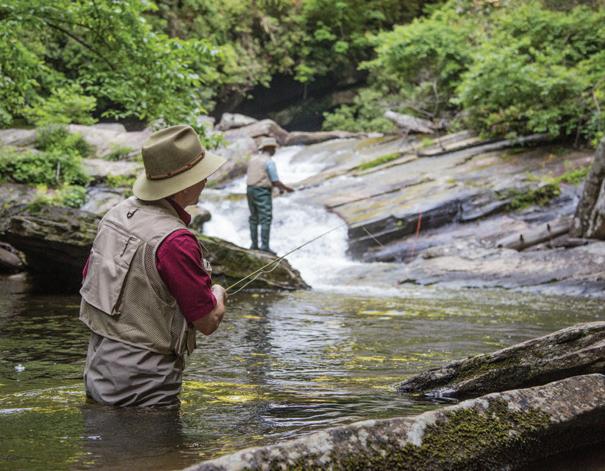


Home of world class fishing on the beautiful Watauga Lake, rugged Doe River and designated trophy trout stream, Watauga River






























Home of world class fishing on the beautiful Watauga Lake, rugged Doe River and designated trophy trout stream, Watauga River




























200-foot-deep structure.

Capt. Rick Croson, of Living Water Guide Service, showed Barefoot this bite for the rst time, and on that trip, they caught African pompano until they were tired of reeling them in as well as amberjack, dolphin and black n tuna. e widely accepted best way to catch African pompano is with a utter jig. However, Barefoot is never content with a tool or technique until he tries to nd a better way to do it.
“ ey are extremely susceptible to utter jigs, but the problem with those is the teaser assist hooks. We kept hooking them on the outside of the face with those wired stinger hooks,” he said. “With their thin, delicate skin, it’s tough to get a hook set. We were losing a lot of sh.” e technique Barefoot settled on is to use his own 4-ounce Squid Decoy Jigs.
For most anglers, African pompano are welcome bycatch on bottom- shing trips for other species. But restrictive seasons on standard structure-oriented o shore species like grouper and snapper have made African pomps a primary target. In terms of gameness and quality as table fare, some might argue they belonged near the top of the list the whole time. “ ey shut down grouper shing in January, and I’m not going to stop going o shore, so they’re the next likely candidate,” said Coastal Angler’s own Capt. Tim Barefoot. “ ey pull hard, they bite and they taste great. I’d put them
up in the top ve of my favorite sh to eat.”
African pompano school up on nearshore and o shore structure in late winter and early spring on the Atlantic and Gulf coasts. A couple of years ago, Barefoot was introduced to a ridiculously good bite for 15- to 45-pounders out of Wrightsville Beach, N.C., and what he learned might help you dial in the bite where you sh.
Cold water consolidates African Pompano to their comfort zone this time of year, and out of Wrightsville Beach anglers nd the magic 65- to 67-degree temps 45 to 60 miles out on 120- to

“African pompano are very close to the bottom,” he said. “We drop that squid down to the bottom and pull it up just a few feet. Sometimes you can just set it in the rod holder and wait for it to get slammed. Sometimes you might want to give some action, but don’t overdo it. Squid are their primary food source. When they see it, they’re not shopping… they’re buying.”
Barefoot uses 40-pound braid to an 80-pound uorocarbon leader. He ties on his jig with a loop knot. e thing about squid is sh always attack them from behind to disable their beak. Barefoot said sh take the squid jig deep, and the result is a solid hook set in the mouth.
Find Capt. Rick Croson at livingwatersoutdoor.com and check out the Squid Decoy Jig at barefootcatsandtackle.com.

With big trout on my mind, I hooked up the boat and headed to deep south Texas. An approaching cold front was going to shorten my trip to a single day, but I felt con dent it would be worth the 5-hour drive. As the cold front swept across north Texas, my anticipation was high as I headed south to warmer temperatures and extra hours before the frigid air and high-powered north wind turned a nice winter’s day into artic conditions.

e morning greeted me with calm winds and dense fog, which is not typical south Texas
weather 14 hours prior to the strongest cold front of the year. e norm is 25 knots from the south or southeast with a storm of this magnitude on the doorstep.
I headed to my pre-determined location at a safe speed considering the conditions. I was in no hurry, as the prime bite was not until 10 a.m. e forecast was sunny, calm and 70 degrees for the day, followed by north at 35 knots and a low of 28 the next morning. I was certain the approaching weather would have the bite red up, and it did not disappoint. e sh didn’t feed on everything
I tied on, but once I homed in on what they wanted it was nonstop!
I pulled up to a favorite cove, positioned the boat well outside the prime area and quietly slipped into air-clear, knee-deep water of the grass at. I had a 5-inch paddletail ready at the end of my rod. A er covering the prime area with only one follow by a small red, it was time to change. I downsized to a 3.25-inch paddletail with a light purple back and a pearl belly. As I looked up a er rigging my lure, I spotted a huge trout about 5 yards in front of me. She was there for several seconds and then slowly disappeared. I knew she was aware of my presence even though she didn’t spook, and I didn’t have high hopes of catching her, but I did try. I was excited knowing my plan had me in the area of the trophy-size trout I was targeting.
I noticed nervous mullet about 40 yards away and slowly made my way in that direction. It was nonstop action on reds in the 26-inch range, and I caught one 3-pound trout. ese sh were a little deeper in thigh-deep, crystal-clear water over grass and potholes.
roughout the day, I tossed three sizes of similar body-style paddletails, all with built-in tail rattles. e smallest, a 3.25-inch lure, was the only one that caught sh. I used three di erent colors, so it was only the size that mattered on this day under pre-front conditions. Although I did not land the big trout I was targeting, I am satis ed that I was in the right place and will go back soon.
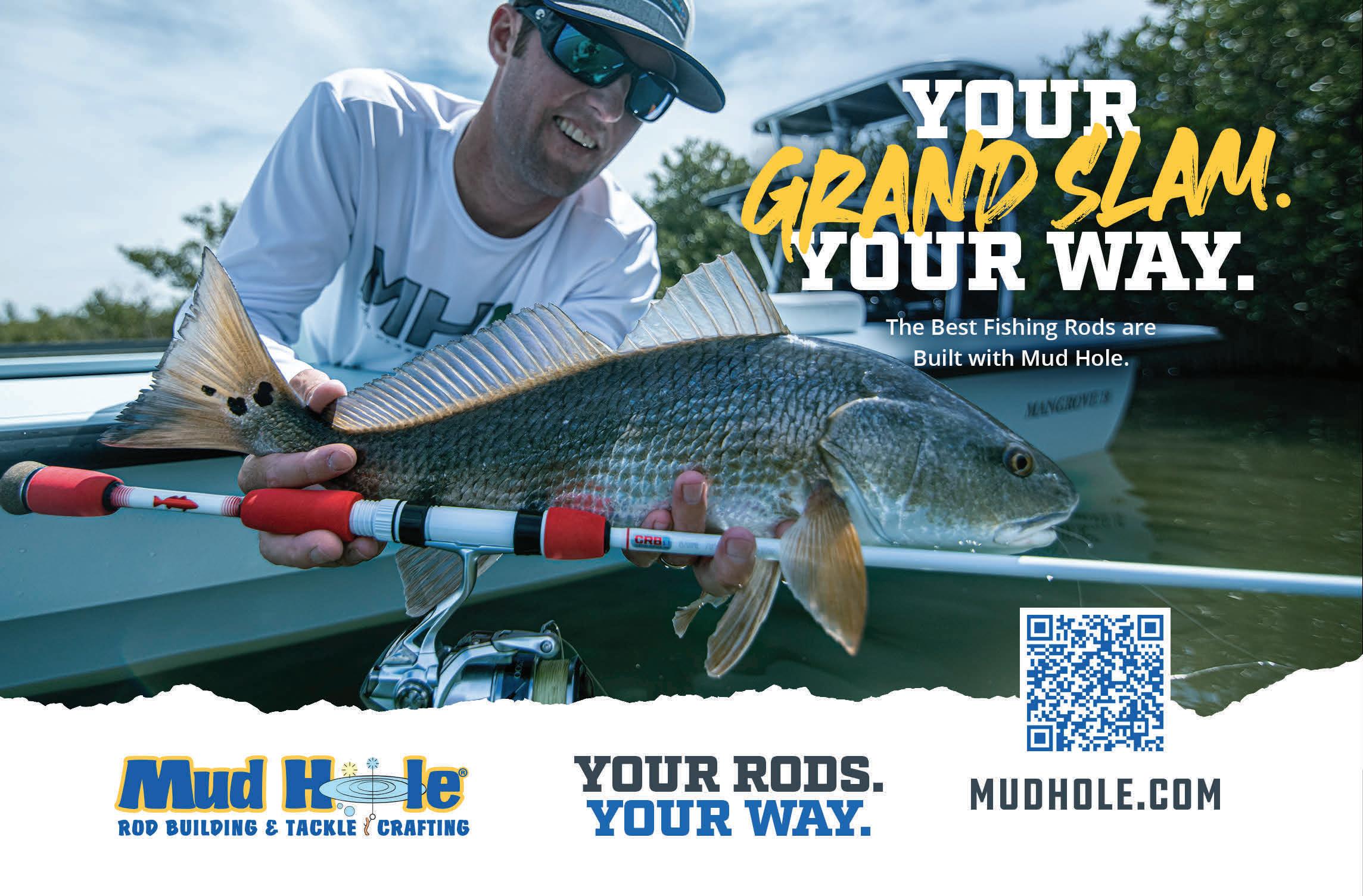

Next time something slithers too close, be prepared!
Some years ago, my girlfriend and I visited the Southwest town of Sedona. It’s a wonderful place. While jewelry stores, art galleries and upscale boutiques have crept into Sedona’s downtown, the air still maintains an electric charge. In one of these Sedona stores I acquired a Bowie knife that soon proved well worth the sticker price. Disappearing into the stunning red rock formations that Sedona is known for, my girlfriend and I set out to hike Bell Rock, a butte just south of that famous desert town. We couldn’t have been happier.
Our happiness didn’t last long. Before we knew it, we stumbled upon a rather nasty diamondback rattlesnake. Acting quickly, I pulled my Bowie knife out of its holster and gave Mr. Snake a quick shave. We were lucky. Not only did my skill with a knife ensure our safety, but I had the makings for a new rattlesnake belt.
79 Stauer®Impossible Price
The next time something slithers too close, make sure you’re prepared with the Diamondback Bowie Knife. This 12" knife comes with a high quality 420 surgical grade stainless steel blade. The handle is made of genuine natural bone that’s been hand carved in the pattern of a diamondback. Completed with brass handguards, spacers and end cap and accessorized with a genuine leather tooled sheath, this is one blade a mamba won’t want to mambo with.

What’s more, while supplies last, we’ll include a pair of $99 8x21 power compact binoculars FREE when you purchase the Diamondback Bowie Knife. Simply put, this offer is an incredible bang for your buck. Act now: We only have 271 knives left for this ad!
For your next adventure, don’t rely on some wimpy pocketknife to protect you from danger. Get the Diamondback Bowie Knife and come away with a story instead of becoming a snack.

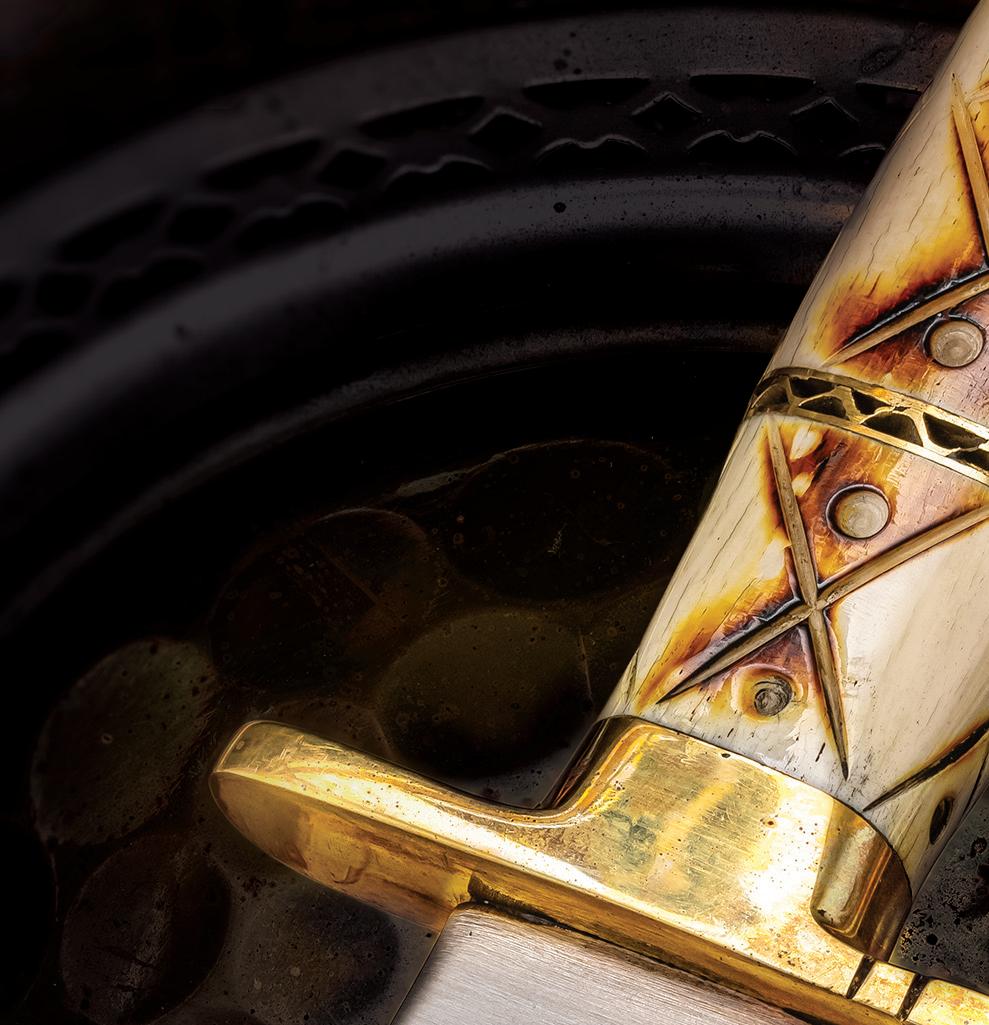
Knife Specifications:
• 12" overall length
• High quality 420 surgical grade stainless steel blade
• Hand carved genuine natural white and brown bone

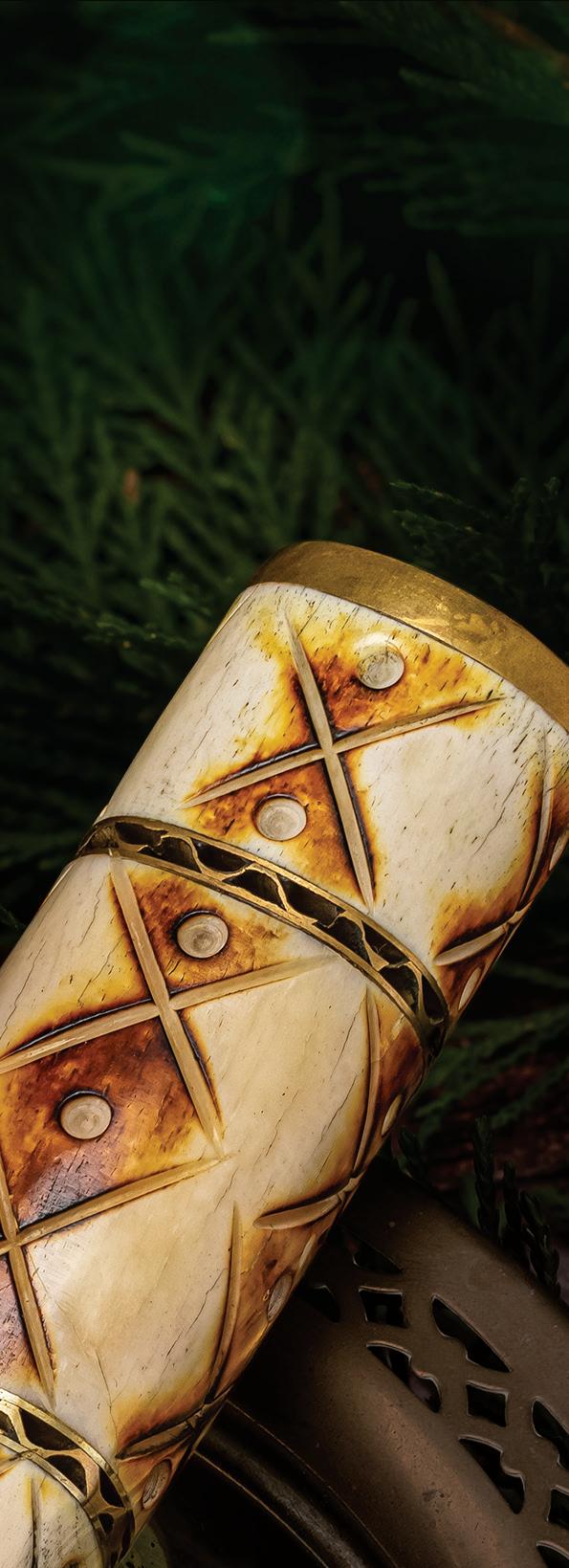
• Brass handguards, spacers and end cap
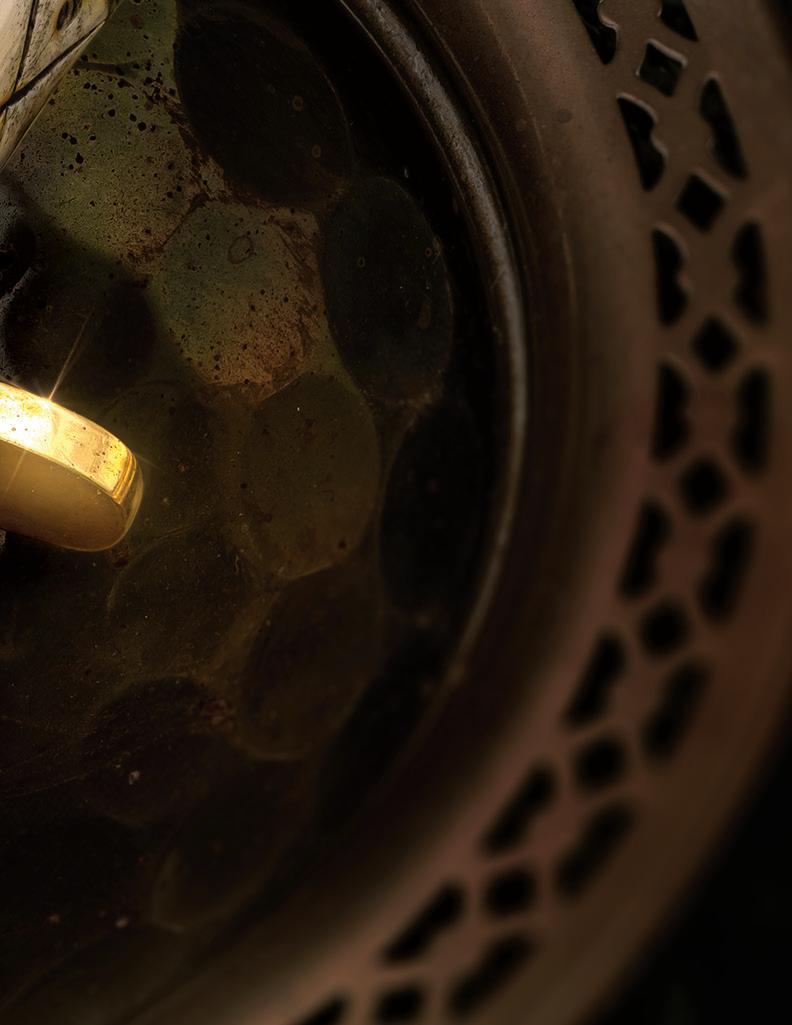
• Genuine leather tooled sheath included
Diamondback Bowie Knife
$249 $79* + S&P Save $170
California residents please call 1-800-333-2045 regarding Proposition 65 regulations before purchasing this product.
*Special price only for customers using the offer code.
1-800-333-2045
Your Insider Offer Code: DBK126-01
EXCLUSIVE FREE Stauer 8x21 Compact Binoculars a $99 value with your purchase
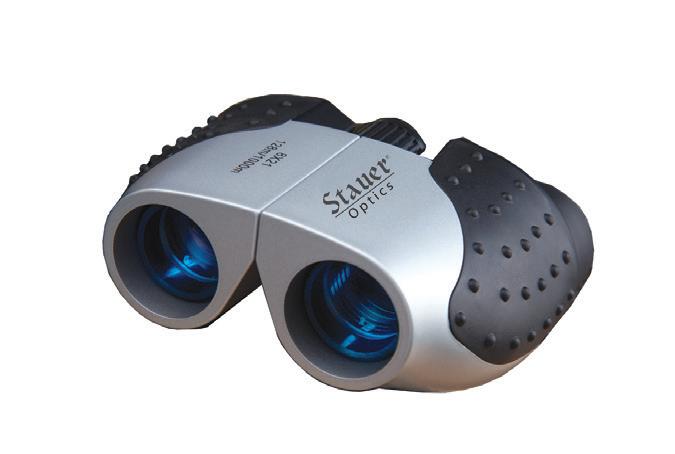
What Stauer Clients Are Saying About Our Knives
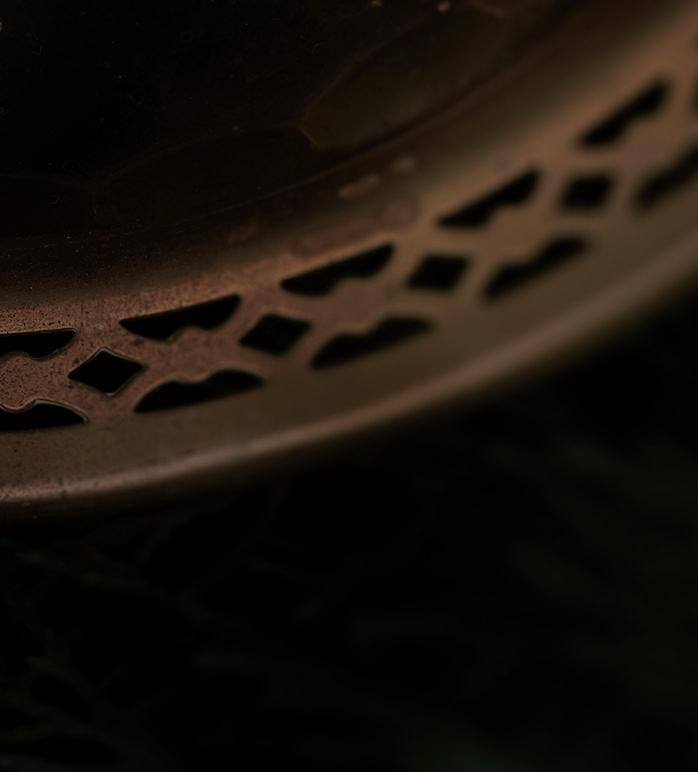


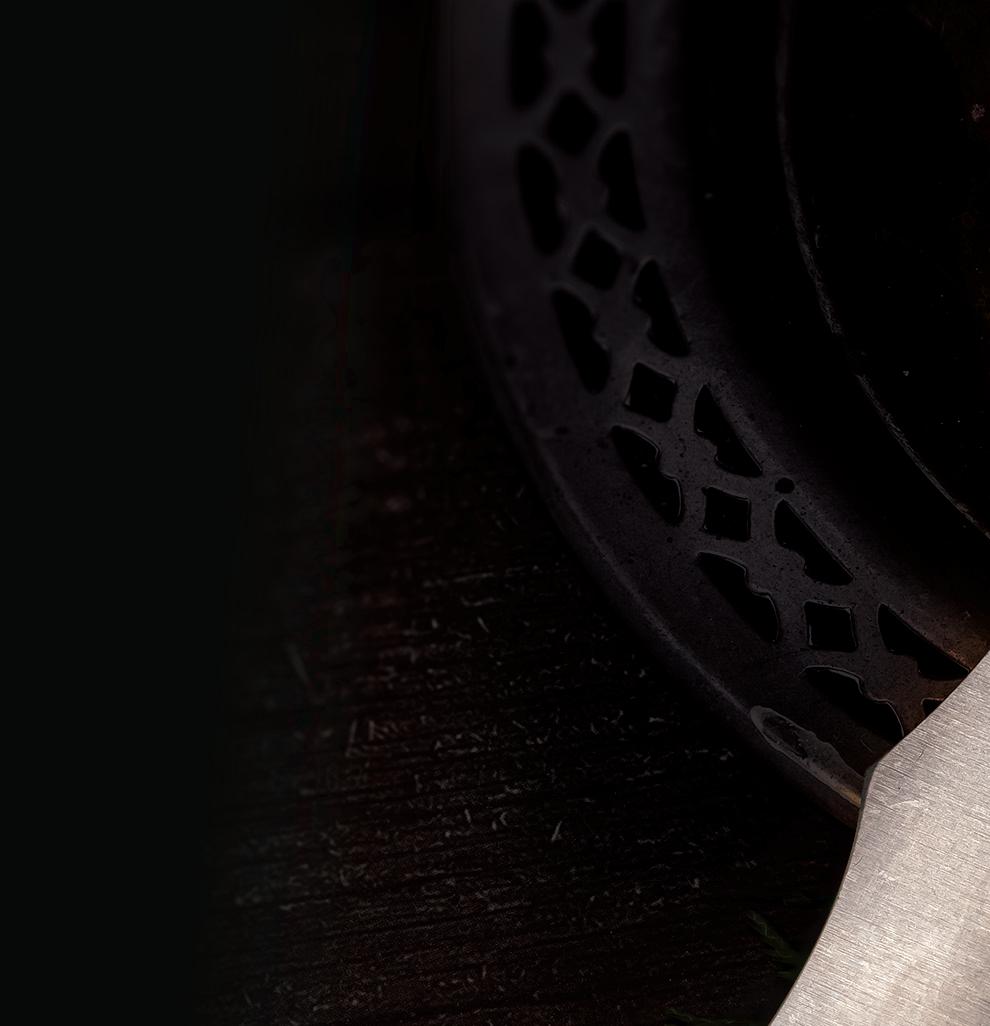

“The feel of this knife is unbelievable ... this is an incredibly fine instrument.” — H., Arvada, CO
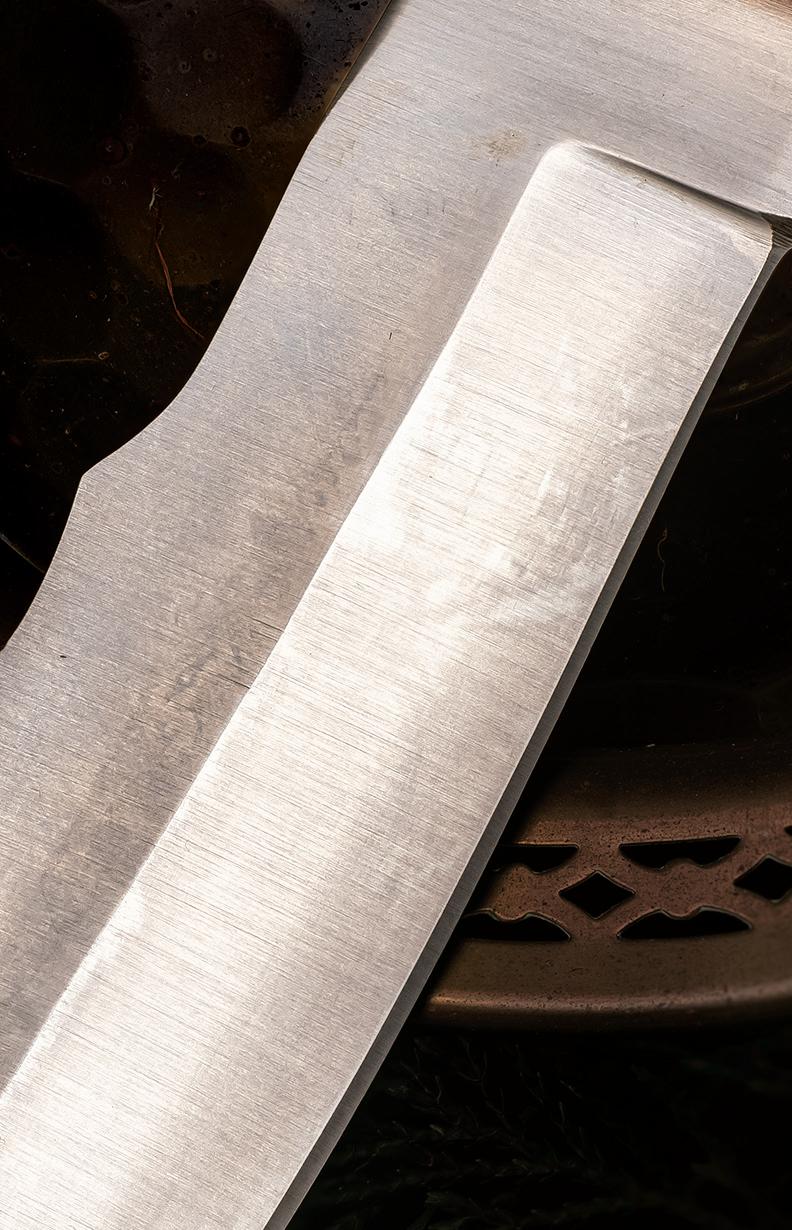
“This knife is beautiful!” — J., La Crescent, MN
®

















 By David Hulsey
By David Hulsey
Asingle-handed y rod, which you might refer to as a “normal” y rod, is the tool of choice for most anglers seeking trout or other species on our inland rivers. But I’m here to tell you there’s a revolution building steam. Don’t be surprised when someone on your local river shows up wielding a two-handed spey rod. ese long rods are gaining popularity because they o er certain advantages.
For centuries, two-handed spey gear has been used only in pursuit of big anadromous sh such as salmon or steelhead on the huge coastal rivers of many continents. However, in the last decade or so, micro or trout spey rods have found their way into the hands of anglers. is smaller trout-sized spey gear opens the door for shing areas and for species that inhabit some of our beloved rivers and mediumsized streams.
If it lives in moving water, it can be caught with spey gear. Trout, of course, are the main quarry, but other sh such as smallmouth, spotted bass, largemouth, white bass and stripers are also fair game. Smaller-sized spey rods in 4-, 3-, or even 2-weight sizes are extremely e ective tools for reaching sh in big water with dicey wading areas.

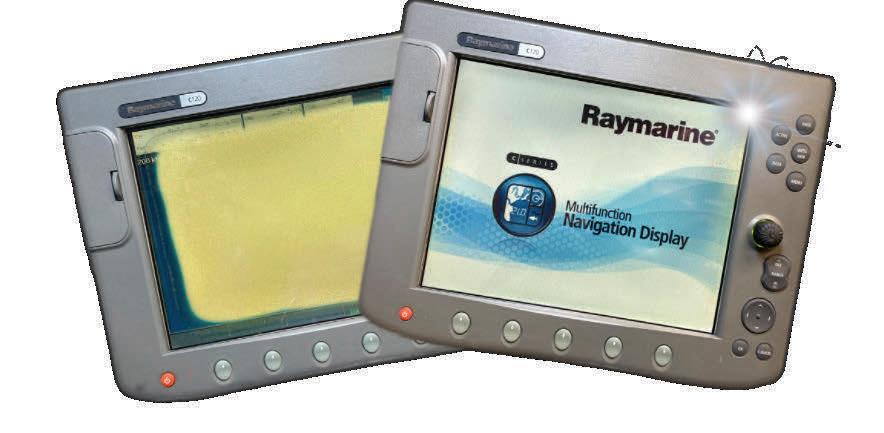
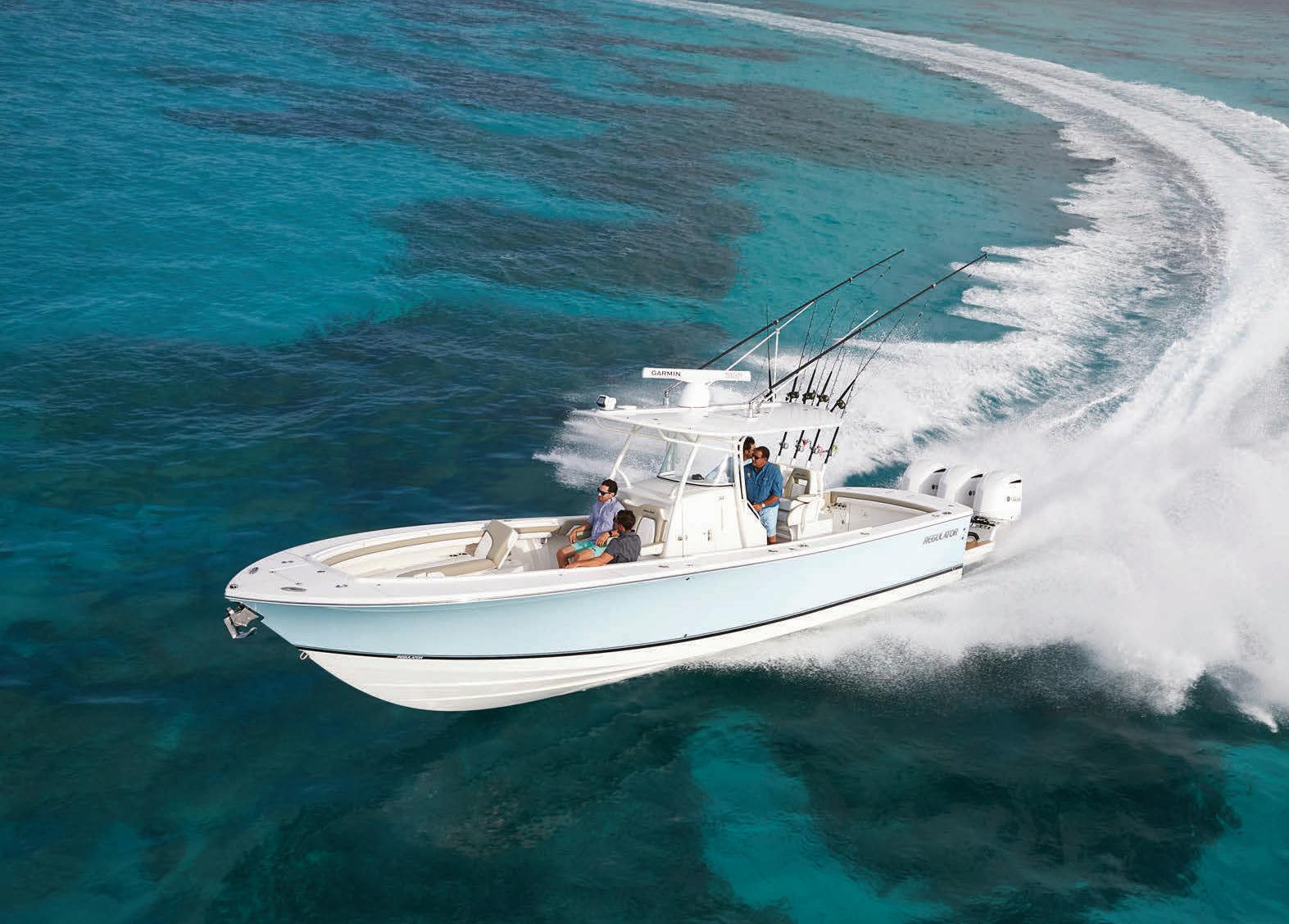

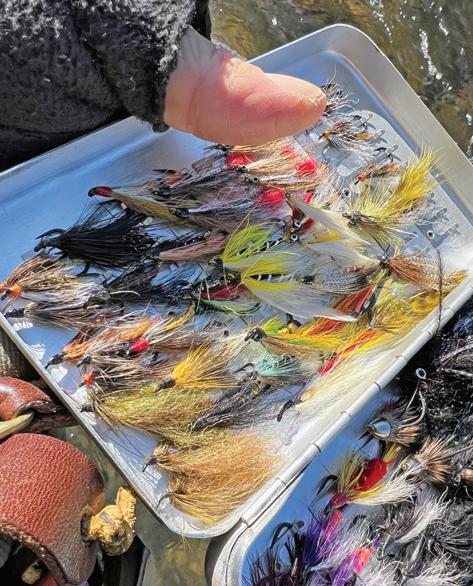
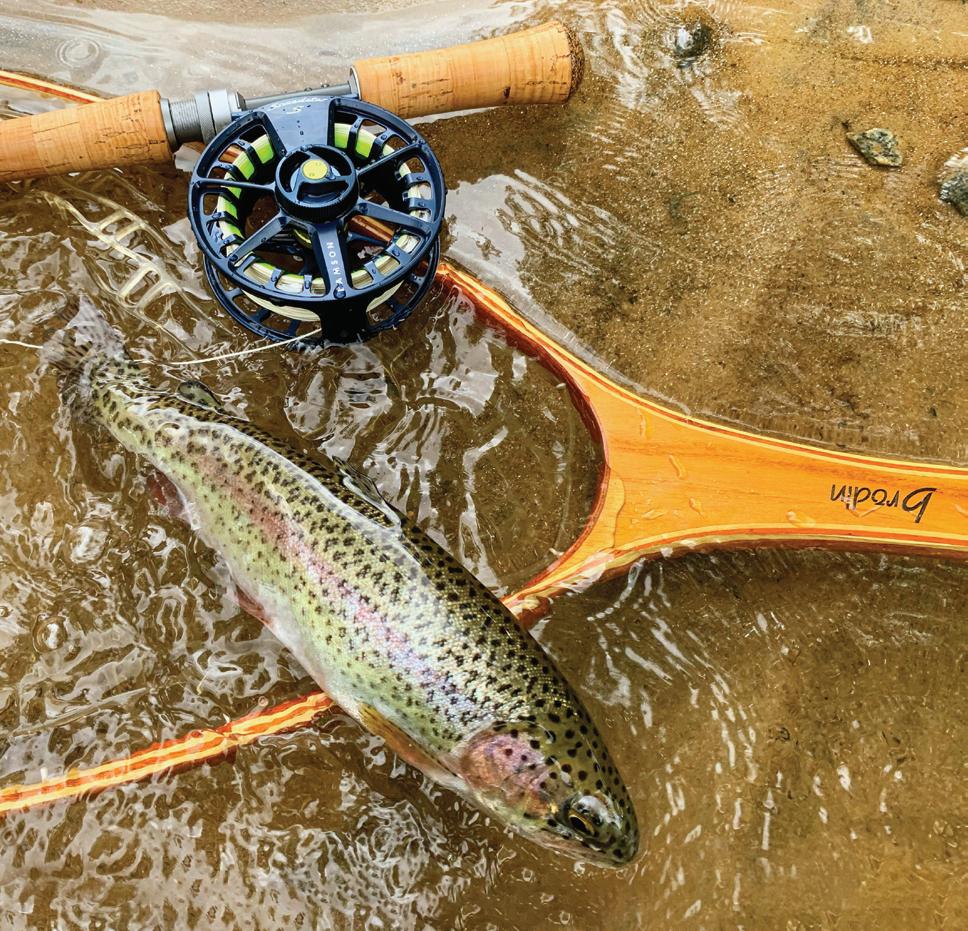
Besides being loads of fun to sh and cast, a spey rod is designed to launch ies into the next county with little or no back-cast room available. Most troutsized spey rods are less than 12 feet long, with longer rods up to 16 feet reserved for big steelhead or salmon. A 2-weight spey rod is similar to casting a 4- or 5-weight single-hand y rod. A 3-weight spey rod can handle ies in sizes that a 5- or 6-weight single-hand can cast, and so on.
Here’s the main advantage of two-handed gear: Easy casts of 70 or more
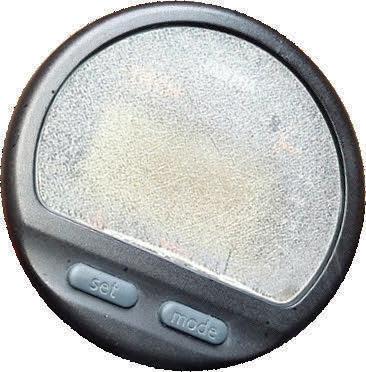





feet can be launched from positions that are impossible with a single-hand y rod. Right now, the wheels in your head should be turning about places on your home river you have always wanted to run a y through but couldn’t reach.
Fishing is done down and across current to carefully swing ies through likely runs or holes, and the angler waits for the electric jolt of a trout or bass. Flies imitating bait sh, emerging insects, and even brightly colored Atlantic salmon or steelhead ies in smaller sizes are readily taken by sh. A well-tied y sweeping in front of a predator can draw a hunger reaction or a re ex strike in almost any condition.
Casting and shing micro spey gear is extremely fun and e ective. I hope you will join the trout spey revolution!
David Hulsey is a north Georgia guide who also teaches spey and regular y shing classes. Contact him through his website at www.hulsey y shing.com.
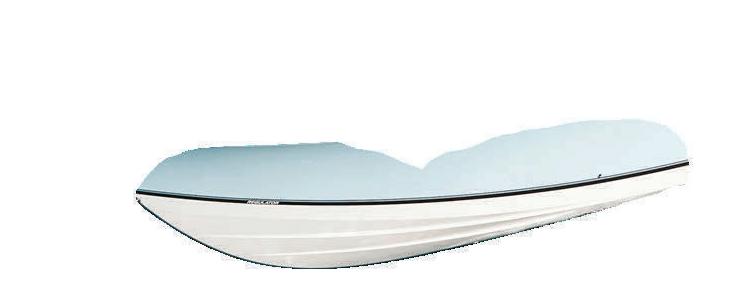
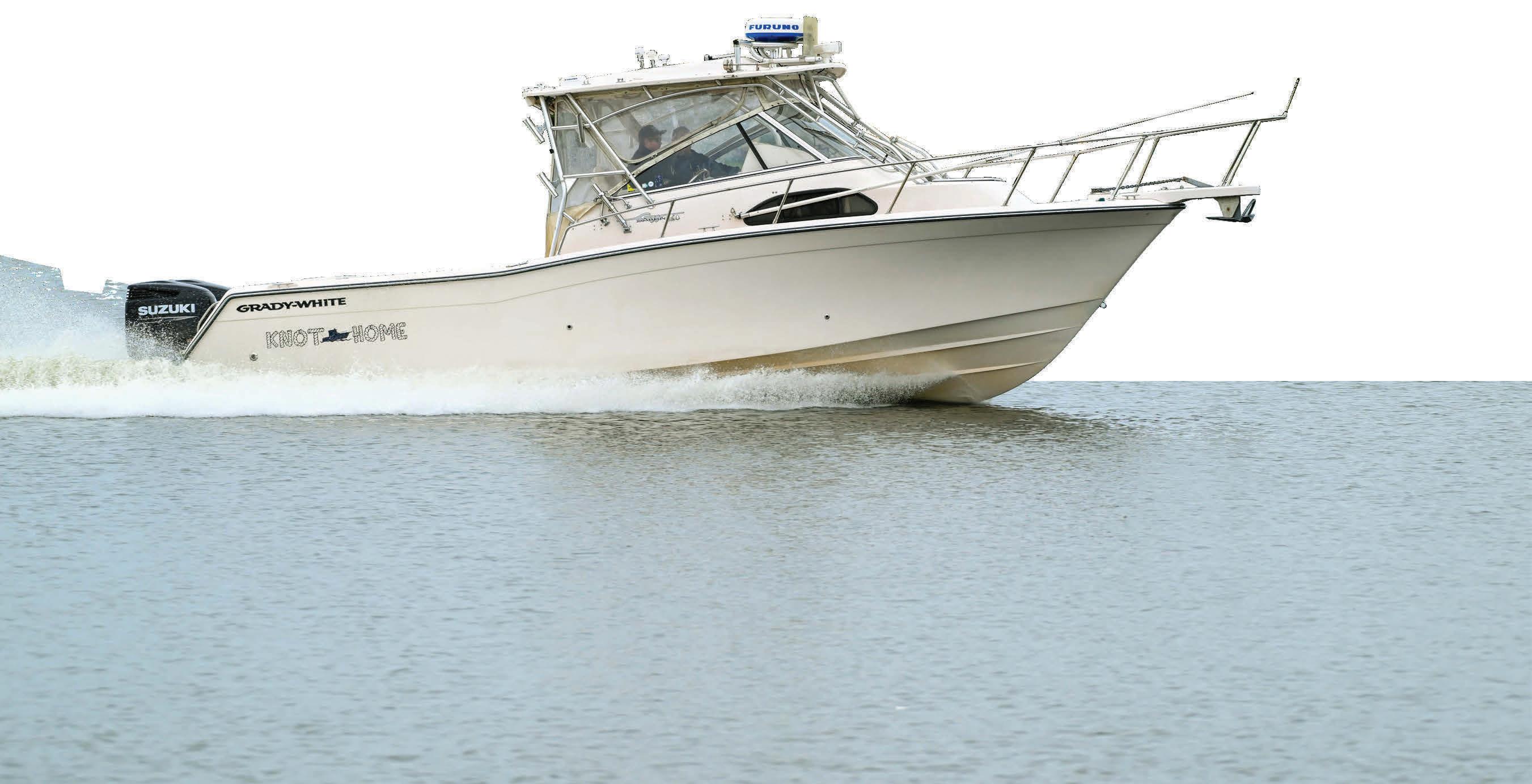


















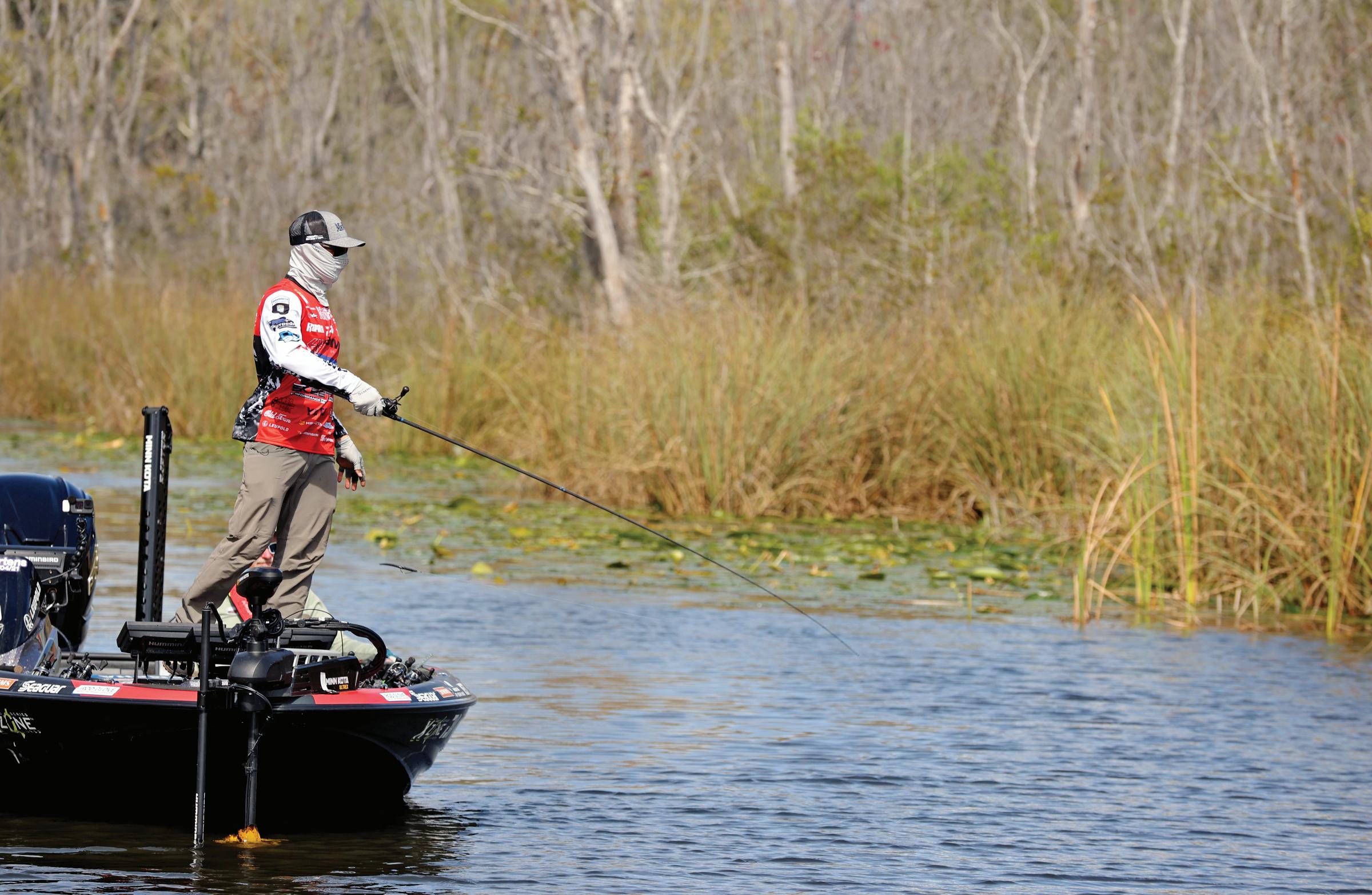



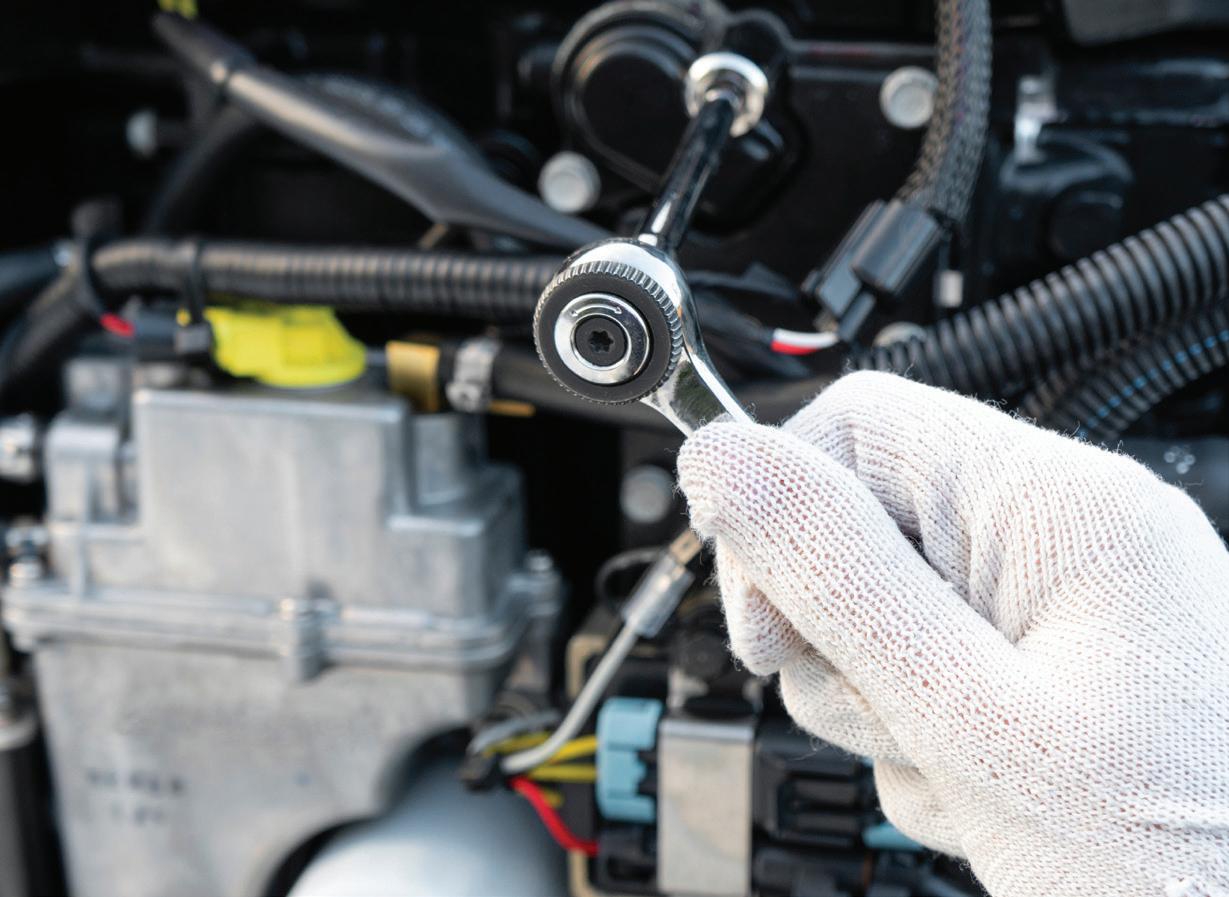 By CAM Sta
By CAM Sta

The Bassmaster Elite Series opens its 2023 season Feb. 16-19 with a stop at Lake Okeechobee. It’s the rst time since 2017 that B.A.S.S.’s top pros have competed at the “Big O,” and depending on the weather, most pundits are predicting heavy sacks from some of the world’s best bass anglers.
Last time Elite Series anglers descended on Florida’s largest lake in 2017, they also shed in late February. A monster 9-pounder turned heads as the big sh of the tournament. Alabama pro Tim Horton topped the eld with a four-day total of 83 pounds, 5 ounces. at’s a better-than 20-pounds-per-day average, which is strong for any shery, but it’s not as good as it gets for this historic big-bass factory.
Back in December, locals Jerod Boltz and Jon Bowman secured the 2022 Roland Martin Marine Center Series Championship with an awesome, nearly 30-pound nal day on Dec. 11. eir big sh of the day was an 8.15-pound Okeechobee giant. ey caught most of their sh on chatterbaits, an Okeechobee favorite, and spent some time shing speed worms and ipping cattails.
With two months separating the Roland Martin event from the Elite Series event, there’s no doubt some things will change, but Florida’s mild winters mean some things will likely remain the same. Okeechobee is typically primed for big sh in the month of February, and there might be some bed shing going on. “Big O” bass will likely be up shallow in all stages of the spawn.
As with any shery, weather patterns have a way of ruining the best laid plans. February fronts from the north are notorious for shutting down hot Florida bass bites in a hurry. Last February, Coastal Angler contributor Capt. Angie Douthit reported consistent action with spinnerbaits, worms and chatterbaits, and said they were also catching sh ipping and pitching.
For more information, go to www.bassmaster.com.




Technical schools charge tens-of-thousands in tuition. With the Mastry Suzuki RePower TTP (Technician Training Program), you will work with and learn from factory certified technicians and participating in the Suzuki on-line training course all while earning an hourly wage. After completing the Suzuki on-line training course and earning your Suzuki Certification you will be eligible for the Mastry Suzuki RePower Tenured Technicians Bonus Program.
After joining a Mastry Suzuki RePower Center as a certified technician, every month you will accrue $1,000 in bonus opportunity. After one full year of service you will be tenured and eligible to receive all 12 months of accrued bonuses, or $12,000. As a Mastry Suzuki RePower Tenured Technician along with your regular pay, each month you will be eligible for a $1,000 additional bonus.






At every Mastry Suzuki RePower Center, Certified Technicians are held in the highest regard. Join a passionate team of professionals with the common goal of excellence through constant improvement. With 12 locations across Florida there is a Mastry Suzuki RePower Center near you that wants to appreciate you and your abilities.


Mastry Engine Center Clearwater, Florida 800-545-4574

Twin Screws Marine Fort Myers, Florida 239-330-3387



Innovation Marine Corp. Sarasota, Florida 941-355-7852
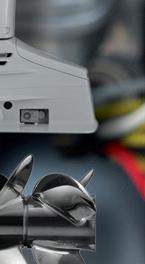




Marina One Deerfield Beach, Florida 954-421-2500
Bayfront Yacht Works Sarasota, Florida 941-349-9449
On Site Marine Ruskin, Florida 813-727-5403
Boat Services Group Key West, Florida 305-320-0555
McKenzie Marine St. Augustine, FL 32084 904-770-2488 Join

Lou’s Marine, Inc. Gulf Breeze, Florida 850-932-0701

Atlantic Marine Store Hialeah, Florida 305-826-2202
Custom Marine Service Panama City, FL 850-872-9191



Oyster City Suzuki Apalachicola, Florida 850-653-8030

over to the other side of their head and they spend the rest of their lives looking up with one side of their body at on the bottom.
ere are several species of ounder with overlapping ranges. Summer ounder are what northern anglers call ukes, their range in the Atlantic stretches from Nova Scotia down to Florida. Southern ounder inhabit the Atlantic coast as well as the Gulf of Mexico, while Gulf ounder can be found in the Gulf of Mexico from Florida to Texas. Southern ounder can be identi ed by their white underbelly and an absence of the ocellated spots the other two species have. ese spots resemble eyes, which are thought to trick predators. For southern ounder, males don’t grow much longer than 12 inches, while females can reach about 25 inches.
Southern ounder range from North Carolina to Texas, however, they do not migrate besides going o shore for mating and then returning inshore. While inshore, they prefer shallow muddy and grassy ats, where they hide on the bottom and ambush prey.
When the mating season rolls around in late fall and early winter, ounder migrate out of the passes. At the end of winter into early spring, all of the females and some males head back inshore.
Flounder can be caught with arti cial and live bait. Arti cial lures such as jigs, small swimbaits and spoons worked near the bottom can all produce sh. Small live bait works the best, with nger mullet being my personal favorite. Small pilchards, mojarra and mud minnows will also do the trick.
Light tackle is all that is needed to catch them. A small weight, 1-ounce, or so, with a short 12- to 16-inch sh- nder rig works best. A live shrimp on a jig head, such as a Troll Rite, jigged along the bottom can also work great and is a good way to cover more area with a live bait.
Some of the best places to nd ounder are on inlet rock piles and bridge or pier pilings. Cast upstream and work lures downstream, or let your bait dri downstream.

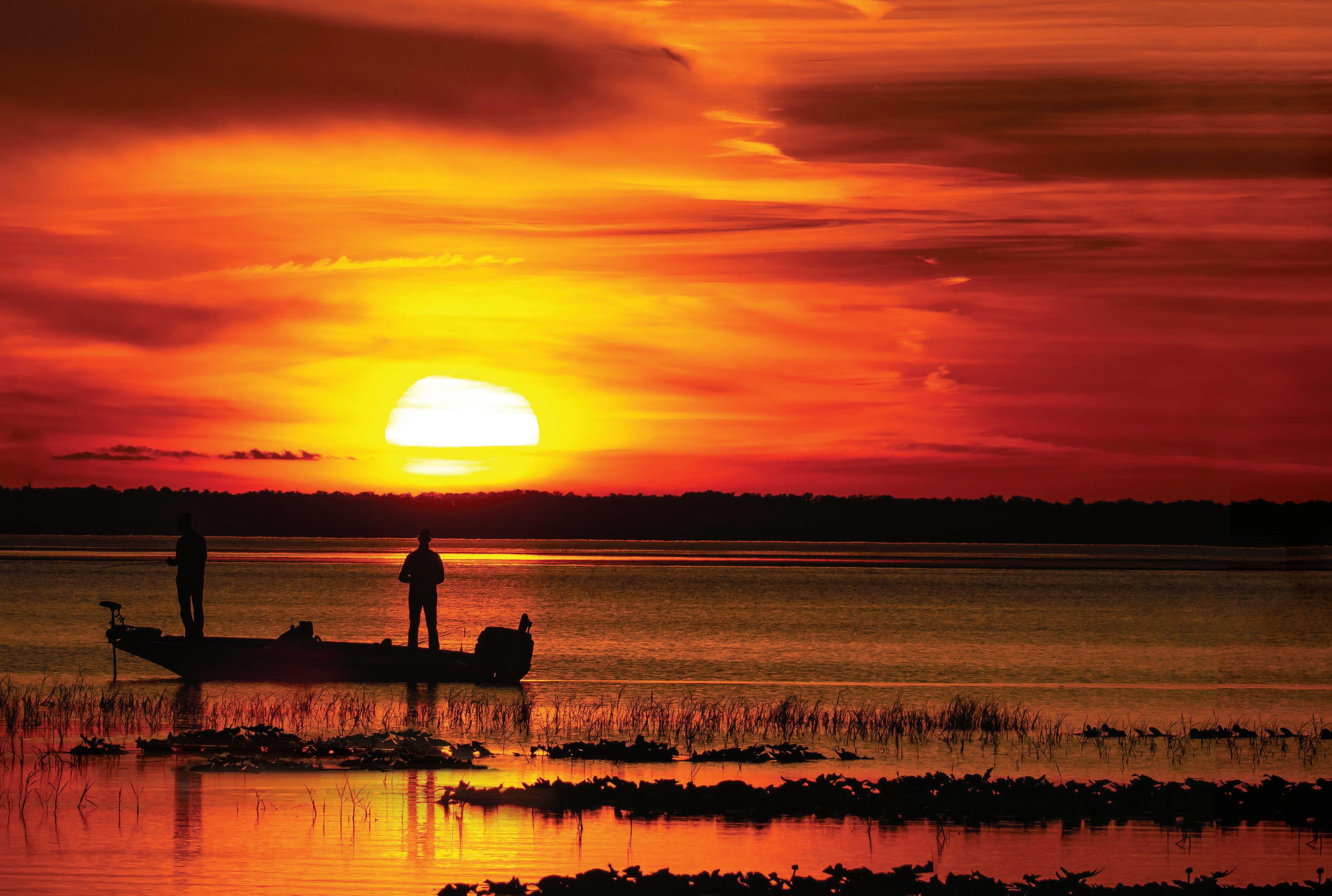
With the cold fading away, so will the ounder, but they return with spring. Many anglers believe the second cold snap is prime time, when southern ounder begin moving through the inlets. e timing varies greatly, but it can be gangbusters in the inlets if you catch it right. Even if you don’t, there will likely be some stragglers moving through.
Flounder are interesting sh. As hatchlings, they swim upright with eyes on both sides of their heads, just like most sh. As they mature, one eye moves
e IGFA all-tackle record for Southern Flounder is 20 pounds, 9 ounces. It was caught out of Nassau Sound, Fla.
Emily Rose Hanzlik holds 56 IGFA world records in various categories. She hails from West Palm Beach, where she has a part time Bow n Guide Service as well as shing classes for Jr. Anglers. Find her on Social Media @emilyhanzlikoutdoors.
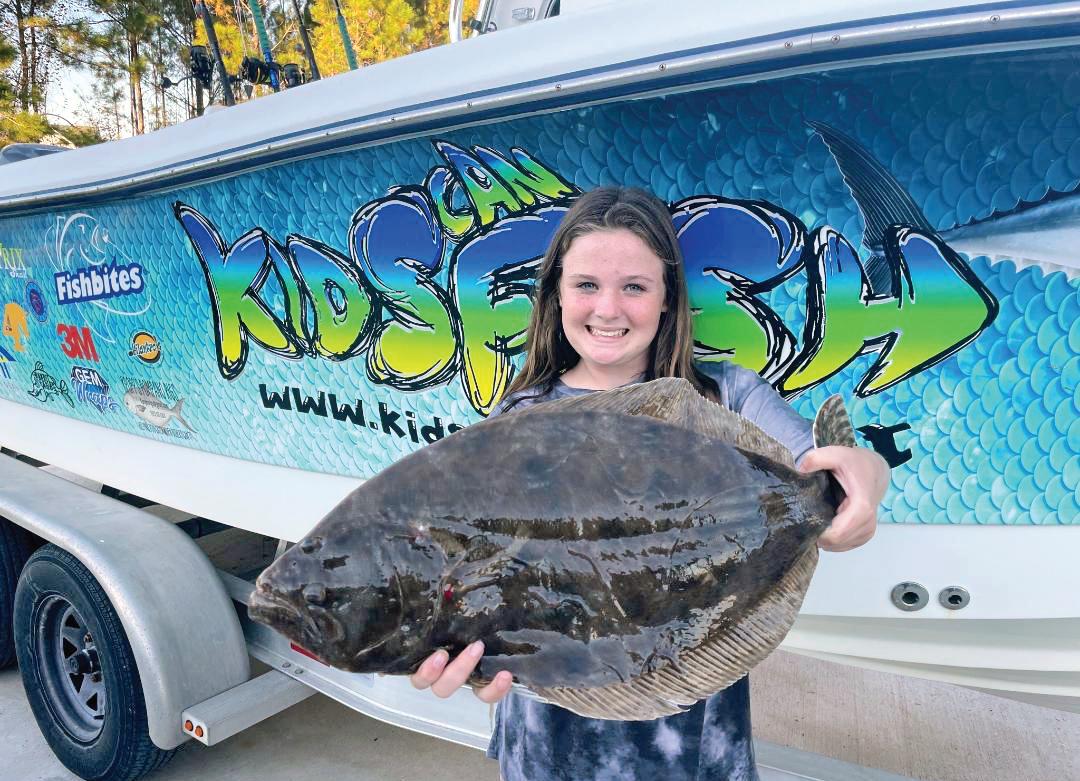


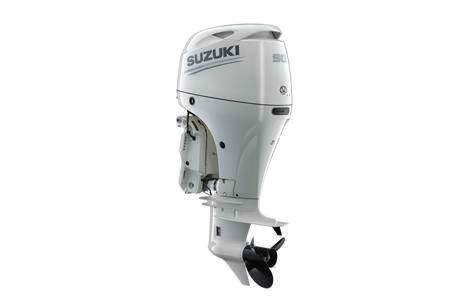

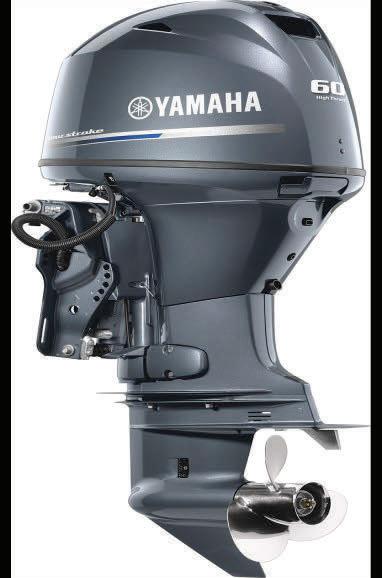

YOU

Lasting 2-3 times longer than wooden, concrete, and aluminum docks, our modular foating system is the preferred dock choice for residential, commercial, marina, liesure, and other applications. Customizable and confgurable for boat docks, liesure and recreation docks, and drive-on jet ski and personal watercraft!
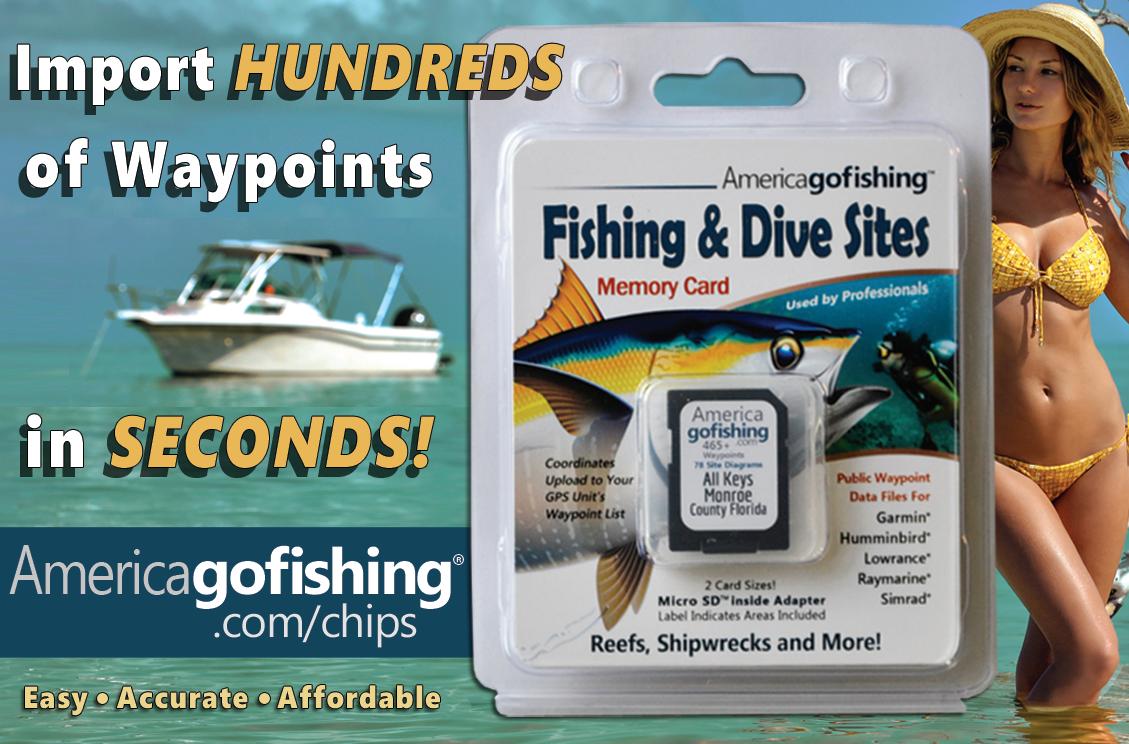

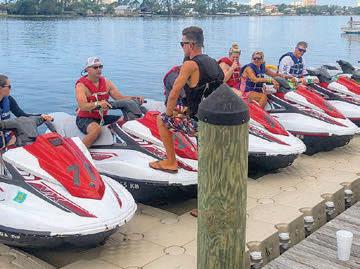
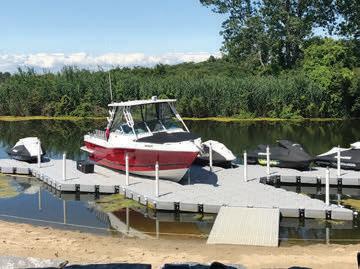
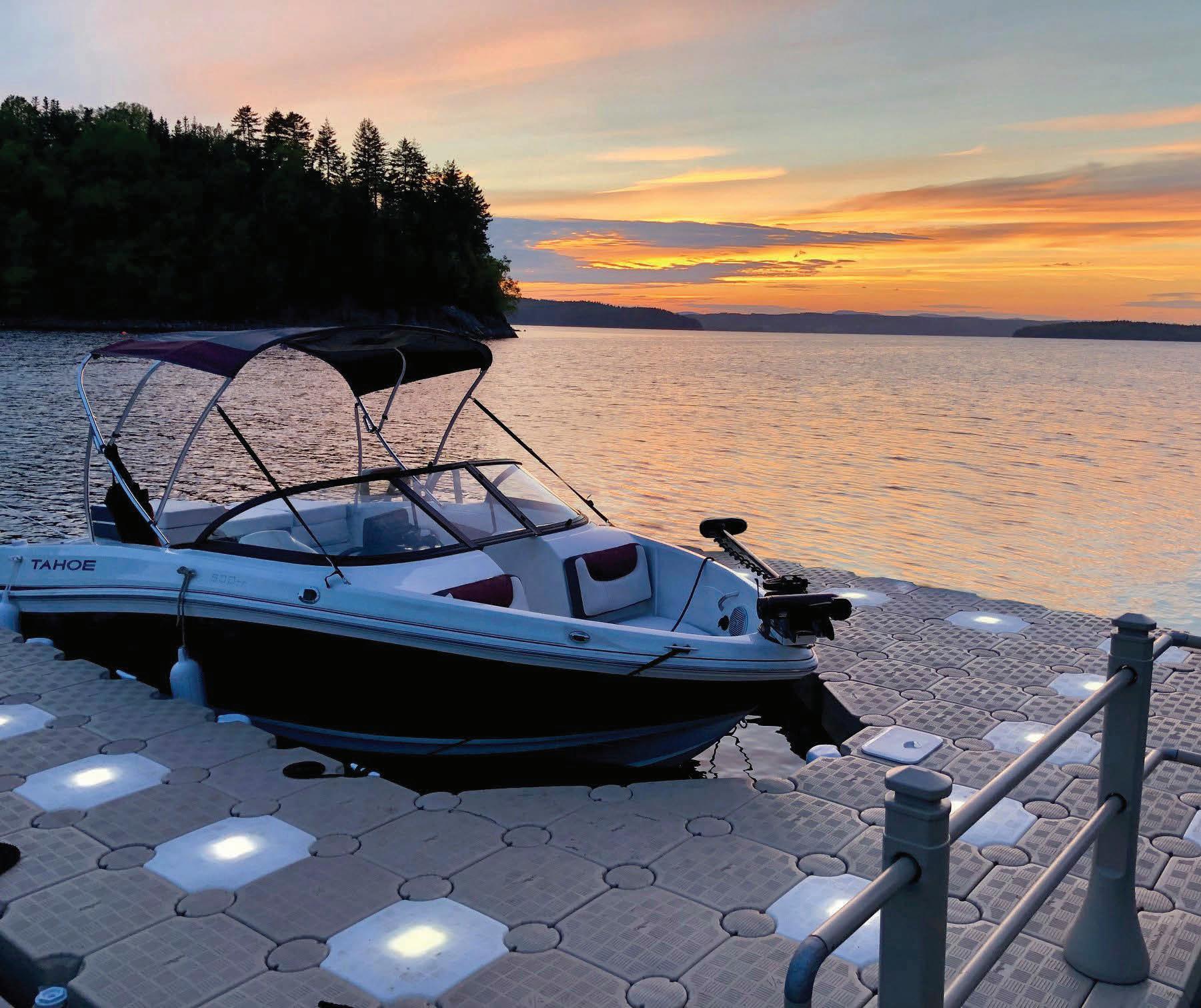
• High-quality plastic
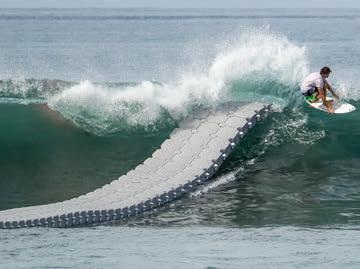
• Environmentally-friendly
• Guaranteed for 20 years
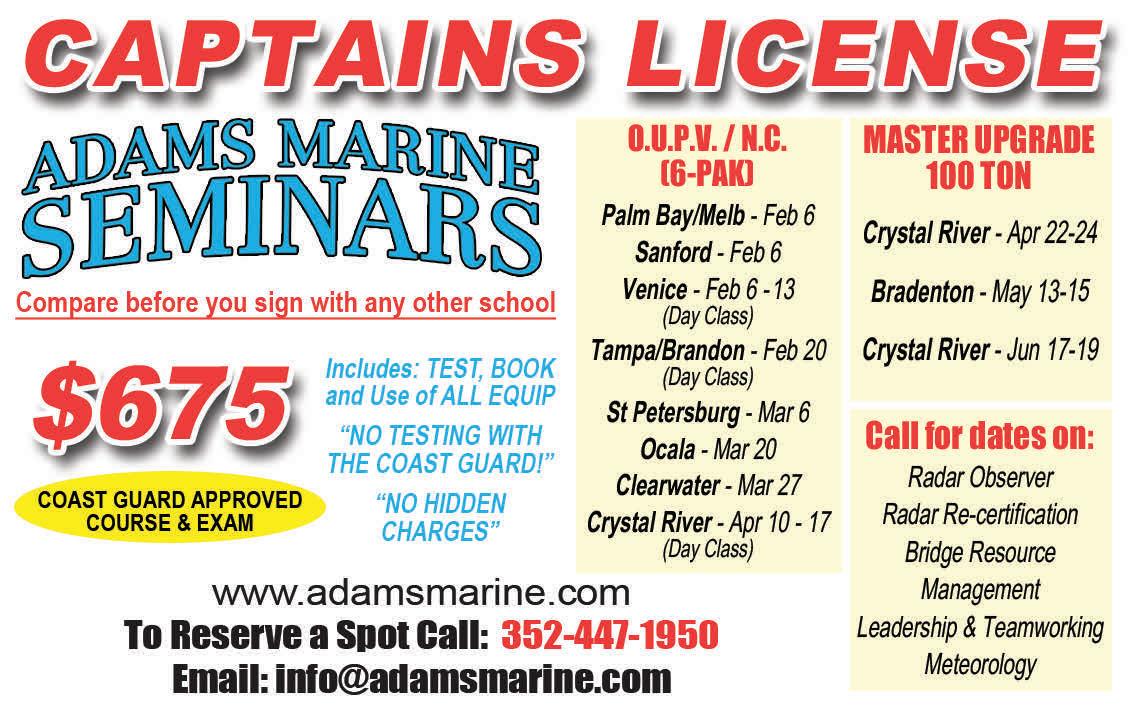
• Near-zero maintenance
• Completely customizable
• UV and pollution resistant
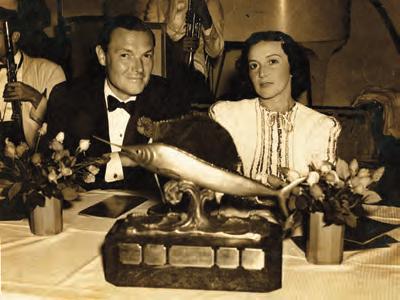
Fishing in the historic Silver Sailfish Derby is more than just another day offshore. The 2-day tournament off the Palm Beaches is where crews experience sailfishing nostalgia. A sold out 50 boat fleet celebrated this crown jewel of sportfishing in early January, competing offshore with the same passion that so many past participants before them brought to the fishery throughout the tournament’s storied history. Anglers have to capitalize on every bite to win the Derby. Having ample live baits and the kite fishing “know-how” doesn’t guarantee crews will record releases. They have to find the fish. When the Derby started in 1935, the fleet didn’t go far to start fishing and would set up soon after clearing Palm Beach Inlet; that’s exactly where the Priceless won the 86th running of The World’s Oldest Sailfish Tournament.
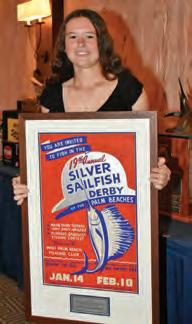


A total of 223 Atlantic sailfish were released over the duration of the 2023 Derby and 5 sails were tagged. Calm conditions offshore on the first day weren’t ideally suited to spark a productive bite, but when some of the finest sailfishing captains and crews take to the water at the same time, sailfish will be caught. The tournament was headquartered out of Sailfish Marina in Palm Beach Shores where Captain Andrew Dotterweich and the 48’ Viking, Fish On, have docked seasonally for some time. This naturally had local patrons and marina staff members excited to see the Fish On off to a hot start. Capt. Andrew and crew had 4 sailfish releases soon after the 8am lines-in start of fishing Day 1. They would ultimately
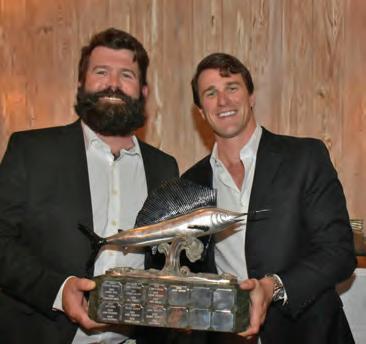
CONTi N ued ON PAGE 11 >>


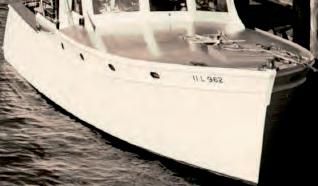
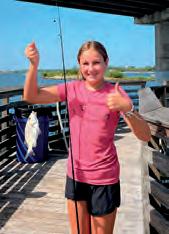
As we near the end of Florida’s so called ‘winter’ months, fishing for sailfish is still in the spotlight throughout the month of February. As the month progresses the action should remain steady but will begin to fizzle out in Palm Beach as the sailfish continue their southerly migration. If you haven’t already, try to get out and kite fish for sails after a passing cold front. It’s not uncommon to hook two or more sailfish in a single fishing trip when kite fishing. Besides sailfish, there will also be a variety of pelagic fish visiting our waters that will gladly eat your kite baits. Be on the lookout for kingfish, dolphin, and wahoo swimming in your kite spread. I recommend using a small trace of wire on your leaders, so you increase your chances of catching toothy critters like kingfish and wahoo. Anglers that like to fish from the beach and the waters near shore, the annual migration of spinner sharks should be commencing by the end of the month. These swift, fast-growing sharks are exhilarating to catch. Spinner sharks are named for the spinning leaps they make when they rocket out of the water. When spinners are feeding on schools of fish, they will swim vertically through the school while spinning on




Please be sure to check out my YouTube Channel “Darcizzle Offshore” for fishing videos every week! www.youtube.com/DarcizzleOffshore

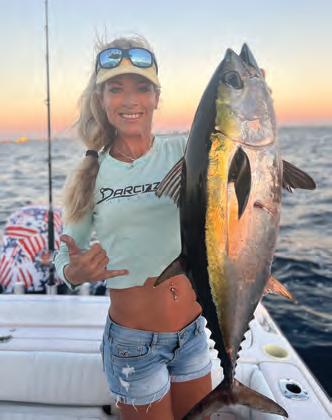
their axis, erupting from the surface of the water. By boat, target spinner sharks by anchoring ahead of the school and use chum to lure them in. Live bait will work best; try mullet, blue runners, and goggle eyes. When you hook one, they jump quite a bit and the adrenaline rush you feel is like no other!


Bottom fishing should produce a good bite a couple days after a passing cold front. The deeper wrecks like the Skycliffe out of Boynton Inlet
and the Ande out of Palm Beach Inlet should be holding almaco, amberjacks, and grouper. If you are drift fishing; I suggest starting your drift on the outside of the second reef in 75ft of water and drift in shallow to 40ft (depending on wind conditions of course). I suggest using a long leader at least 15ft long, a 3/0 - 6/0 circle hook based on the size of your bait, with just enough weight to hold bottom. Bottom fishing should yield muttons, kingfish, cobia, Spanish mackerel, bonito, trigger fish, etc. You will catch yellowtails, muttons, and mangroves closer to the reef itself. Say HELLO if you see me out on the water. Good luck & keep on catching!
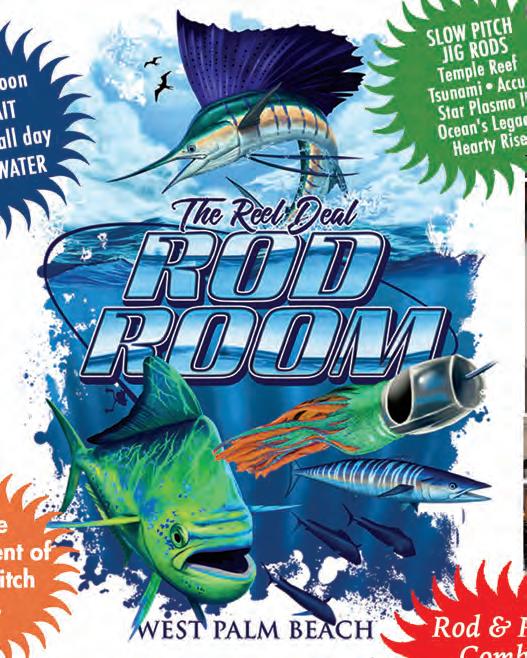

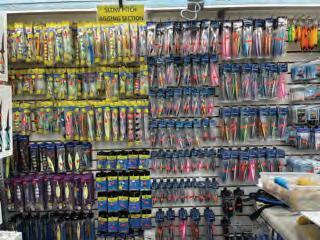

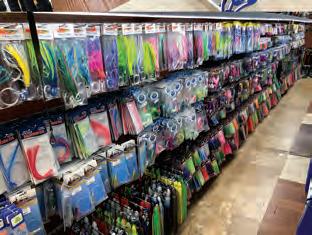


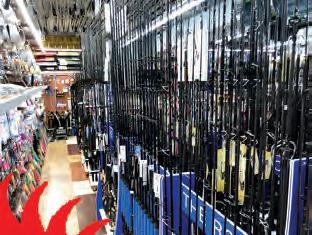
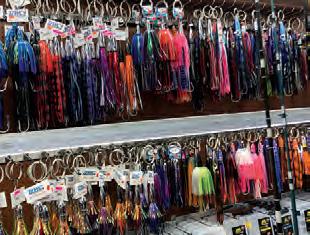




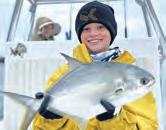
Typically, I don’t believe in superstitions, but a er a recent shing trip with my buddy Neil, I may be a believer!!! e morning started slow; I caught a small snapper and small snook. Neil was in skunk mode, so we decided to try a spoil island where I’ve caught some trout, snook, and a gag grouper on a prior trip. To our dismay it was dead as well. Just as we were about to exit stage le , Neil was working a topwater lure back to the boat when what appeared to be a large bull shark came up from the bottom and tried to hammer the lure. Unbelievably it totally missed the lure and disappeared. It was impressive to witness such a big specimen of a sh take a swipe at the lure.
ope everyone has been enjoying these cooler months and all the action it tends to bring. Hands down, the place to be is right out front. Sailfish will be pushing the ballyhoo up literally to the beach and there will be plenty of mackerel, bluefish, and pompano to mess with while you’re out there. If you are walking the beach, it’s hard to beat a metal spoon that you can throw out past the breakers. My next choice would probably be a yellow and white goofy jig. When I go out with my daughter, we always carry a large spinner rigged with a wire leader to put a lady or bluefish back out for shark bait. This time of the year if the water is murky, you can almost bet on there being a few spinner sharks lurking. Fly fisherman should throw a sinking or intermediate line and a bright color clouser type fly. Back inside, the sheepshead spawn will be in full swing and some big schools of 8-12lb jacks will roaming around. A simple bucktail jig tipped with shrimp will sometimes keep you hooked up all day.
A er the “Shark Week” experience, we continued to struggle so I decided to implement Plan C and move from the east side of the Indian River to the west side. I’ve had some nice shing on the west side with trout, reds, and snook. We made our way across the river stopping at another spoil island only to be greeted with a jack attack. I landed several jacks and Neil hooked one that got o . His skunk was still intact but with jacks around I gured that would change. Unfortunately, that wasn’t the case.
We used the trolling motor to quietly make our way towards the mangroves hoping to get a glimpse of a red, snook, trout, ounder, or any inshore species willing to bite. As we approached the shore, we noticed another bull shark working the shore and of course I had to make a cast or two at him, but he had no interest in my o ering. We kept working the shore and nally it happened for Neil!!! He made a long cast and almost as soon as the lure hit the water, he was on with a nice sh, but we couldn’t see what it was. He started gaining ground getting it closer; enjoying the ght and then it happened! e sh came unbuttoned and at this point I was like dude, what did you do in a previous life to deserve this??? We made our way toward a dock that I know holds snook. I made a long cast and right then I was hooked up with a huge sh. It was a big snook; I got her to the boat, revived her, and released her to ght another day. Success! I said, “let’s go to lunch and call it a day”. I asked Neil if he was hungry and then he disclosed to me that he ate a banana for breakfast! Neil knows not to bring bananas on the boat (it’s bad luck), but it didn’t occur to him that the curse would remain in e ect with it digesting in his
was it bad luck? He should’ve brought his lucky rabbit foot!!!
Freshwater will be a little more of a struggle due to early season cold fronts chilling the lakes and canals, even killing a small number of peacocks. I would suggest focusing more on the bands and crappie, they seem to like the cold. Good luck out there!
Keith Lozott The Fishing RealtorJoin

King Mackerel • Wahoo
Dolphin • Snapper (all kinds)

Sailfish • Grouper Bonito • Cobia
All licensing, bait & tackle included. + gratuity for crew
ADULTS: $60 per person
• Brand new 60 foot custom built deep sea drift boat.
• 42 passenger Coast Guard inspected vessel.
• Air-conditioned salon with a 360 view of the outside.
• Low profile and extremely wide 20 foot beam for a smooth and stable ride.
• The closest drift boat to the Boynton Beach Inlet so there’s more time to fish!

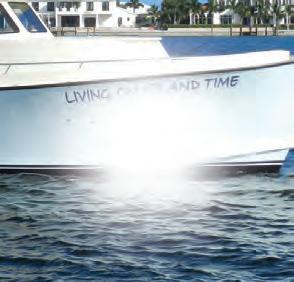
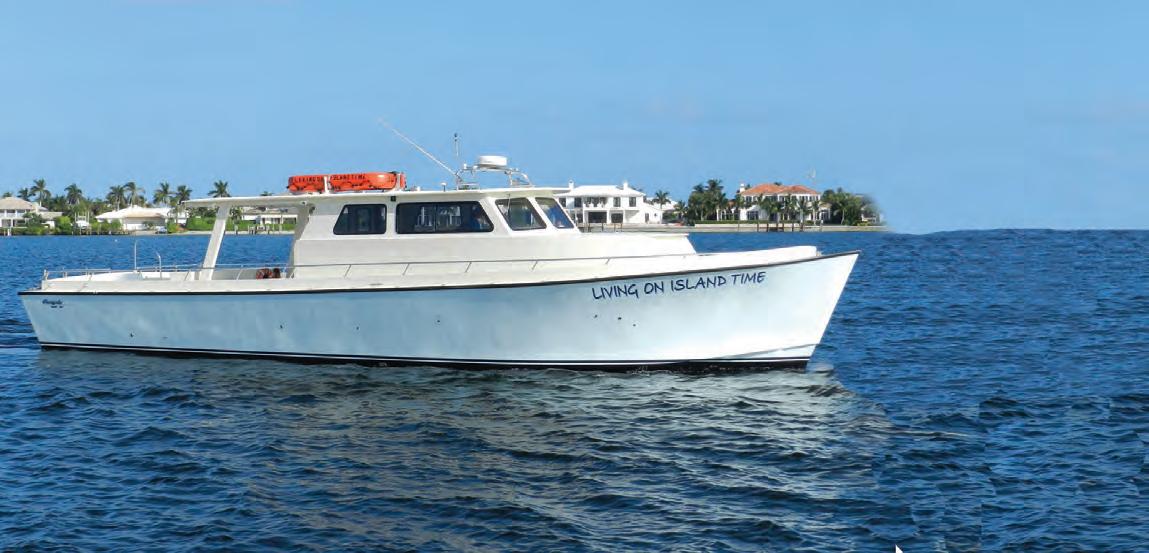
PRIVATE CHARTERS AVAILABLE FOR CORPORATE GROUPS, FAMILY PARTIES & MORE!
Sailing at 50% passenger capacity so please call for reservations. Limited seating for distancing. Boat sterilized before every trip.
Discount Rates (cannot be combined with any other discounts)
$55 - Seniors (Over 65, Weekdays Only)
$55 - Active Teachers, Military, Law Enforcement

$45 - Children 12 & under
$50 VIP Program
BEST VALUE!!! 10 trips-$500
Individual use only. Subject to min. customer base. Call for details !

Fishingonislandtime.com facebook.com/Livingonislandtime
Palm Beach Yacht Center, 7848 US Hwy 1, Hypoluxo, FL 33462 (between Boynton Beach and Lantana)
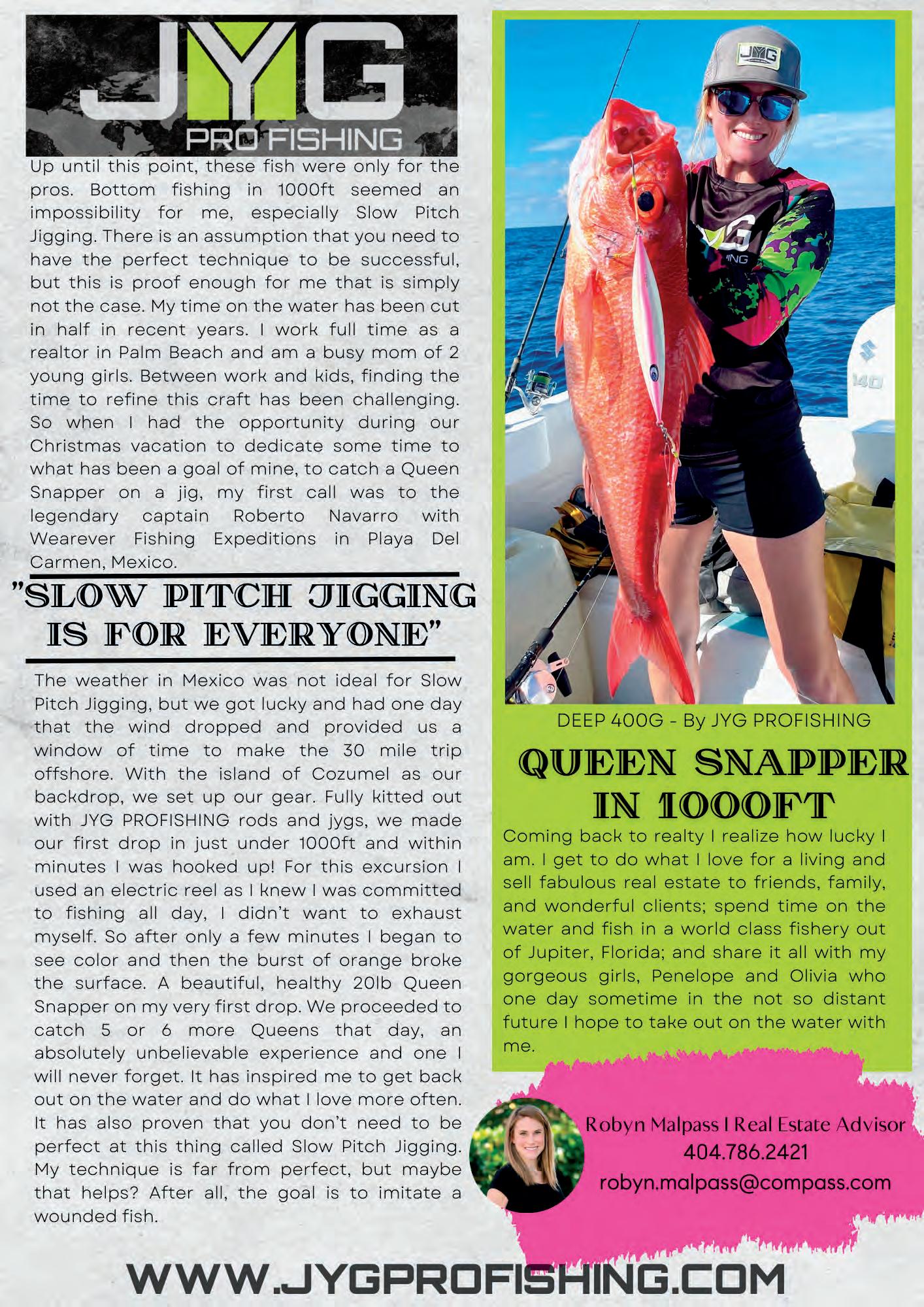

 with Chris Thalmann
with Chris Thalmann
If you spend much time around the water in Florida, you’ll likely notice we’re blessed with a wide variety of different bird species. Some are here year-round; some migrate through seasonally and many look a lot alike! Practice helps with identifying birds, but there are some species that even experienced birders must look twice at to make the right ID.
Two such birds are anhingas and cormorants. Although different species, these waterbirds share similar habitats, foods, hunting habits, even appearances. No wonder that they are often mistaken for each other!
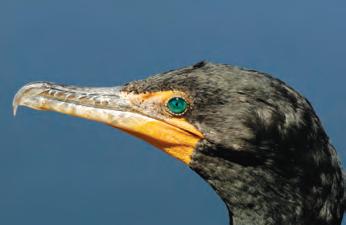
Both are large birds, about 3 feet long and with wingspans of 4-5 feet. Both are slender and dark-colored, with long necks and long tail feathers. Both are excellent soaring birds and can sometimes be mistaken for turkey vultures if you happen to see them way up high.
But you’ll more often see these birds flying down low, treetop level or less. They are super- streamlined fliers - picture an arrow zinging through the
air with wings attached. You won’t see any looping, wheeling, or fancy flying overhead like you do with frigates, ospreys, kites, and pelicans. These birds save those moves for the water, as they’re excellent underwater hunters!
The trick is in their feathers. Many birds have oil glands to keep their feathers dry and ready to fly. Anhingas and cormorants do not have waterproof feathers, so their feathers quickly saturate with water. Once saturated, and with no trapped air bubbles to provide buoyancy, the birds are free to dive to whatever depth suits them, often 25-30 feet or more!
They may be a little clumsy on land, but underwater their powerful wings and webbed feet help them easily catch small fish, frogs, insects, crabs, lobsters, shrimp etc.
Anhingas often spear small fish with their bill and then surface, flip the fish in the air, and swallow it headfirst and whole. Neat party trick! Cormorants have a hooked beak that they use to hold their prey and eat whenever they’re ready. That hooked beak is also a good way to ID a cormorant. In contrast, anhinga’s have a very straight, very sharp, pointed beak with no hook at the end.
If you can’t get close enough to look for the hook, you can usually tell the two birds apart by the color of their open wings. Most birds don’t sit still with their wings open, but cormorants and anhingas do this a LOT! It’s the best way to dry their wings after a swim. So, you’ll often see them perched on shorelines, low trees, docks, and pipeline crossings, just sitting in the sun waiting for their wings to dry.
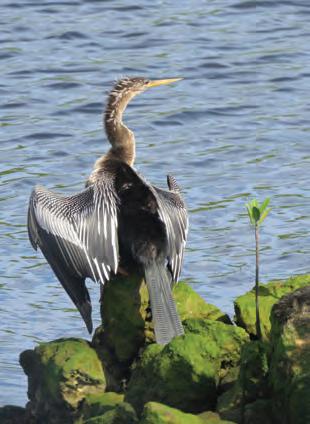
Cormorants’ wings are a nearly solid black, but anhingas’ wings have a beautiful black and white banded pattern. Check it out next time you see a big bird with its wings spread wide open.
Hope to see you on the water!


Hello anglers!



I hope you all have been enjoying days out on the water despite it being choppy most of the time. My family and I went on one of the most thrilling vacations I have ever been on over the holidays. We went to Costa Rica! This trip was an absolute blast and was filled with unique memories and experiences. We stayed in Los Suenos where we did a variety of activities including ATV riding through mountains, jungle tours, and surfing. However, my favorite thing that we did by far was a day out fishing. I have never seen anything like it before. As we were running offshore, we would see nice 20-pound dolphin jumping out of the water. In Florida, this would be considered an amazing catch, however over there it is merely a peanut dolphin. We kept running for hours till we finally found thousands of spinner dolphin. It was so beautiful because when they jump out of the water, they spin, and usually where they were jumping you would see tuna jump out as well. The captain set us up perfectly and we would throw live bait out right in front of the school and the second we put the bait in the water, you would see yellowfin tuna boil on it. We loaded up on tuna, nothing huge, all around 20 to 35 pounds, but definitely an amazing experience. After that we did a little trolling, looking for some more dolphin. We happened to stumble across a huge log and just as we got near it, we got a double header on. It was fish after fish, and all of them gave some of the most thrilling fights ever, filled with lots of jumping and running. At the end of the day, we caught 12 tuna and 8 dolphin. This trip was extremely fun, and I was so thankful to be able to go out there and catch some monster fish.
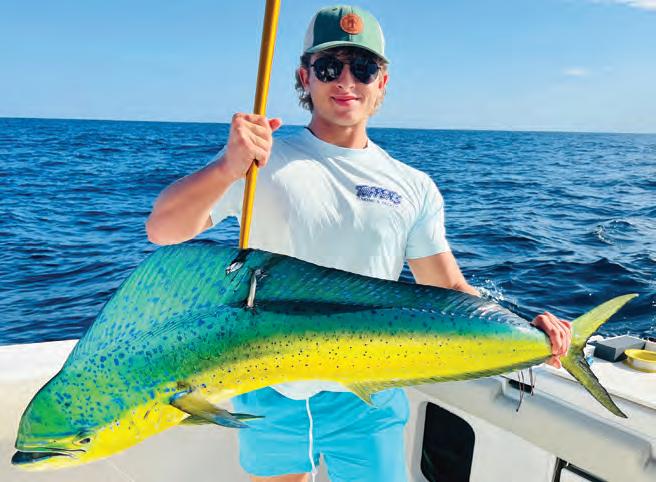
February offers great fishing for a wide variety of species. Cool fronts bring seasonal weather, wind’s dictate fishing tactics for anglers. Whether back country fishing or beach fishing, anglers can expect great fishing.

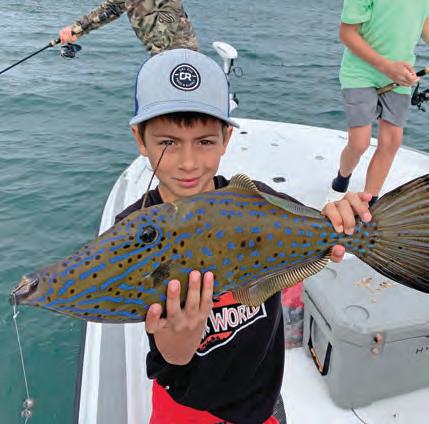
If snook is what you are looking for, target deeper holes, bridges, channels, and sea walls. The snook will be holding near the bottom and tight on structure. At high noon on sunny days look for snook laying up on sand bars basking in the sun. The snook will strike live bait or D.O.A. C.A.L. 3” Shad Tail in mole’.
The tarpon fishing in the back canals and bays offer great action with the fly rod and artificial lures. Keep an eye out for rolling fish on the surface and work the area thoroughly. Deeper passes hold bigger fish up to 60 pounds. Anglers using live baits will
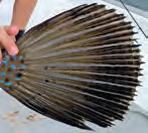

have plenty of action but artificial lures like a D.O.A. 3” Shrimp and D.O.A. TerrorEyz in pearl/green back will also provoke strikes from the silver king.
The ICW will be teaming with life as anglers can target jacks, snook, tarpon, drum, sheepshead, and pompano. Seawalls and docks are great areas for jacks and snook during the day and at night. Live shrimp, mullet, and D.O.A. C.A.L. 3” Shad Tail will produce many strikes. Top water Rapala Skitter Walks used early morning and late in the afternoon will provide explosive action for top water fanatics. Jigs and live shrimp are the best baits for sheepshead and pompano along channel edges.
Well, that is the fishing report for the Palm Beach and Jupiter area. I hope you all enjoyed. Get out there and get hooked up. Tight Lines!
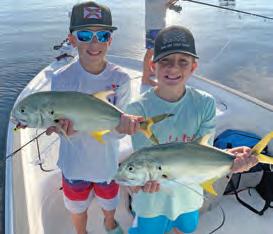
Winter can be a tough time here in Florida for offshore anglers. With multiple cold fronts bringing rough weather and difficult sea conditions, there are many days when getting out the inlet is just not practical, especially for the small boat angler. Even though these numerous cold fronts can bring fantastic winter bites; we must pick and choose our days on the water. It’s on these nature inflicted, down days I like to go over all my gear that’s been in heavy rotation during the spring thru fall months. I mostly use spinning gear for live bait fishing so I’ll focus on this equipment for my tune-up routine, but everything I do here will apply to conventional bottom fishing rigs as well.
Visual inspection – First off, I do a complete visual inspection of both rod and reel. On the rods I look for worn or broken eyelets and inserts. By running a single edge razor blade around the circumference of the ceramic guide inserts you can detect small nicks in the line guides that will cause frayed or broken line issues. Have these guides replaced along with any that have missing or cracked ceramic inserts. On reels, I carefully inspect reel handles, bearings, shafts, and especially the drag system. If any of these areas require major disassembly, I bring it to the professionals for repair or replacement. Otherwise, I continue with my general service routine. There is nothing worse than losing a quality fish because of faulty gear. Running offshore is way too expensive and time consuming not to proactively address these simple repairs.
Find a quality local shop - The guys at Fishing Headquarters repair all my rods and service my reels every season and do an excellent job. Pete, Tom, or any one of the staff can help. Now is also the time to grab your sidelined rod and replace broken rod tips with a new tip guide. They can often turn this type of simple repair around while you wait. Fishing HQs also carries a complete lineup of new gear and can assist with any of your setup needs. I find them extremely knowledgeable and friendly. They also provide accurate local conditions and fishing reports. They kind of remind me of the old school barber shops where you got service with a smile as well as all the local intel!
By mark ambertdrags systems are relatively easy to replace and you can find quality carbon fiber replacement washer’s online or at your local tackle shop. Make sure to stack all the removed washers in the order they are removed and have the reel schematics available just in case! For anything more serious I have my reels professionally serviced. Afterwards I spray the outside with Penn Rod and Reel Cleaner.
next, i inspect the line on the reel and usually replace what I call the running line with fresh mono. This is the “top shot” of monofilament line – usually around fifty yards, that I spool on top of the braid backing. This line sees the most use during the season and should be replaced. The braid gets trimmed back and inspected then sprayed with a light coating of Reel Magic. This keeps the more expensive braid in top condition and able to withstand multiple fishing seasons.
I’ve invested in a line spooler system and buy all my line in bulk 1500-yard spools. While I use a variety of monofilaments on the market like various Ande or Moi-Moi products I only use Power-Pro braided line in moss green. This is in my opinion, the best braid on the market. Spooling your own reels can save you a lot of time and money over the course of a season. Just make sure to buy a quality system and apply the right amount of tension when respooling a reel. I use the Super Spooler from South Chatham Tackle to spool all my reels. next, i Very lightly spray the inside oF my reel spool where the clicker spring and pawl are with garage door lubricant. This provides a moisture and salt barrier for most of the season. I also use a couple of drops of Loctite medium strength to keep my reel seats firmly in place during the season.
next up, i look For worn reel seats and handles. Foam handles will often get worn out from putting then in and out of rod holders. In addition, the harsh Florida environment will also take a toll. I like to cover all of my lower rod butt sections with neoprene sleeves you can buy from your local tackle shop. I “shrink wrap” the butt section by cutting the appropriately sized sleeve to length and using a heat gun to insure a secure fit. If you are unsure about what size is needed bring your rod to your local shop and have them size it for you. once the rod has been thoroughly gone oVer, I clean all the guides and blanks with Penn Rod and Reel Cleaner. next are the reels. All used reels go in a bucket of warm water with Palmolive Dish Washing Liquid for a good soak. A gentle rinse with clean water is all that’s needed to remove salt deposits. I then remove the spool and reel handle and clean with the appropriate lubricant. For all spool washers, bail springs, bearings, and shafts I use Penn Reel Oil. I always squirt a few extra drops inside where the reel handle was removed. I also periodically dunk my reels in a soap bucket and re-lube as needed during the season.
Once completed your freshly serviced rod and reel combos will look great and should stand up to the coming busy season. If done right, your gear will hold up during the toughest battles when rod or reel failure is not an option and good equipment can last a lifetime.


mark ambert, marksgonefishing™ author – avid outdoorsman, sportswriter, and photographer.
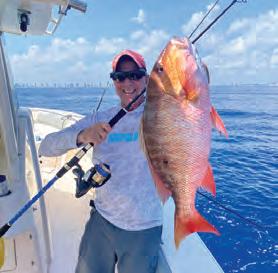
Contact marksgonefishing25@gmail.com
Fishing
When everything goes right
A hefty mutton snapper caught during the winter spawn!Careful inspection of your fishing equipment is a must. Nothing is worse than losing a good fish to worn or broken gear.
finish 3rd Place Overall recording 3 additional releases on Day 2, bringing their tournament total to 7 releases. Captain Bryan Boyle and the ADHD/ Dedicated, a 62’ Viking, also finished with 7 releases for a 4th Place Overall Finish, beat out by Fish On based on the “time of release” of their last fish.
Captain John Galvin and the El Diablo, a 72’ Viking, made a splash among the competitive sailfishing crowd taking Top Daily Boat honors with 5 releases Day 1 of the Derby. While the captain certainly deserves credit running the boat, having exceptional anglers is a must to successfully hook and land multiple sailfish. All 5 of El Diablo’s fish were caught by angler Dylan Torey of Jupiter, and he would earn the title of Top Angler Overall in the 2023 Derby. This honor is awarded with the Mrs. Henry R. Rea trophy, a magnificent silver sailfish sculpture that dates back to the event’s origin in 1935 and is sponsored by Elizabeth Richebourg Rea of Connecticut.
The second and final day of the Derby would produce 21 more fish than the previous day. A cold front pushed through that night, and the wind picked up blowing out of the north. It just felt like sailfish season. When the weather makes drastic changes from one day to the next, there’s opportunity for teams to go from zero to hero adapting to new conditions offshore. Captain Nick Carullo and the Goombay Smash, a 39’ Front Runner, had just one fish the first day. Their goal for Day 2 was to close the gap and make a comeback; they would do just that. The Goombay Smash didn’t win it all, but 7 releases on the final day of fishing was enough to take 2nd Place Overall with 8 total sailfish releases.
So much has changed in the world of fishing since the Derby’s inception. High-speed reels make getting the 15-foot leader in hand a bit easier, and bigger faster boats create more accessibility to where teams can fish in their 8-hour window each day. But it doesn’t always take a big move to the boundary lines to find sailfish, anyone who has spent time fishing off the Palm Beaches knows there’s plenty of opportunity “right out front.” The Priceless, a 48’ Viking, is no stranger to the Silver Sailfish Derby. Hailing from Coral Gables, Florida, Captain Jorge Sanchez and crew have frequented this historic 4-line tournament in recent years. Priceless was off to a cold start Day 1 but ended with a hard push releasing 4 fish that afternoon. This was a huge momentum swing for the crew. Despite the condition changes blown in by the northern wind, the Priceless picked up right where they left off firing on all cylinders to start the second and final day of fishing. They landed 10 fish that morning and would tally 2 more in the afternoon before the 4pm lines-out call. Working the sailfish sector of the Gulfstream, Captain Jorge and the Priceless claimed their spot in the sailfishing history books with a total of 16 releases as the winners of the 86th annual Silver Sailfish Derby.
Captain Brian Komer and the BeachKomer took Top Small Boat honors with 6 releases aboard their 29’ SeaVee center console. This was the smallest boat in the fleet making this achievement that much more impressive fishing against vessels measuring up to 92 feet in length.
The Top Lady Angler trophy is sponsored by the Hampp Family of New Jersey in memory of Rose Hampp, who won the honor in the 1957 Derby along with many other awards throughout her accomplished angling career. Tatiana Usova of Singer Island was awarded the trophy releasing 4 sails aboard a 46’ Release Boatworks the Charlie. This award is always highly coveted. Many of these lady anglers have proven they’re just as skilled tangling with sailfish on 20-pound test line as any other crew member who might grab the rod.
Another lady angler, fourteen-year-old Myla Alligood of North Palm Beach, was named Top Junior Angler. She released 3 sailfish aboard the 76’ Viking, Just Chillin. Myla earned this honor for the second year in row, now showing a pattern of competitive skilled angling in the Derby. The award was special once again because Myla’s father Matt was captaining the boat.
The Silver Sailfish Derby is produced by the West Palm Beach Fishing Club and continues to be the organization’s marquee event. The WPBFC is proud to host this tournament that represents an important part of its region’s unique identity.
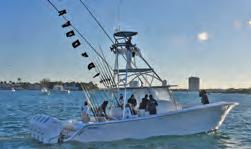 Tom ‘Buzz’ Bzura managing director West palm Beach Fishing Club
Tom ‘Buzz’ Bzura managing director West palm Beach Fishing Club


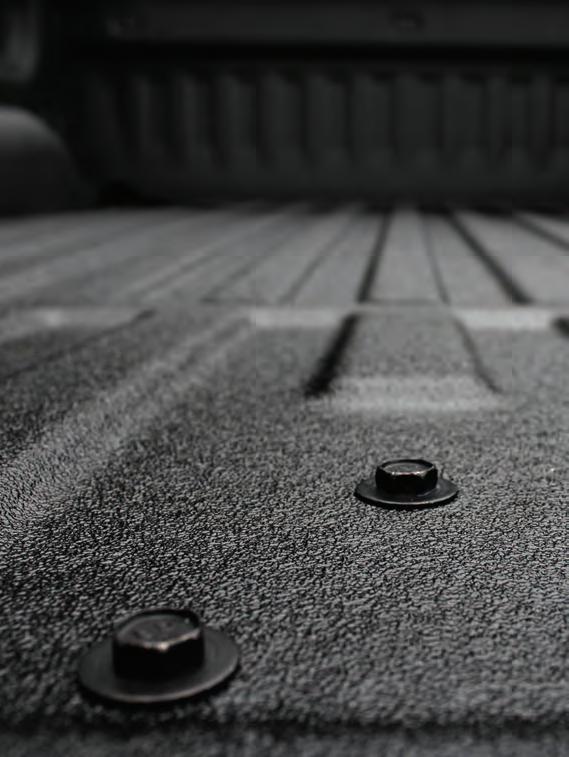 C hu C k papp
C hu C k papp
3 high quality knives that would make a great addition to your everyday essentials....

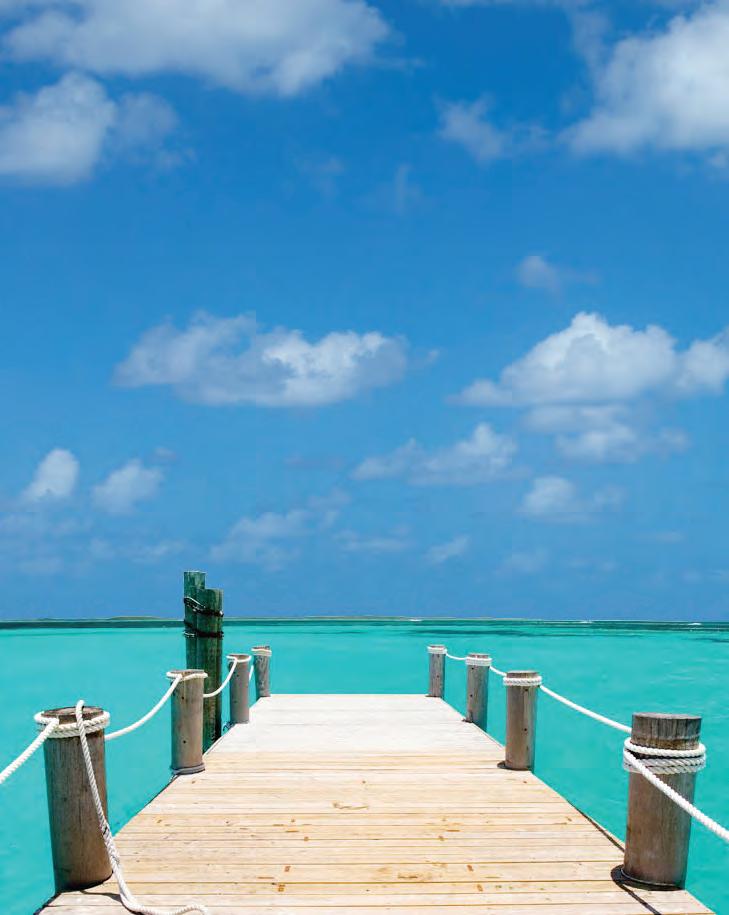
Back in the day, there was one item that was found in just about everyone’s pocket. A good old-fashioned pocketknife. No one thought about going out into the wilderness, on the boat, or to the lake without one. It seems like today it’s been forgotten about, and for no good reason. Carrying a knife with you every day should be the same as grabbing that cellphone. Even a pocketknife in a woman’s purse should be just as important as the other 20 plus items that may be in there, and maybe one of the most important.
I can’t count how many times I have used a pocketknife to open an envelope or a package, cut a piece of rope, grab the tip of a wood splinter, open a pet’s feed bag, cut a piece of unraveling shirt thread, or that shirt tag that pokes your neck. I’ve been at a restaurant where the sharpest knife in the entire place couldn’t have cut a stick of butter and ended up using the knife, I had on me.
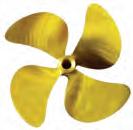


That knife you have on you could actually save your life if needed in self-defensive.
Knives come in a wide variety of styles, shapes, blade designs, and steels; there is something for everybody. A good high-quality pocketknife is generally around a $100. You can spend less but remember, it’s a tool. A very useful tool, so spend a little more and it could last you forever. A few good companies to look at would be Benchmade, Spyderco, Ka-Bar, Case, Buck, and Columbia River.
Go out and get yourself a good pocketknife, you just might wonder how you got along without one.

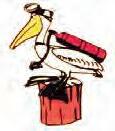


































Cap
T. J O h
January was a tough month for our exotic fishery, as we suffered a large fish die-off of peacock bass due to cold weather from a severe cold front. But there are plenty of survivors, and it should be an excellent year for peacock bass fishing once the waters warm up. Fishing in the Everglades starts heating up as the water level drops. Walking plugs and prop baits for top-water action and jerk baits for subsurface action will keep you busy reeling-in fish. I try to avoid fishing for the bedding fish as they are simply trying to make more babies for us in the future. There were no reports of any deceased clown knifefish or snakeheads, so as we get warmer weeks in February/March, that will be a great time to target those.
Clown knifefish can be tricky, and the internet offers plenty of information on their areas, The Lake Ida Chain being one of them. Soak a live shiner on the bottom in various spots for a minimum of 30 minutes to attempt to catch them.
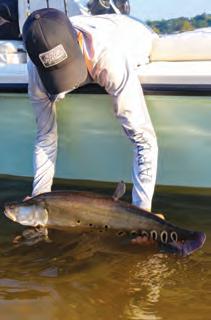
I use a BKK size 2 Octopus Hook with a split shot about 15” up the leader. It’s important to let it soak!
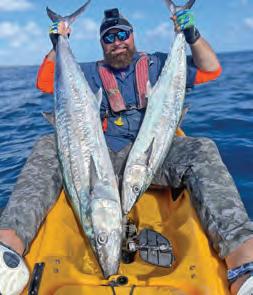
Snakeheads are a completely different ball game. Topwater frogs like the American Snakehead Customs “Frog King” is one of my favorites to target big “sneks” (yes, that is their nickname). Snakeheads also react well to spinner baits and chatter baits if they are in more of an open area, and you will find plenty of largemouth bass while
snakehead fishing. I have plenty of videos of catching “sneks” on my YouTube channel searching “Johnny Stabile”. February is one of my favorite months to target largemouth bass. The cooler temperatures have them out and hungry.
February is a good time to target a lot of different species. From pompano, jacks, sheepshead, and sharks around deeper cuts to snook, reds, flounder, and trout along the mangroves, bridges, and docks. During this time the water is a lot colder than most of the year. When fishing the flats around mangroves, hit the water a little later in the day and target sand holes and areas with dark mud. These spots will warm quicker than surrounding areas and should be holding fish. Remember, snook season opens February 1. Tripletail is another great target this time of year. Throwing a D.O.A. Shrimp on a Crowder 7’ rod near structure like crab pots and channel markers are great places to find these fish.
Come February cobia is on the mind. These fish will start to move into the beaches following around the rays, sharks, and turtles. I like to have a D.O.A. Swimming Mullet ready to pitch to them when spotted. Sailfish, kingfish, wahoo, and dolphin will also still be frequent catches in February. Look for these guys to be found from 90-120 feet chasing goggle eyes, pilchards, and blue runners. Finally, don’t forget about the nearshore bite. Spanish mackerel and bluefish should give a lot of action off most beaches around Palm Beach County.
Peacock bass, clown knifefish, and largemouth bass will all be fired up this time of year. Try launching your kayak at John Prince Park and fishing structure like bridges and docks for all three species. Live baits like shad and shiners will be best, but artificial jerk baits and rattle traps will also work.
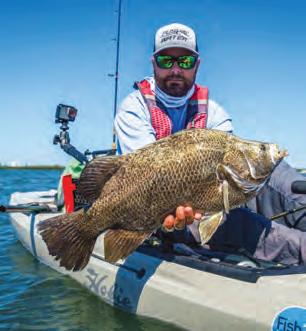
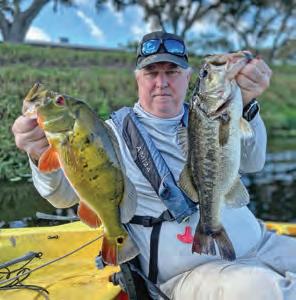
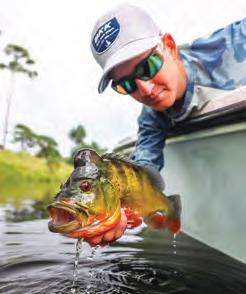
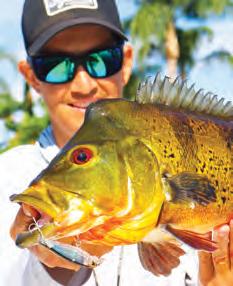
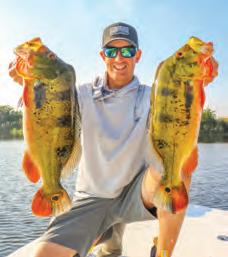
Check out Pushin’ Water Kayak Charters on Facebook, Instagram, and YouTube for all the latest adventures my clients and I get into.
See you on the water!
We’re having an awesome sailfish season in Fort Lauderdale this year. They are snapping! Cooler temperatures this month are getting the sailfish active and hunting, all over the reef and edge of the Gulfstream. The blue water gets pushed in pretty close this time of year and generally forms a nice current edge where the green water meets the blue. The blue water side of this current edge is a great area to set up for kite fishing. Live goggle eyes, threadfin, mullet, and tinker mackerel are all great live baits to use for kite fishing. They stay lively for a long time on the kite, and they put off great vibrations/ fish-in-distress signals. When that sailfish comes up on your kite bait and sticks that hairdo up, it’s the most exciting few seconds in sportfishing.
Tuna, dolphin, and wahoo are all biting pretty good just outside the reef this month. Trolling is a great way to cover a lot of ground, looking for some fish. I like to troll between 120-250’ of water, up and down the coast, until I figure out what depths the fish are biting best on that day. Fish a doublehooked swimming ballyhoo on a deep line and you’ll have a good shot at big wahoo. A lot of big wahoo are caught this time of year. Bluefish also sometimes migrate northward up our coastline this month. Following right with them are big game sharks like hammerhead and mako, feeding on them at will. This is the beginning of our big shark fishing season which will last through May. There’s a great variety and a lot of action fishing in South Florida this month. Tight lines and good fishing!

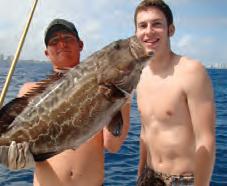

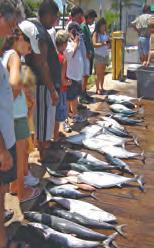
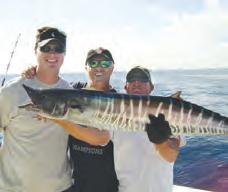
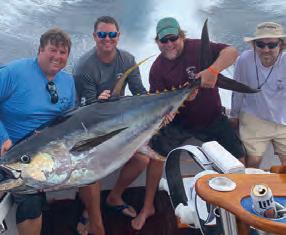
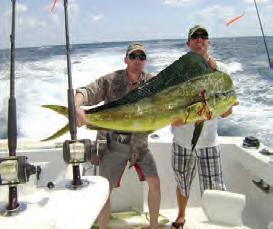
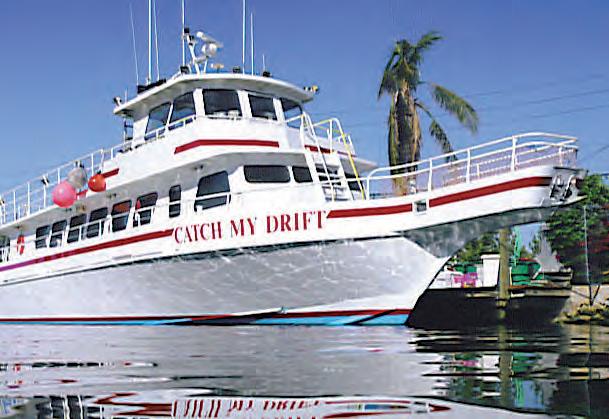
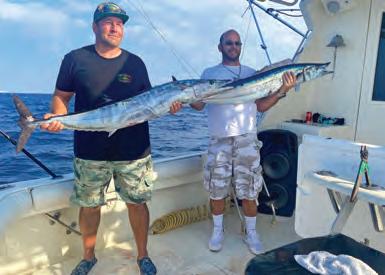
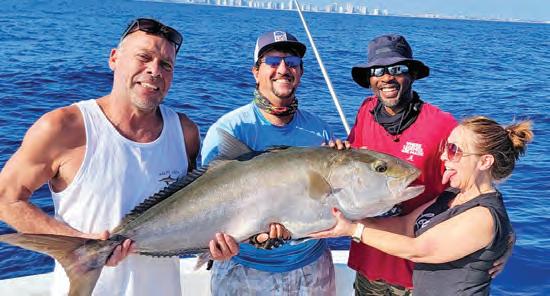




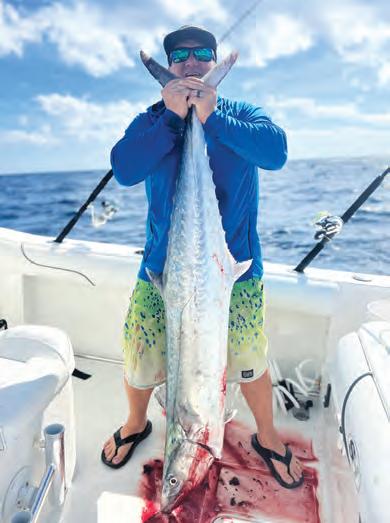


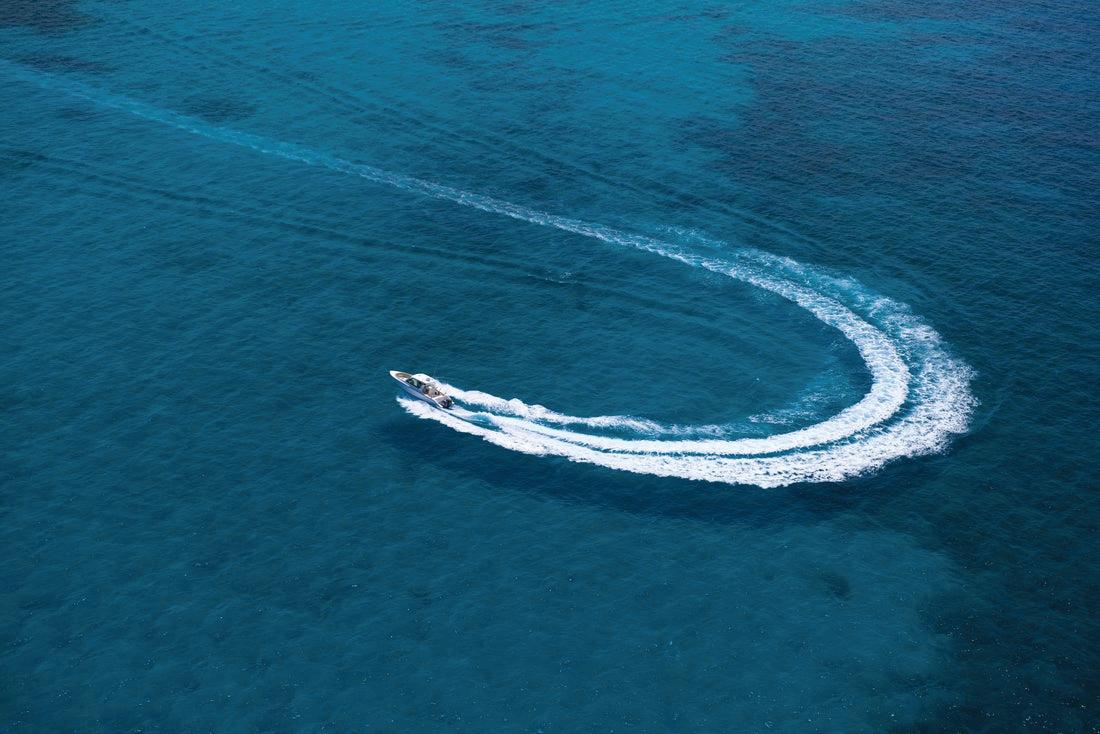


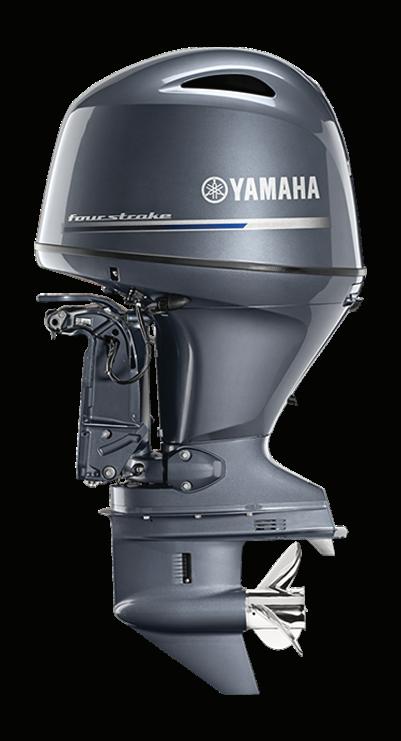
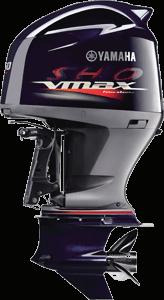



Over the next few months, waves of sh will ood the shallows to spawn. is presents the opportunity to catch some monster bass, and a plastic worm is always a main player for me when it comes to the spawn.


A Texas-rigged stickbait is a very common technique, but many people use it ine ciently by casting to a lot of dead water. I try to maximize productivity by casting to high-percentage targets. I focus on isolated cover. In the South, this could be small patches of grass and groups of pads, where spawning females are hidden from the naked eye. In other parts of the country, the structure might be wood or rock. Make multiple casts and work these areas slowly. I use a bigger-style stick bait, normally in the 6” version. Darker colors like a black and blue tip are my go-to. I use lighter 1/16- or 1/8-ounce weights to keep the bait looking natural. Use heavier line to cast around thick cover for large sh, but avoid braid which might be visible to sh in shallow water. I like 17- to 20-pound uorocarbon.
When I want to cover more water and locate sh, slowly reeling a big speed worm-style bait works great. e vibration the tail gives o drives sh crazy. It’s an awesome way to nd sh before slowing down to pick the area apart. I like darker colors like a junebug when the water has some stain and gravitate to more natural green pumpkin with some ake when the water is cleaner. I use ¼- to 1/8-ounce of weight and 15- to 17-pound uorocarbon.
A wacky rig is also e ective when sh are shallow. I sh it just like the Texas-rig in isolated cover, but I sh it weightless. is is great for heavily pressured sh. I use lighter line in the 10- to 15-pound range and a spinning rod for a wacky rig.

Flipping a worm is the last technique I will cover. is allows you to put a bait in places other styles don’t allow and e ciently pick apart heavy cover. I use a large Senko-style so plastic, and braided line is a must. I like 3/8 to ¾-ounce of weight, depending on the thickness of the cover. Remember, the only way to set yourself apart is to slow down and put your bait in places nobody else has.
Except for the wacky worm, rod and reel choices for each technique are similar. I like a longer 7’6” medium-heavy to heavy action rod for most worm shing. e 13 Fishing Omen Series has a few rods that are perfect for the job. I use a faster-speed reel like the Concept A 7:5:1.
For the wacky worm, I like a 7’ 3” spinning rod in medium-heavy. A reel with good drag is important, and I’d recommend the Axum from 13 Fishing.

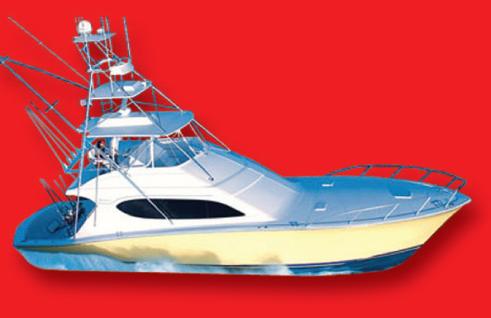

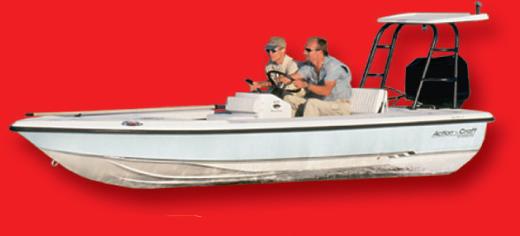



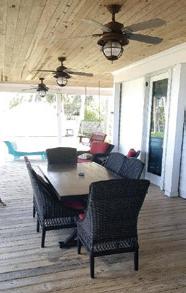

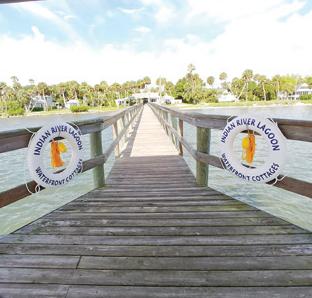
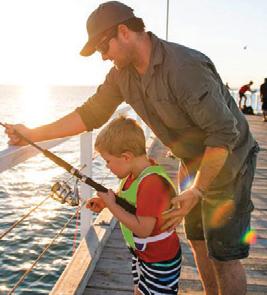




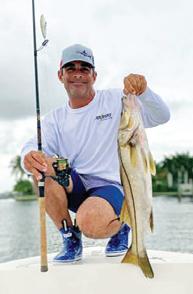






FOR MONTHS 0% 60



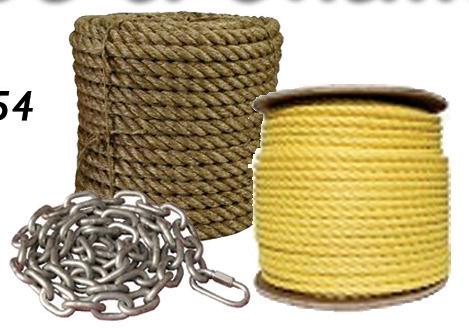
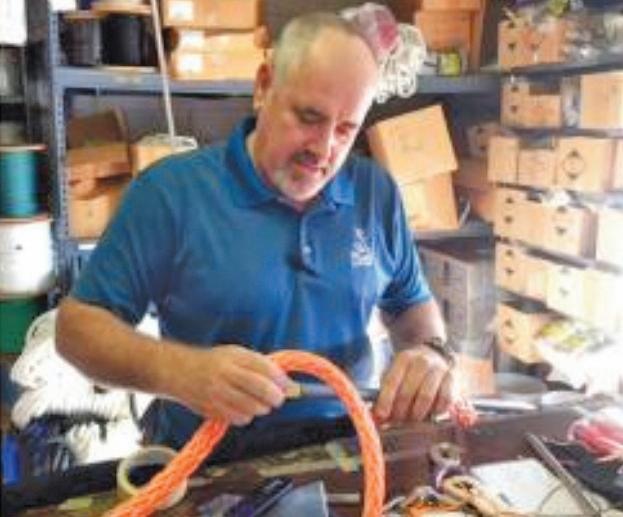
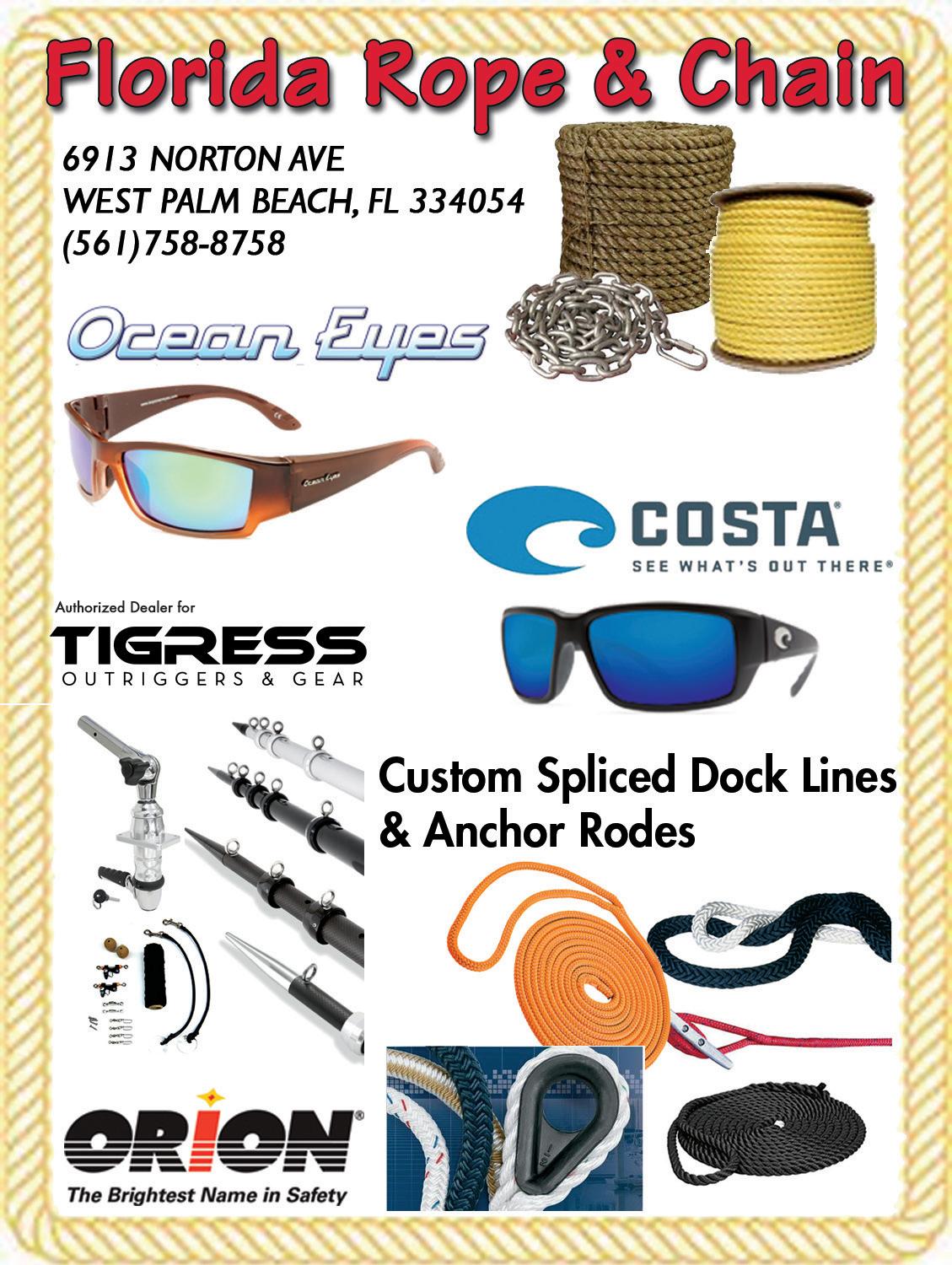
Since 1990, CraigCat has offered big performance in a compact, easy-to-use package! Their (DSTS) Dynamic Sport Tuned Suspension system, and (CHD) Calibrated Hull Design give you the smoothest ride and high-performance fun that no one else can duplicate, even in less than favorable conditions. Their (ASC) Automatic Stability Control gives the driver and passenger confdence in almost any conditions.




CRAIGCAT E2 ELITE
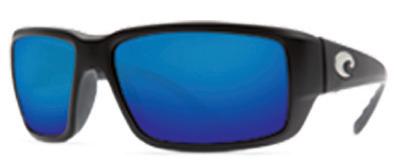
LOA: 11’4”
BEAM: 5’5”

DRAFT: 5”


HULL WEIGHT: 350 lbs.
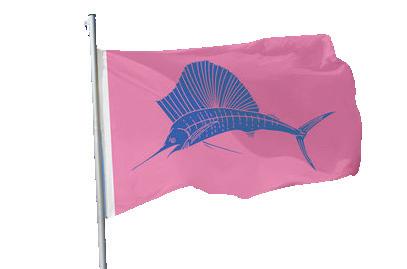
FUEL CAPACITY: 6 Gal.
MAXIMUM HP: 30
Whether it is fresh or saltwater, fshing or sightseeing, CraigCat has the right model for you! They have taken the CraigCat to a whole new level with the exclusive package. Loaded with amenities, the CraigCat E2 Elite features a premium JBL highdefnition sound system with USB and Bluetooth connectivity, custom deluxe bucket seats, full-width composite storage compartment, convertible Bimini top, ion docking, NAV, position, and LED courtesy deck light. They offer a wide range of accessories like the very popular GPS navigation system with down imaging sonar, wing storage racks for additional storage, polished stainlesssteel propeller, and the list goes on.
Portability is a big thing when it comes to boats. Not only is a CraigCat very portable with a total weight of 550 pounds, practically any car can tow a CraigCat with the combined weight of 800 pounds, boat and trailer. High quality and great value are what you get with a CraigCat.

With costs sky rocketing out of sight in the marine business, the CraigCat is very affordable. The E2 Elite 25hp model complete is only $13,485!
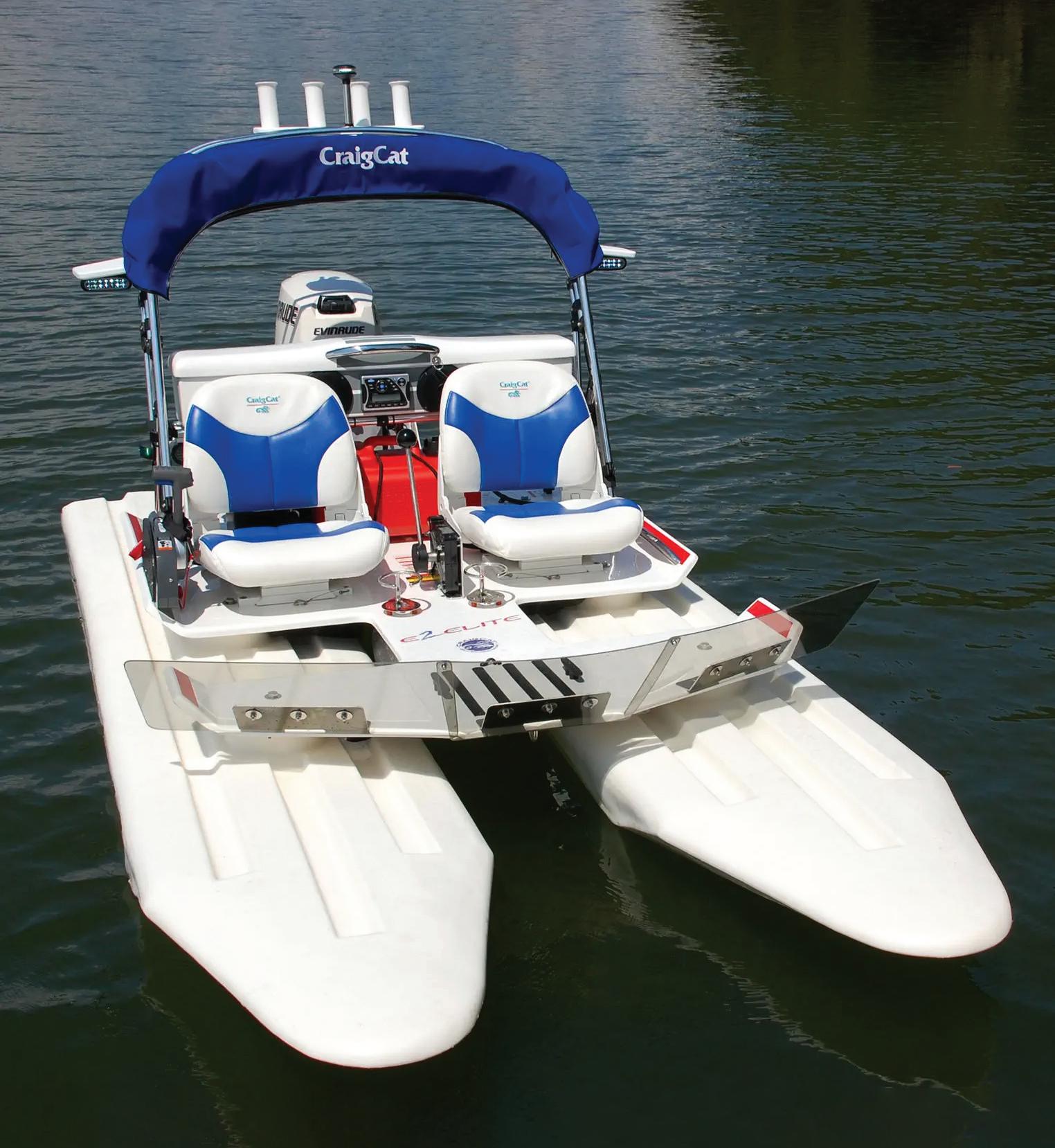
FOR MORE INFORMATION, CALL 1-833-CRAIGCAT OR VISIT



CRAIGCAT.COM



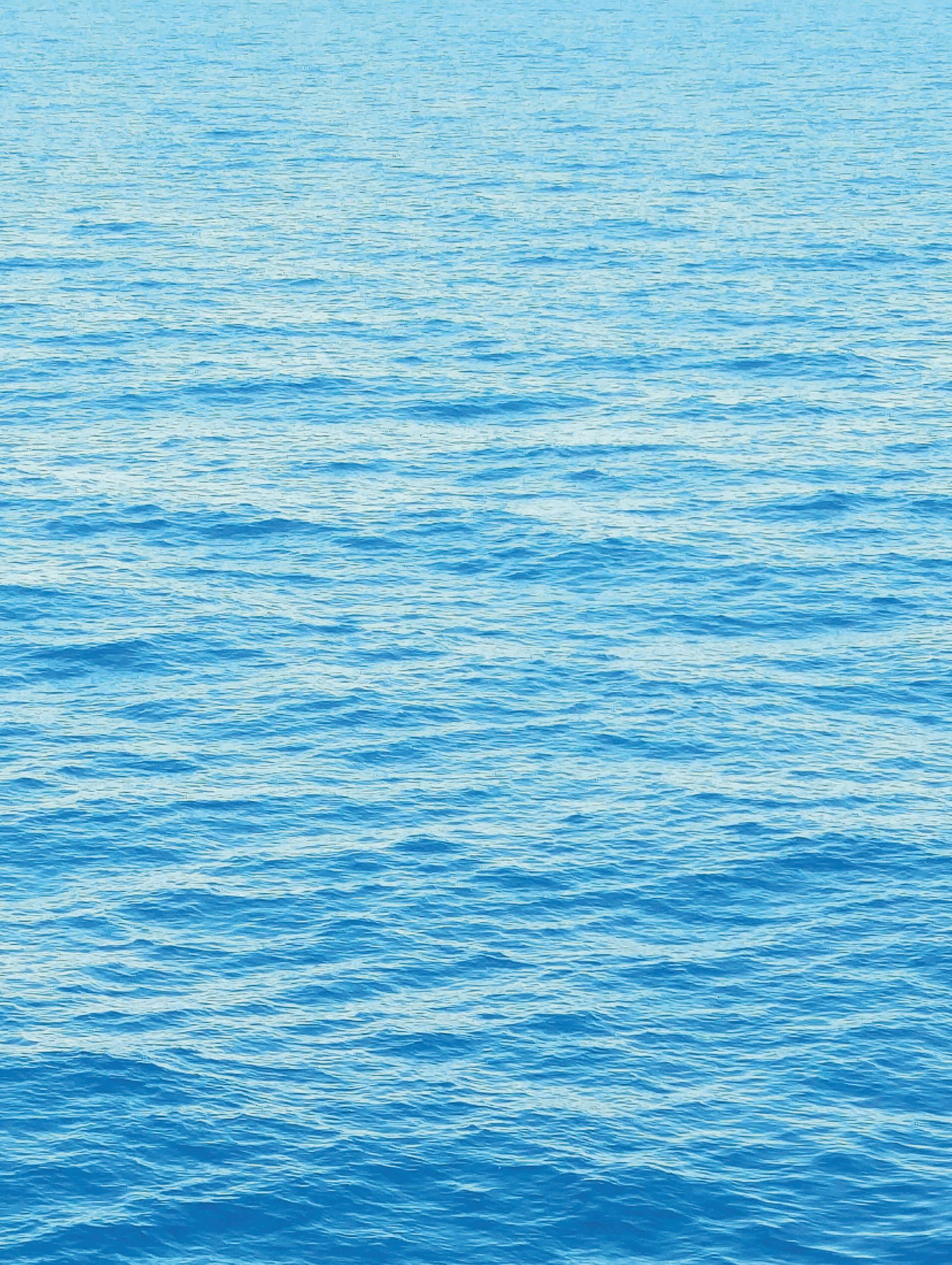

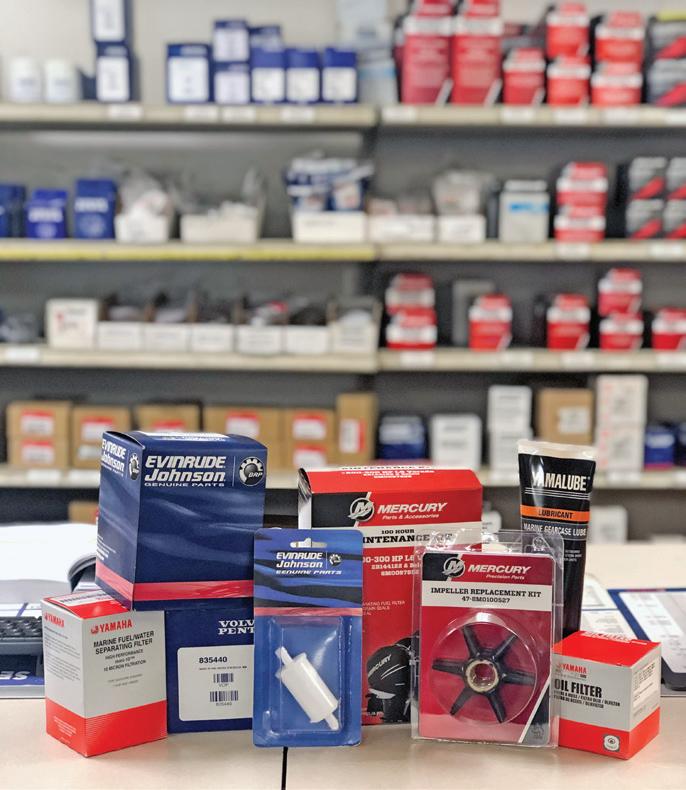
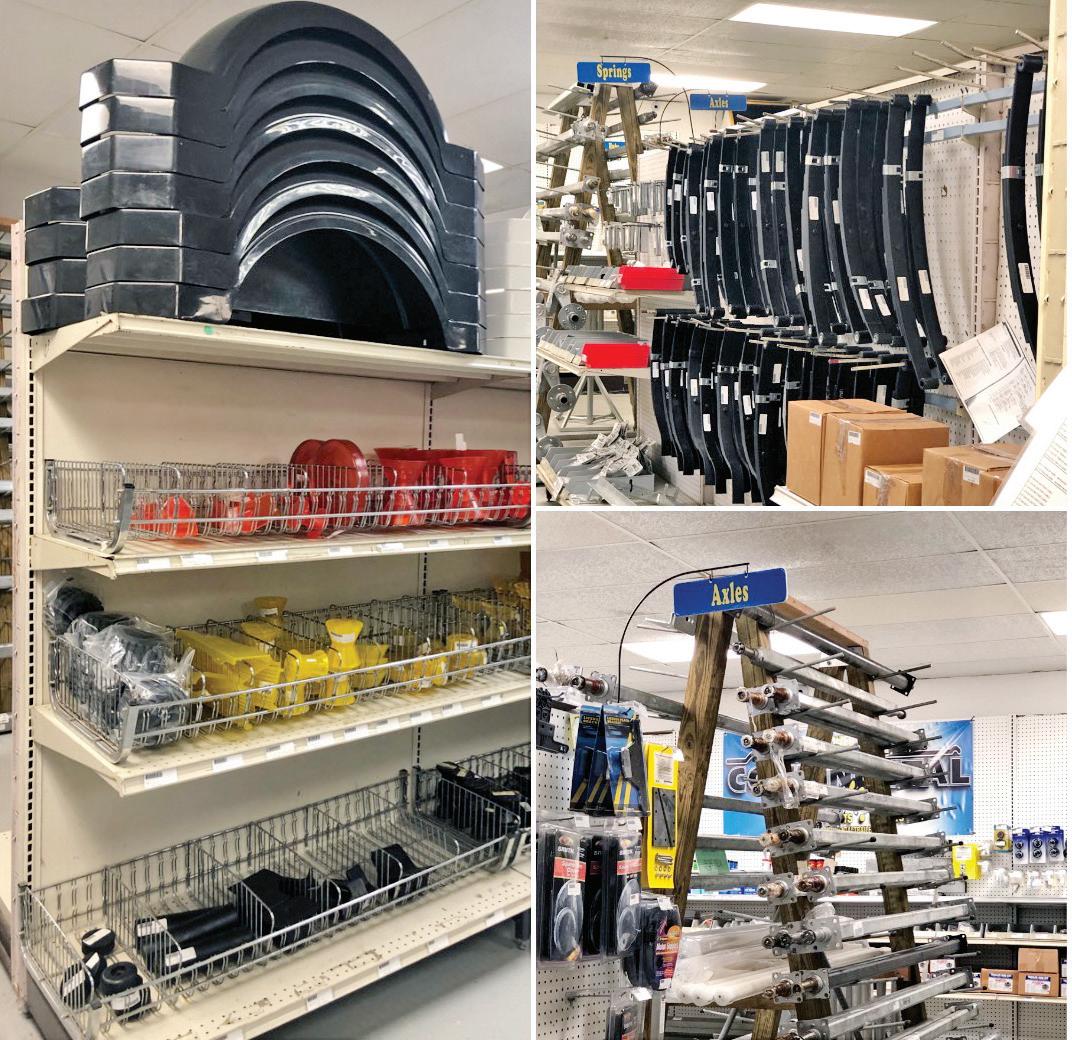














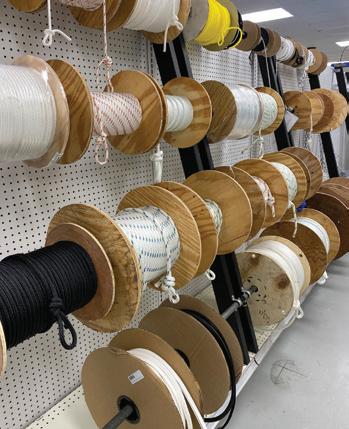
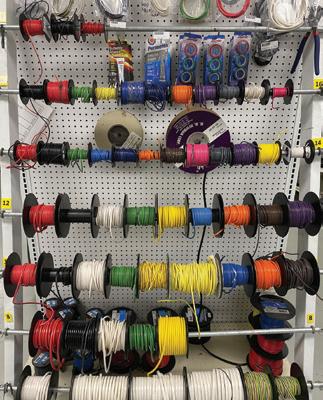

Here’s a memorable beach moment: You’re basking in the warm sun, toes in the sand, letting the gentle turn of the foam-capped waves lull you into a state of complete relaxation. As your eyes scan the endless horizon of blue on blue, you’re rewarded with a school of dolphins making their way across the sea. There’s no denying their signature shape as they leap from the water. If you don’t see anything else extraordinary the rest of the day, you can take solace knowing you’ve witnessed one of nature’s most playful and intelligent creatures in their natural habitat.
Why not re-create that special toes-in-the-sand moment with our Blue Topaz Dolphin Pendant? The beloved sea mammal has been captured mid-jump in sterling silver. And, tucked into its fins is a full two carats of shimmering blue topaz.
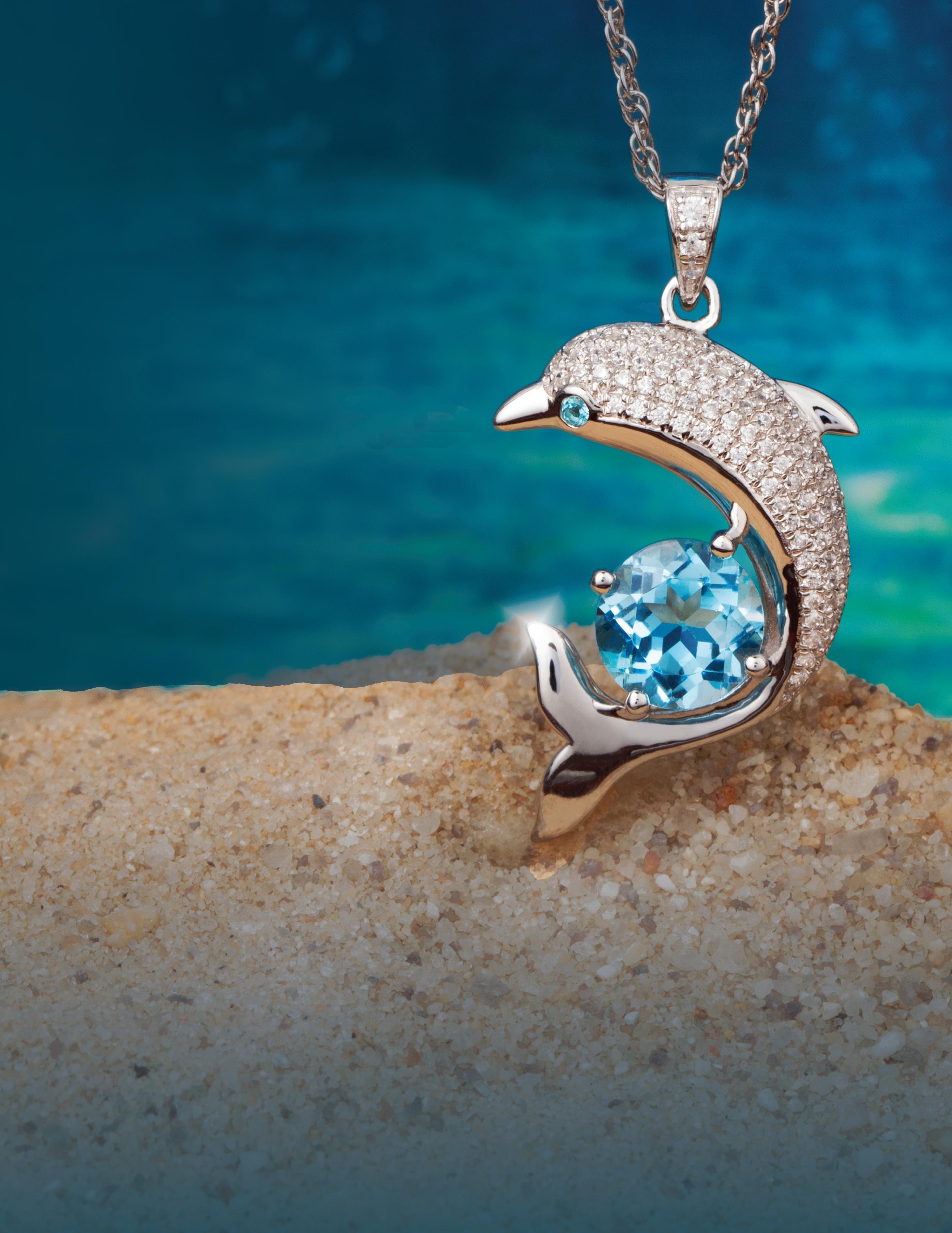
Nothing captures the shimmering color of the ocean in the midday sun like blue topaz. With its sparkling clear blue color and high refractive index, blue topaz is one of the top-selling blue gemstones. And with our special price, you have quite the catch.



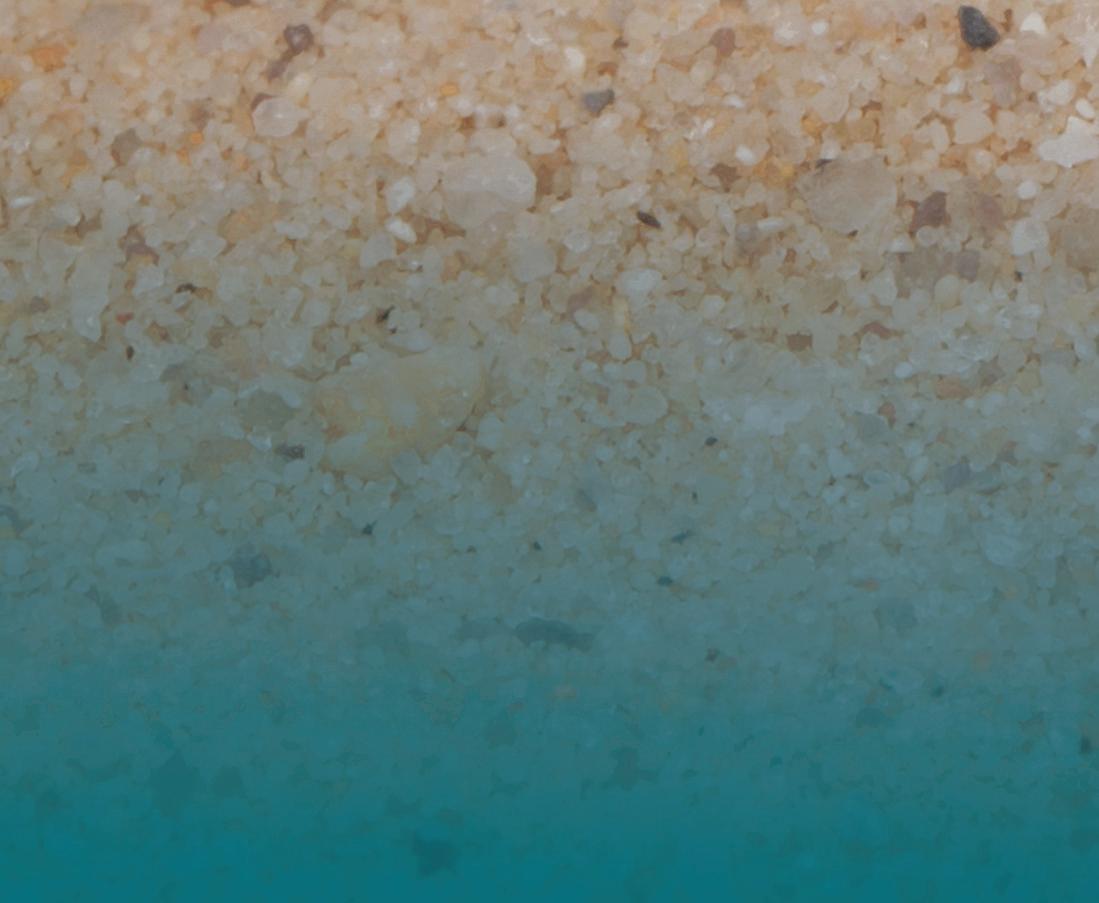
Satisfaction guaranteed or your money back. Enjoy the Blue Topaz Dolphin Pendant for 30 days. If it doesn’t pass the test swimmingly, send it back for a full refund of the item price.
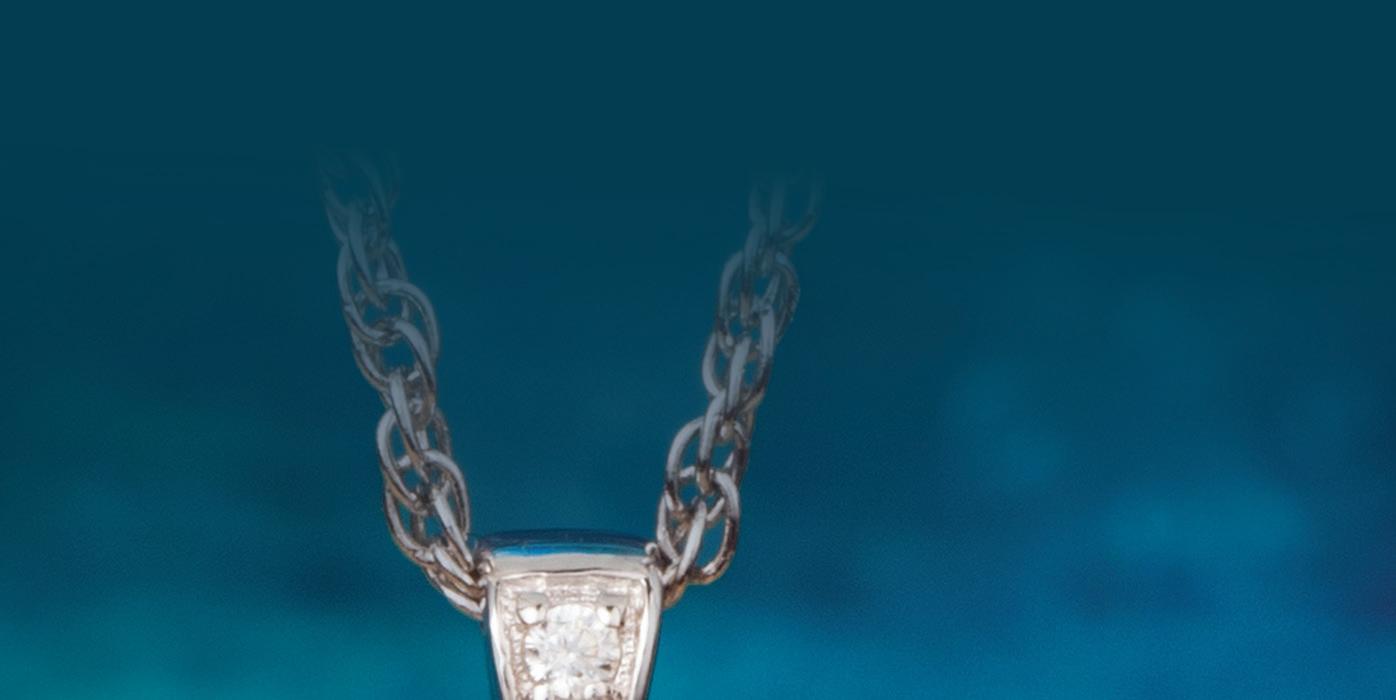
Limited Reserves. A full two carats of genuine blue topaz set in sterling silver for this price is as rare as a dolphin sighting. We cannot guarantee availability for long. Call today!

“This sterling silver dolphin is absolutely beautiful and the blue topaz is like the color of the ocean”
— Vivian, Cabool, MO

“Enormously popular, significantly intelligent and scientifically sophisticated, dolphins are amidst the most beloved animals among people.” — Dolphins-World êêêêê
The 2023 Academy Sports + Outdoors Bassmaster Classic—widely known as the “Super Bowl of Bass Fishing”—will be held March 24-26 in downtown Knoxville, Tennessee and on the University of Tennessee Campus.
e Bassmaster Classic is one of the world’s most prestigious championship tournaments and pits 55 of the world’s best bass anglers against one another for the title of Bassmaster Classic Champion. e Classic is a catch-and-release event, with bass being returned to the shery under the supervision of the TWRA.


Daily takeo s will be from Volunteer Landing on the Tennessee River in downtown Knoxville each competition day, and weigh-ins will take place in the ompson-Boling Arena on the University of Tennessee campus. e fan favorite Bassmaster Classic Outdoors Expo will be held Friday through Sunday, March 24-26 in the Knoxville Convention Center and the adjacent World’s Fair Exhibition Hall.
All activities and venues are free and open to the public.
For more information, visit Bassmaster.com.

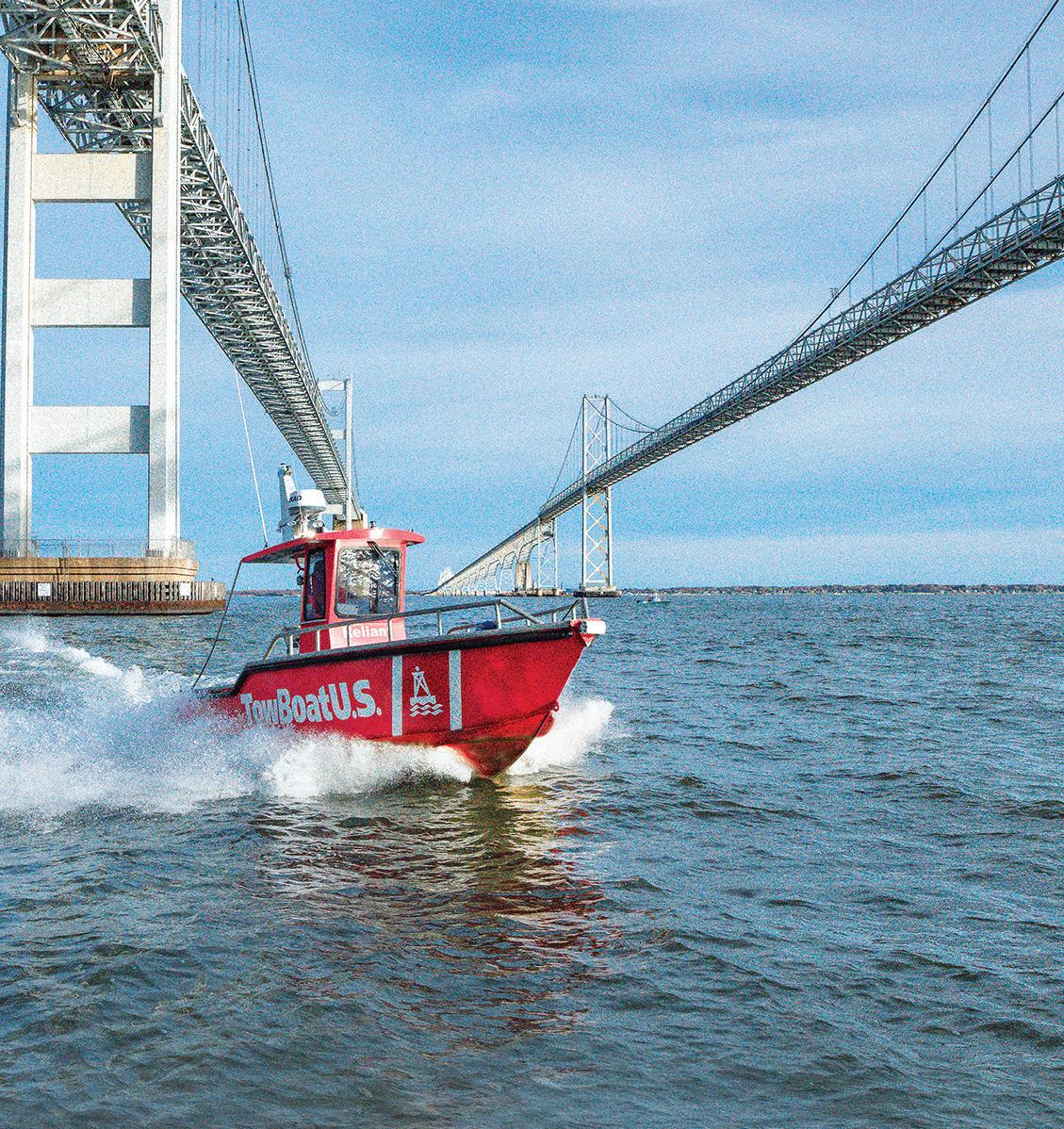



C-Hawk Boats has made a name for itself among boaters who want no-nonsense, custom-purpose vessels that are designed to perform and built to last. Owner Brad Grubbs said their C-Hawk 25 Center Console is an endlessly customizable boat that has gained a lot of fans among charter captains who fsh them hard every day.
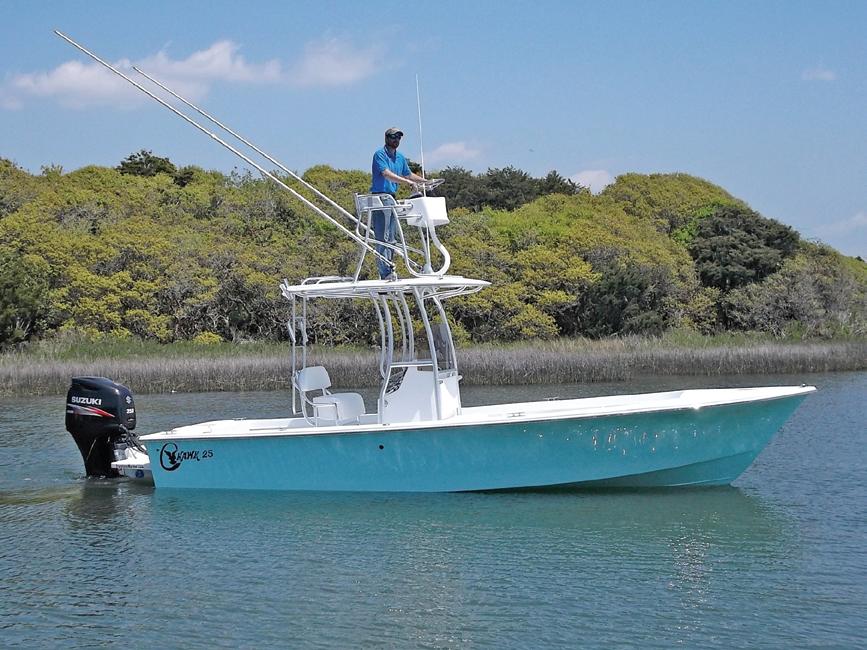
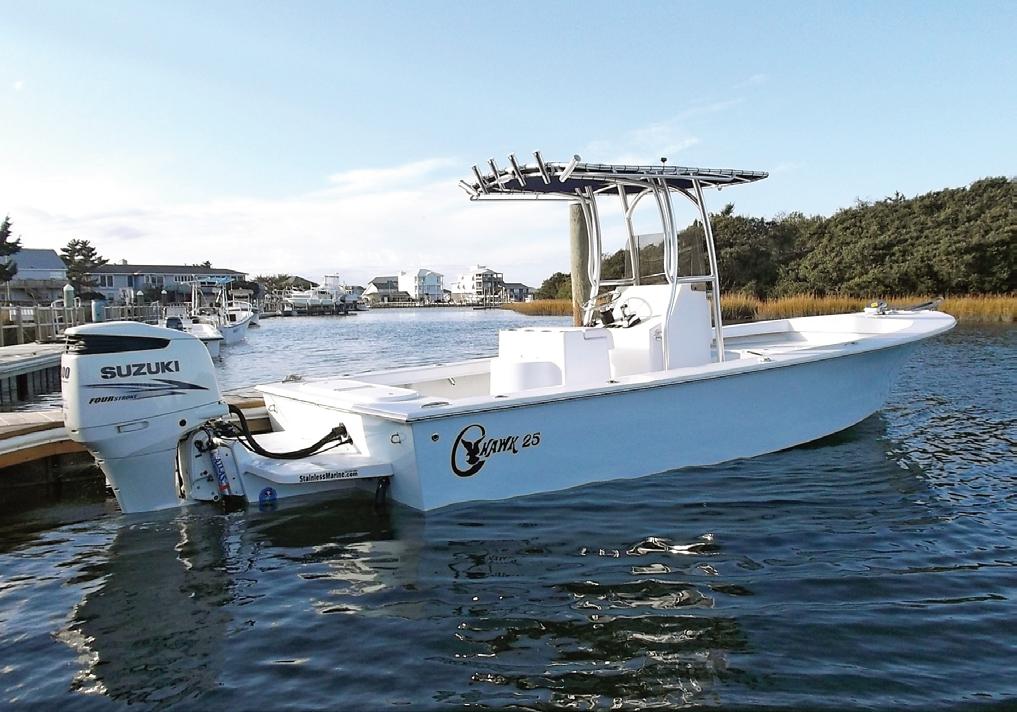
“We have 10-plus guides using them on the west coast of Florida,” he said. “In Georgia and South Carolina, they’re using it as a small passenger ferry. In Chesapeake Bay, it’s a crab boat.”

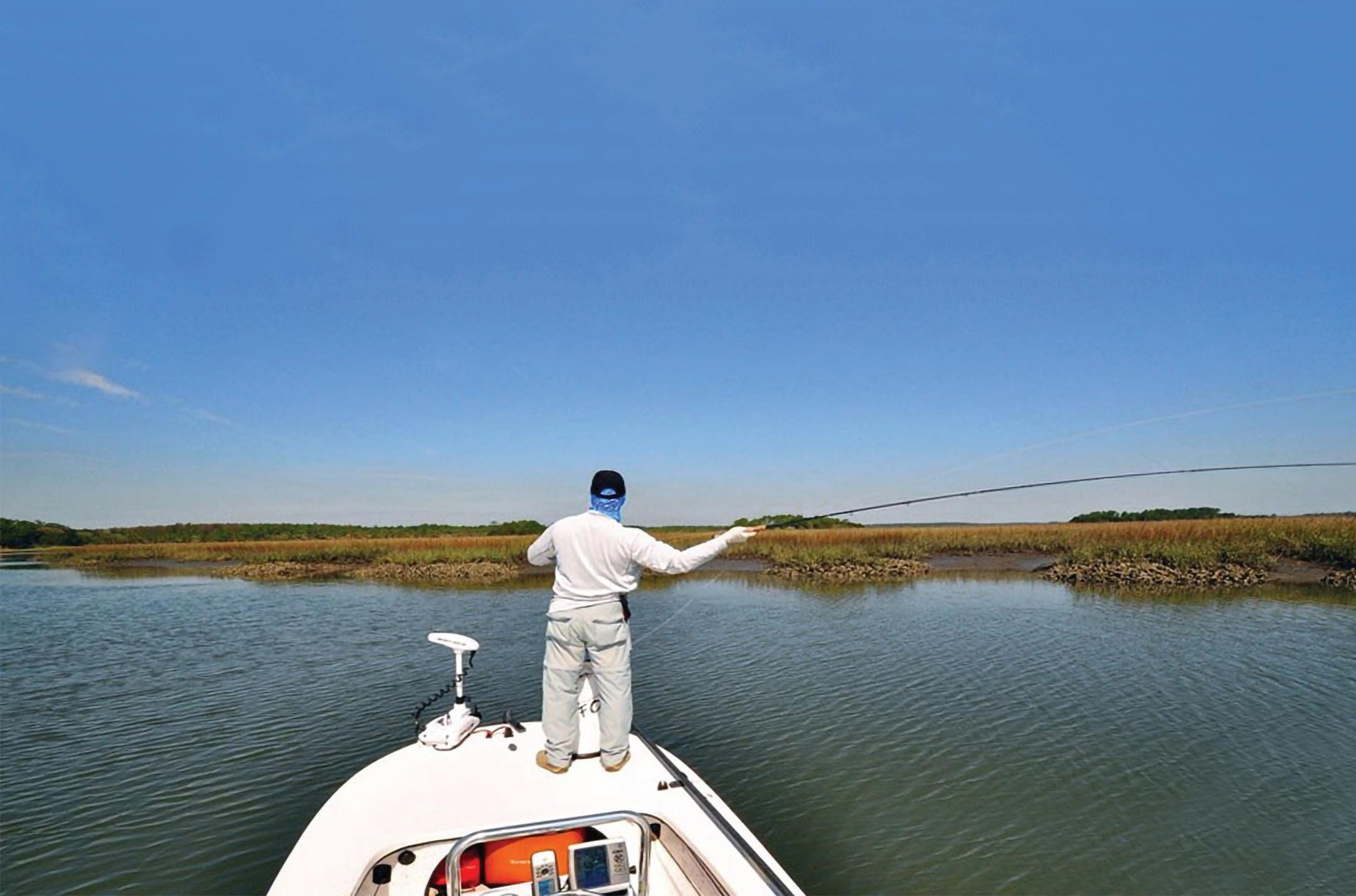
At its core, the C-Hawk 25cc is a hard-core workhorse with a 300 horsepower maximum that will take you anywhere you need to go. Its 9’6” beam allows it to foat in very skinny water with just a 12” draft, and it is also extremely stable, which should appeal for bottomfshing, diving and any other pursuit where a stable platform is preferred.

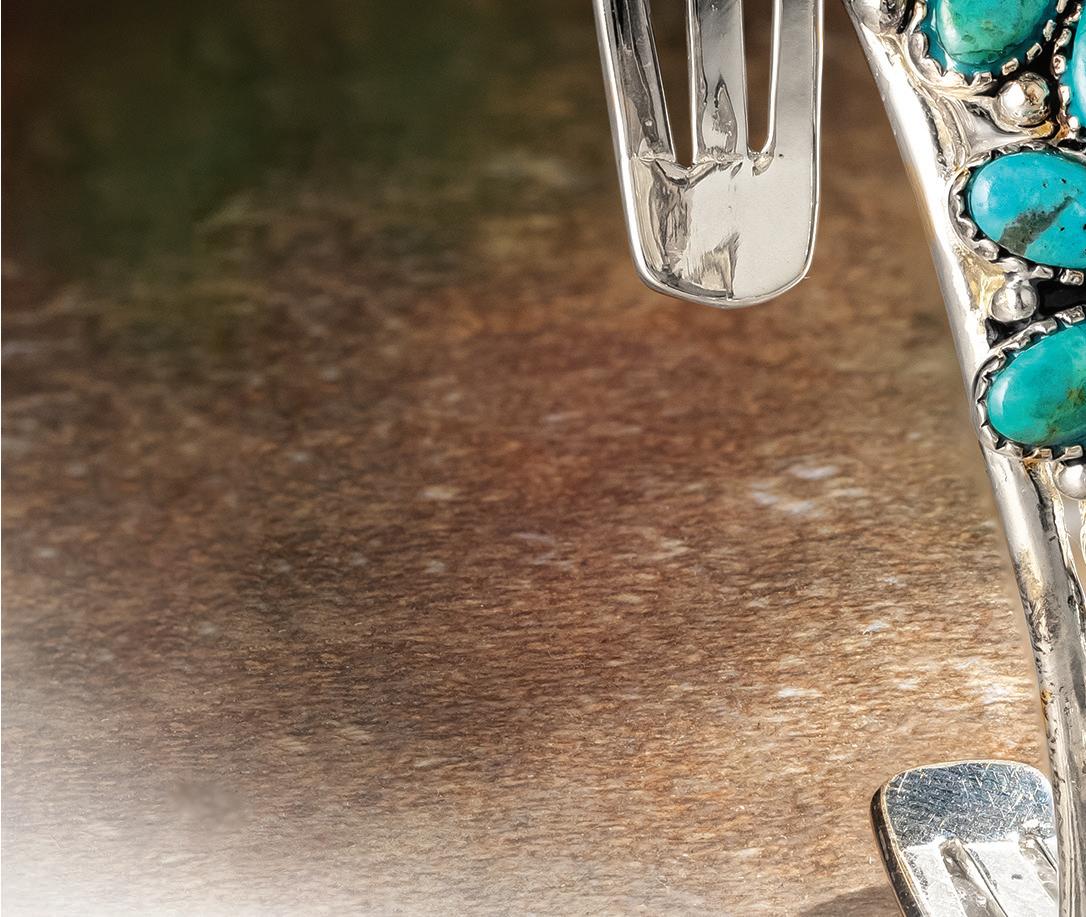
Whatever you plan to do with it, all C-Hawk boats are built battleship tough to commercial-application standards. They are designed to withstand hard use for years of trouble-free boating, and you can customize your C-Hawk from the factory in any way that suits your purpose.

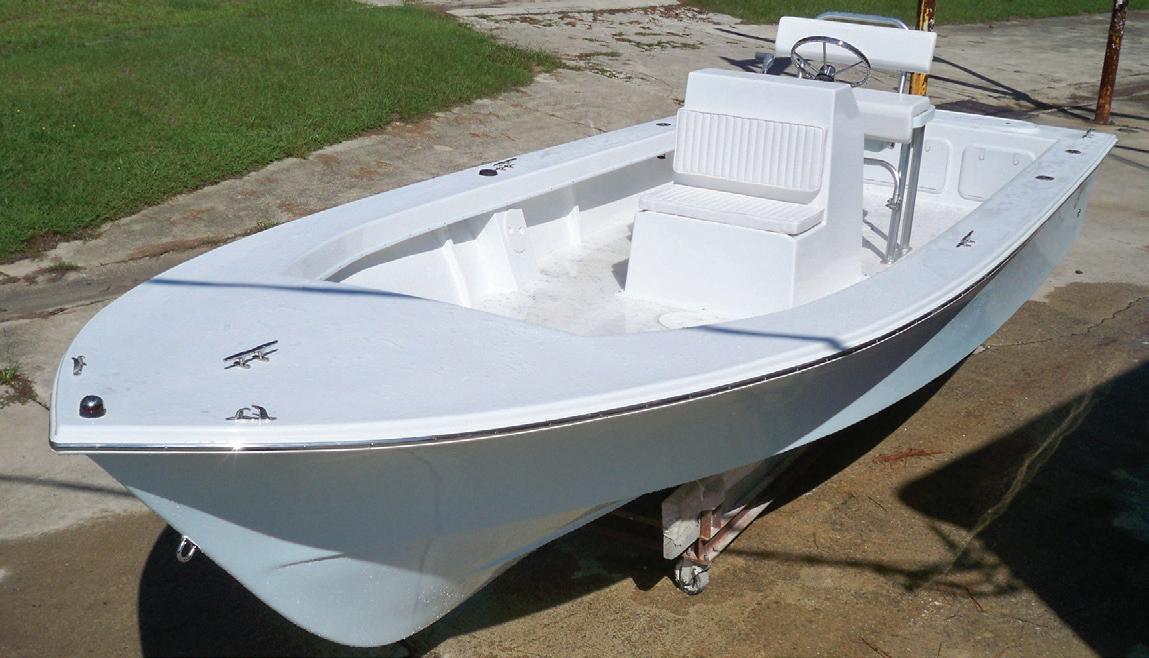
“We can mix and match consoles, fsh boxes, full transoms, cut transoms, bare hulls… you name it,” Grubbs said. “There are some recreational guys adding towers and sight fshing for cobia, and such. Everything we do is built around keep it simple, keep it effcient, keep it easy to maintain, keep it cost effective to own and operate. They are all unique… no cookie cutter trailer queens here. The 25 is a great example of what C-Hawk is.”

C-HAWK 25 CC
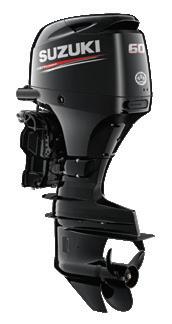
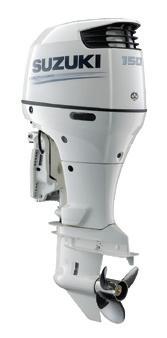
LENGTH: 24’11”
BEAM: 9’6”
DRAFT: 12”
DRY WEIGHT: 2,800 lbs.
COCKPIT DEPTH: 26” Fwd/ 23” Aft
FUEL CAPACITY: 112 Gal.
MAXIMUM HP: 300
DEADRISE: 12 degrees

TRANSOM: 25”/30”
What customers are saying about Stauer turquoise:

“Simply perfect”
— Tom J. “Stunning pieces”
— Marilyn W. “So pleased!”
— Linda K.
Genuine Arizona turquoise starting at $59

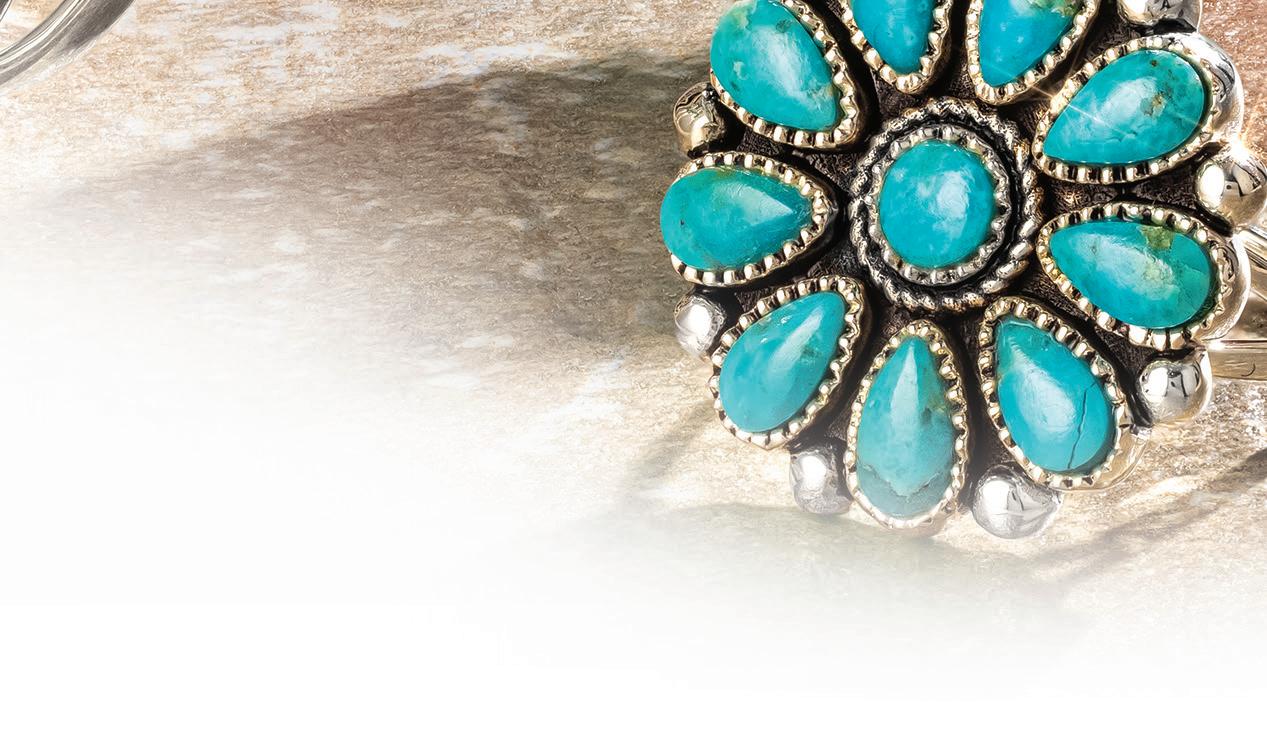
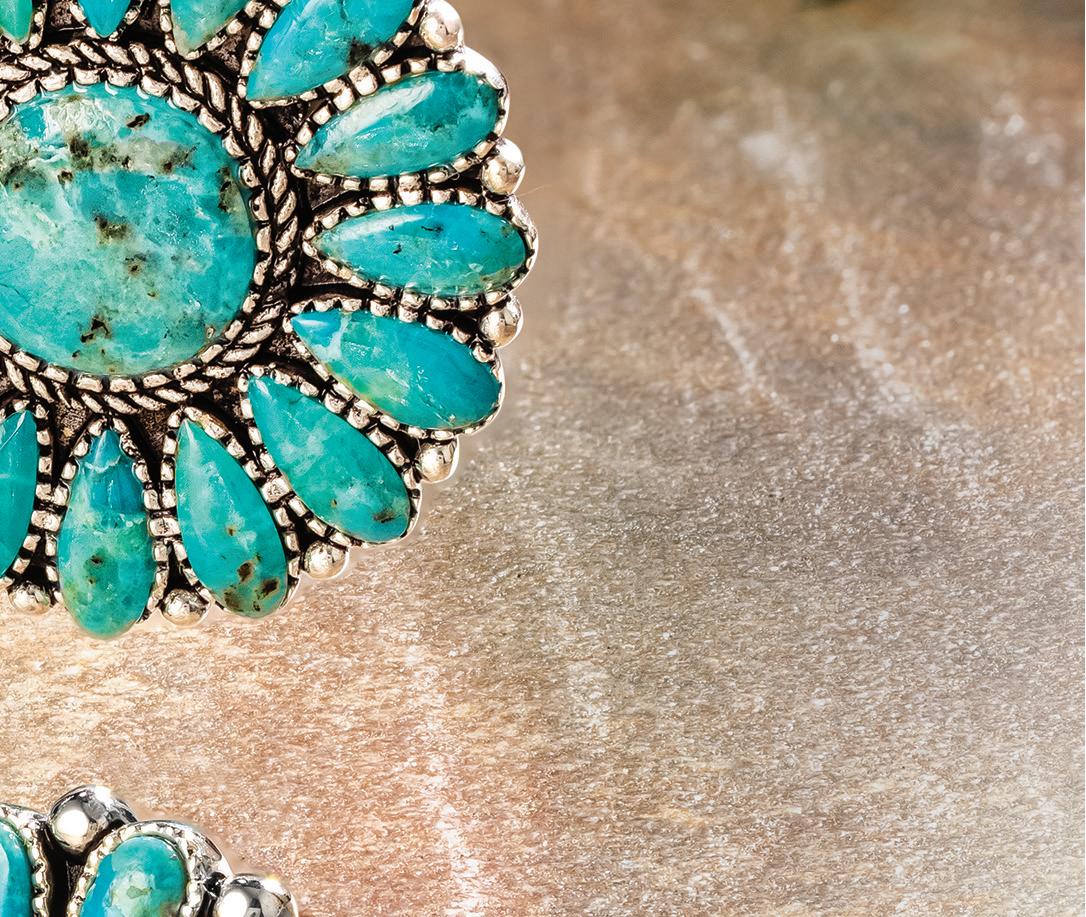
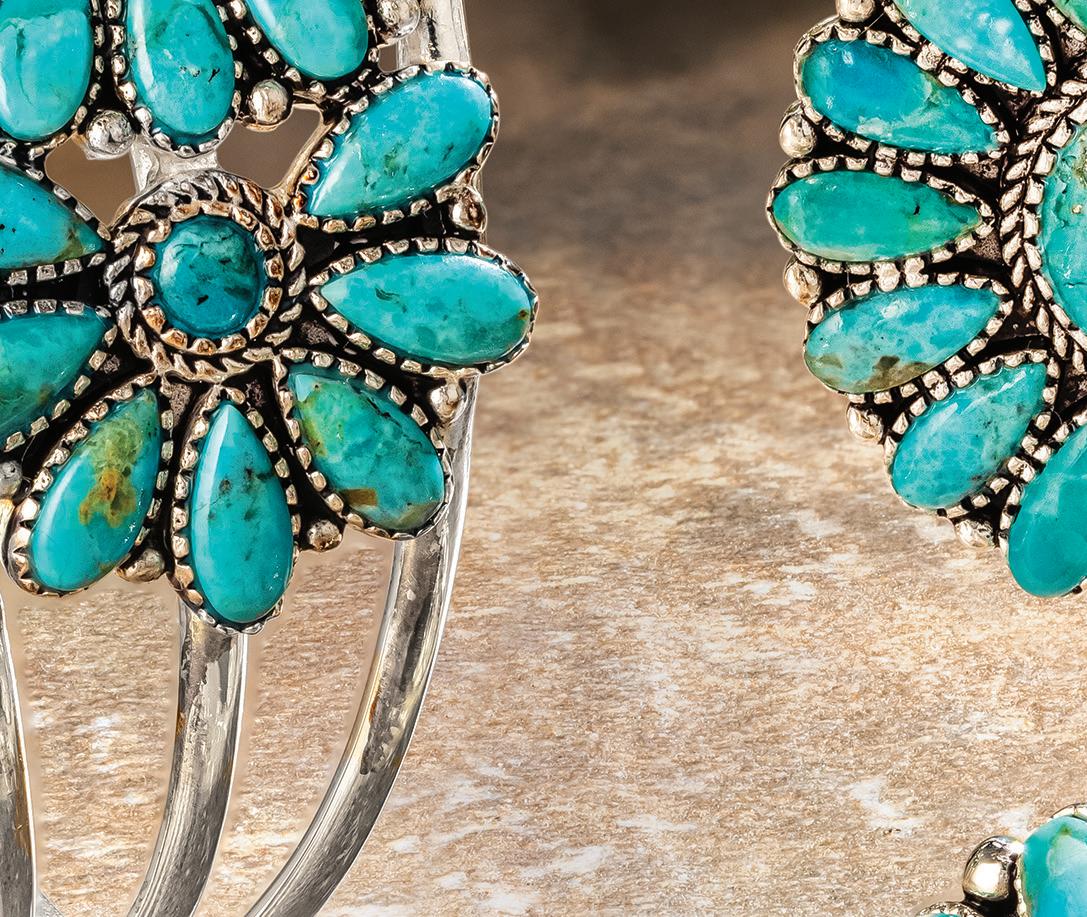
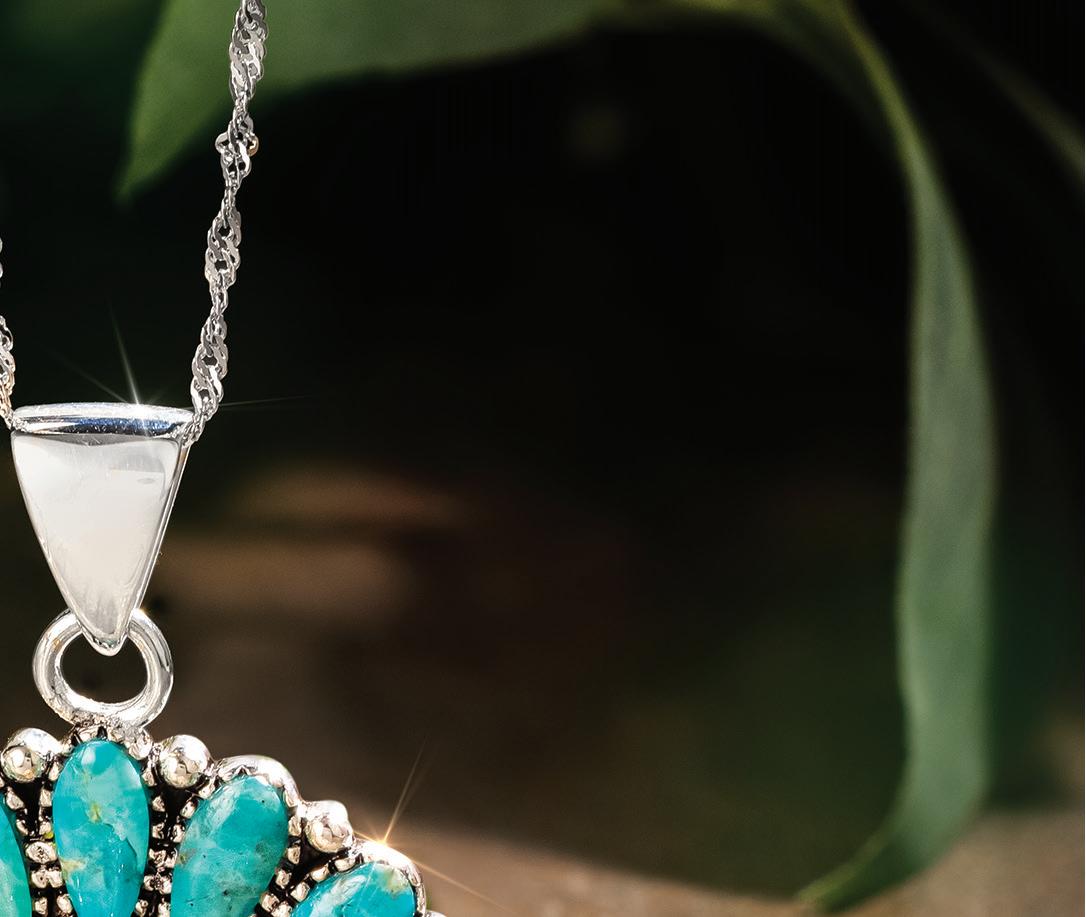
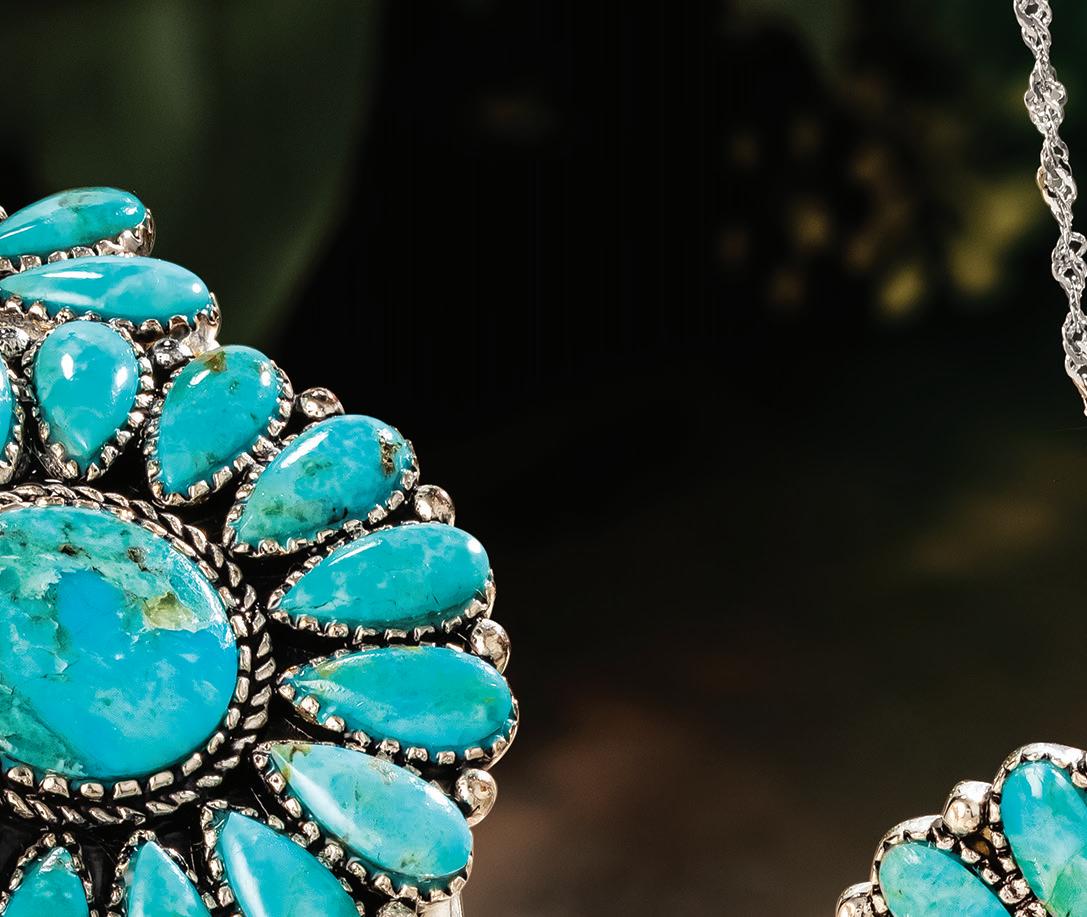

OldPete was a retired stuntman bursting with stories. There was the time he stared down a grizzly bear. There was the time he won a competition and got to kiss a Hollywood starlet as the prize. And there was the time he got into a fistfight with the Duke. Many stories. Some were probably even true. I know two things for sure: that he had an excellent collection of turquoise and that he owed me for a poker game he lost. The last time I saw him, he opened a drawer and pulled out a collection of beautiful Navajo turquoise jewelry to repay his debt. Pete’s jewelry inspired our Tucson Sun Turquoise Collection.
This jewelry set features turquoise that’s been gently enhanced to bring out its finest shades in a Southwestern motif. Finished with oxidized silver, this jewelry set captures the beauty and mystery of the Arizona desert. The rarest and most valuable turquoise is found right here in the American Southwest, but the future of the blue beauty is unclear. I recently spoke with turquoise traders who explained that less than 5% of turquoise mined worldwide can be set into jewelry. Once thriving, many Southwest mines have closed.
But Stauer saw this coming and is now one of the largest owners of gem-grade turquoise in the U.S. Don’t miss your chance to own the diamond of the desert. Act now. This is one of our fastest sellers, and we only have a limited supply of Arizona turquoise available for this ad. See why Stauer remains the best bang for your buck!
Jewelry Speci cations:
• Arizona turquoise. Oxidized silver finish. Ring: whole sizes 5-10. Pendant: 1 ¾" drop. Cuff: fits wrist to 7 ¼".
Tucson Sun Turquoise Collection
A. Ring (1 4/5 ctw) $299 $59* + S&P Save $240
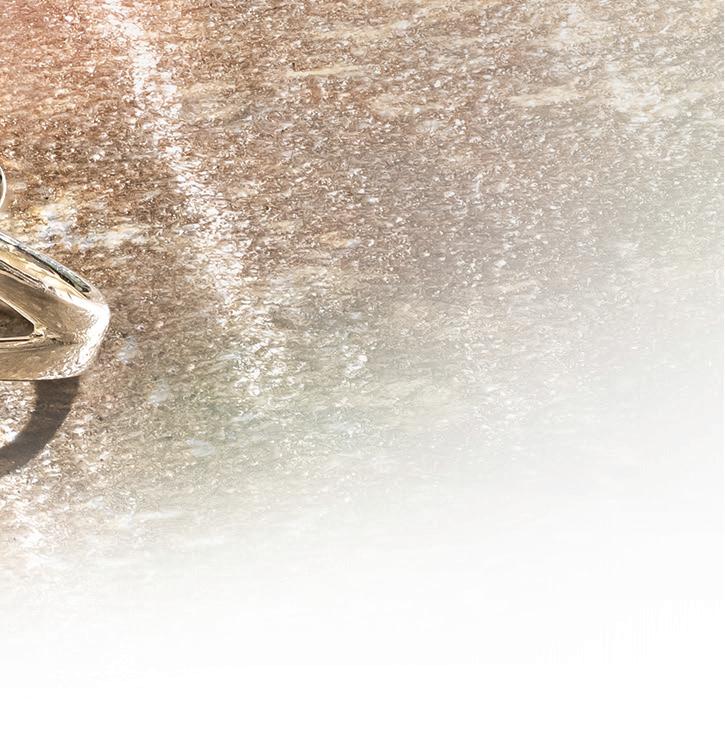

B. Pendant (7 ½ ctw) $399 $79* + S&P Save $320
C. Cu (11 ctw) $499 $149* + S&P Save $350
18" Sterling Silver Rope Chain $59 + S&P
Pendant & Chain $458 $129 + S&P Save $329
*Special price only for customers using the offer code.
1-800-333-2045
Your Insider Offer Code: TSC130-01
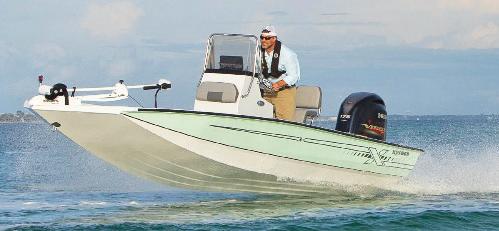
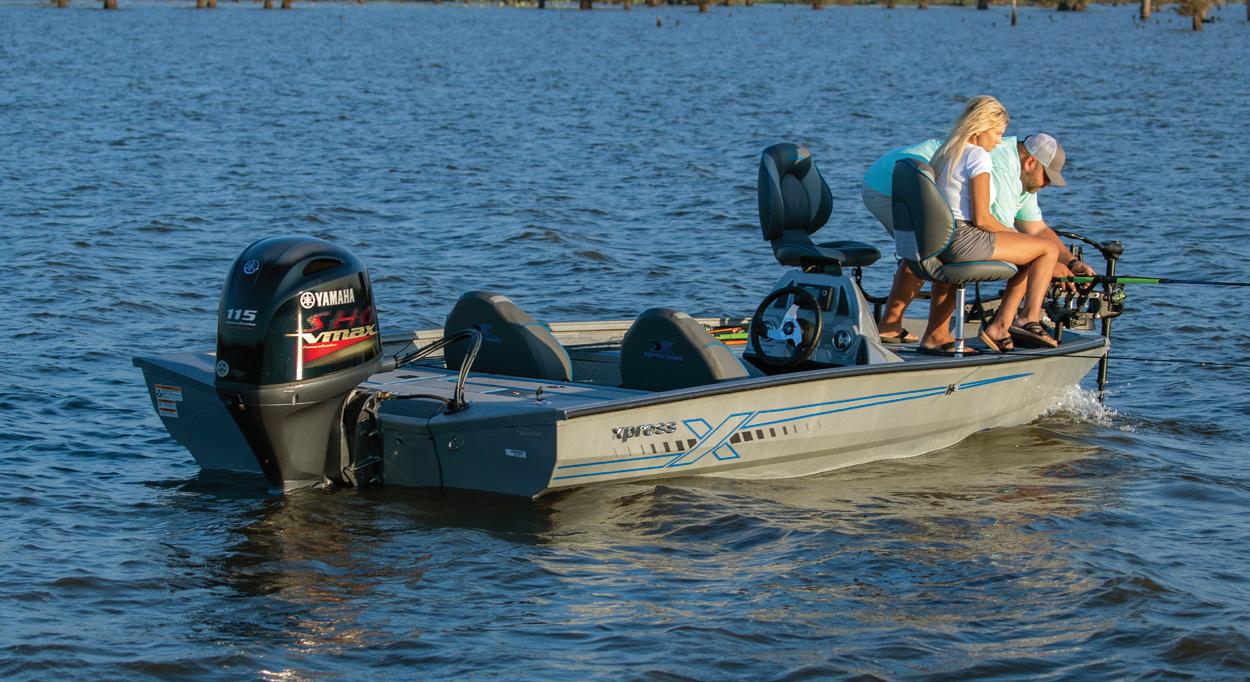




Introduced in the New Product Showcase at ICAST 2022, the all-new MHX HD Rod Rack is the ultimate shing rod storage system with space for up to 20 of your favorite rods.
Constructed from Marine Grade HDPE material, it will never rot, warp or damage your tackle. Assembled with stainless steel hardware, no environment is o limits. Whether used on the dock for a post-trip wash down or just to help organize your garage and tackle room, this rod rack is a solid piece of equipment designed for serious anglers.


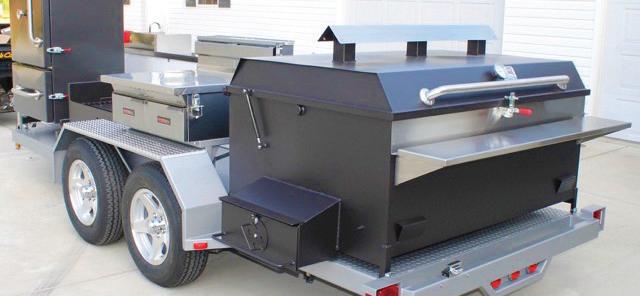
From y and light-tackle rods to heavy o shore rods, each rod’s ghting butt sits in CNC Milled recessed cups to add stability to all handle styles. e MHX HD Rod Rack has the size and the brawn to handle your full arsenal, indoors or outside. It even comes with four supports that lock in heavy duty bent butt o shore rods.

Measuring 26” x 16” x 8”, this heavy-duty, multi-purpose rod rack is easy to assemble and will nd a perfect place on your boat or dock, in the garage, or at the shop.
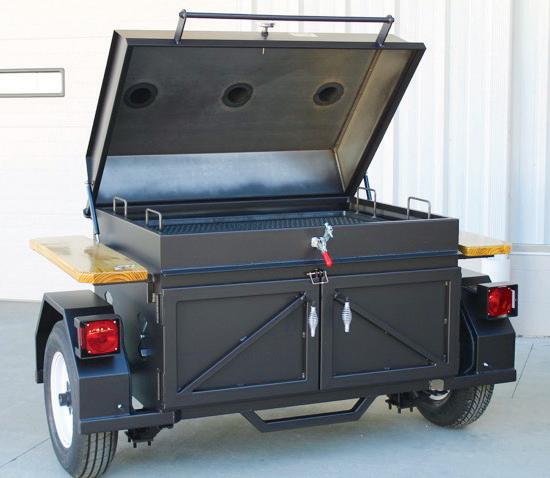
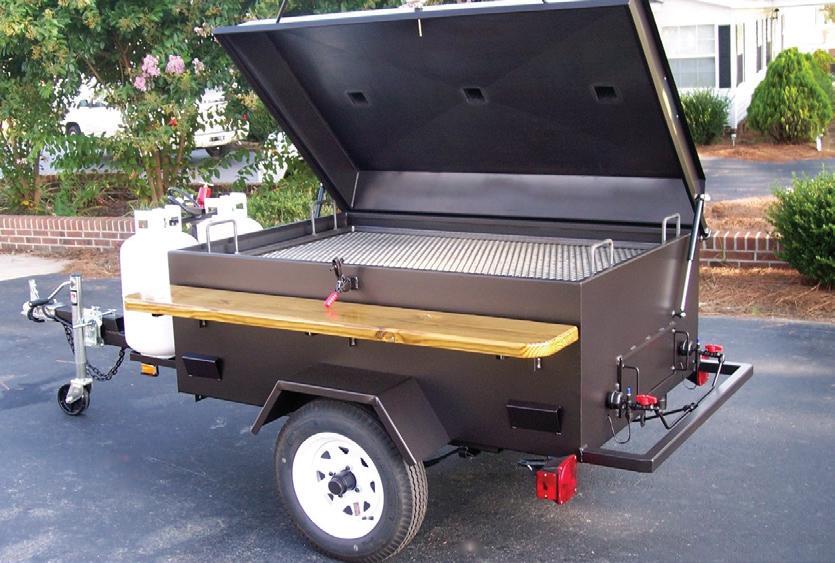
e MHX Rod Rack securely stores your rods, so they are ready at a moment’s notice. With an MSRP of only $229.95, you won’t nd a tougher, more versatile rod rack at such an amazing price. Shop for the MHX HD Rod Rack at mudhole.com today!
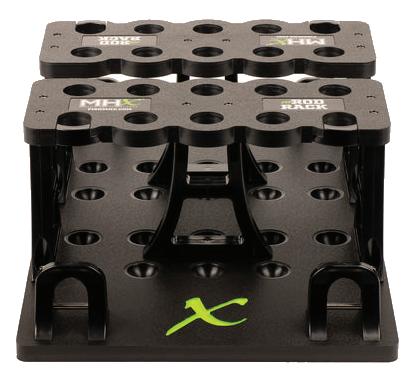





Berkeley County is a wonderland for outdoor enthusiasts, sports bu s, adventure seekers, and water lovers. From exemplary fishing for striped bass, or a trophy largemouth bass, to our hiking trails and water activities, along with scenic outdoors where you can catch a glimpse of white tail deer and gators, Berkeley County has activities to fit all visitors and families.
